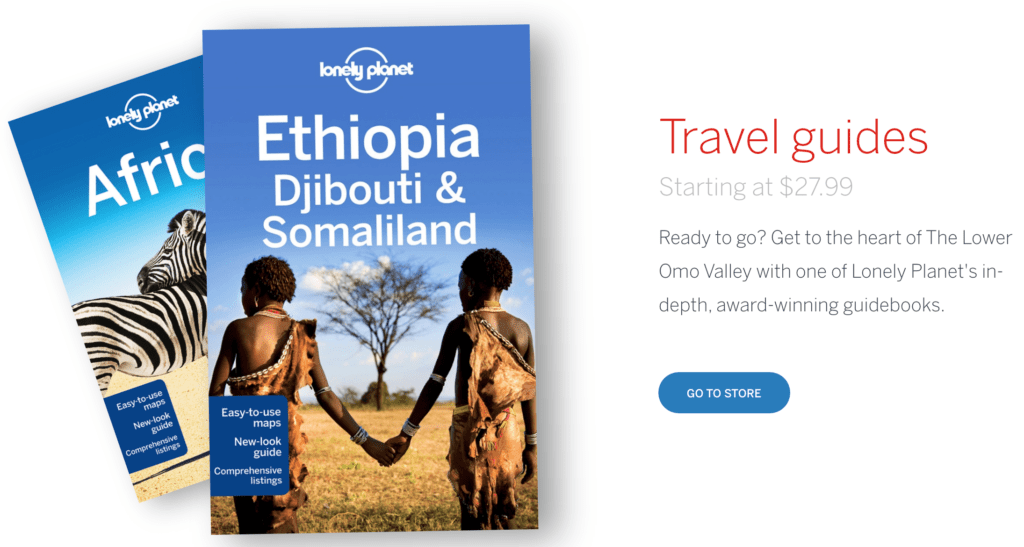
The opportunity to go back and view a land frozen in time in Ethiopia’s South Omo Valley region was unforgettable in many respects. The nine days I spent there weren’t always the easiest but the inside access we had into the tribes of Omo was like something straight out of Discovery Channel. A trip like this is raw, visceral, thought-provoking and simply astounding.
This Ethiopia itinerary across 9 days is meant to give you as much confidence as possible in planning your trip to Ethiopia, as well as a clear idea of how it works based on my personal experience.
BEST TIPS FOR VISITING OMO VALLEY
- Where to Stay – The start and end of your trip is going to include Addis Ababa. The best property in the city has to be the Hilton Addis Ababa which is super safe, comfortable rooms, great service, and in a central location. After traveling through rural parts of Ethiopia you will appreciate the comfort on either side of the trip. We used Booking.com for all of our stays. Alternatively, you can always see if hotel corporate codes might work for you.
- What to Pack – things we didn’t think of packing that we wish we would have were these travel size liquid clothes detergents to hand wash clothing when on the go. Don’t forget over-the-counter medicine, or even antibiotics if you have a sensitive gut like myself! Our Ethiopia packing guide has everything you need to know.
- When to visit – June, July and August are rainy season so not the most accessible time to visit. Aim for September onwards. From January the landscape starts to be more arid.
- Car rentals – If you are planning on travelling elsewhere on your own you will need to rent a car. Save the most money through car rental coupon codes and always start your search with Discover Cars and RentalCars so you know what the best deals are.
- Flights – International flights are never cheap, but with the Skyscanner “Everywhere” feature you can find the best deals. Check how much it would be for you to get to Ethiopia!
- Insurance – Make sure you’re covered for all of your adventure activities with the best travel insurance.
- Hottest deals – Never be without our frequently updated travel deals page.
What we learned pretty quickly, is that for better or worse, there isn’t much information out there about Ethiopia. That’s good in that you’re going to a place that travelers rarely ever get to go but that also means that you have to take a leap of faith in a lot of ways.
The funny thing is, we didn’t even know what our Ethiopia itinerary was going to look like before we got there. The one thing you need to understand is that every trip has to be flexible because a nearby festival might be happening or you might even be lucky enough to find out that a Donga stick fighting tournament is happening the day of. Just keep in mind that the order of things isn’t as important as the experience itself.
9-Day Ethiopia Itinerary To The Omo Valley
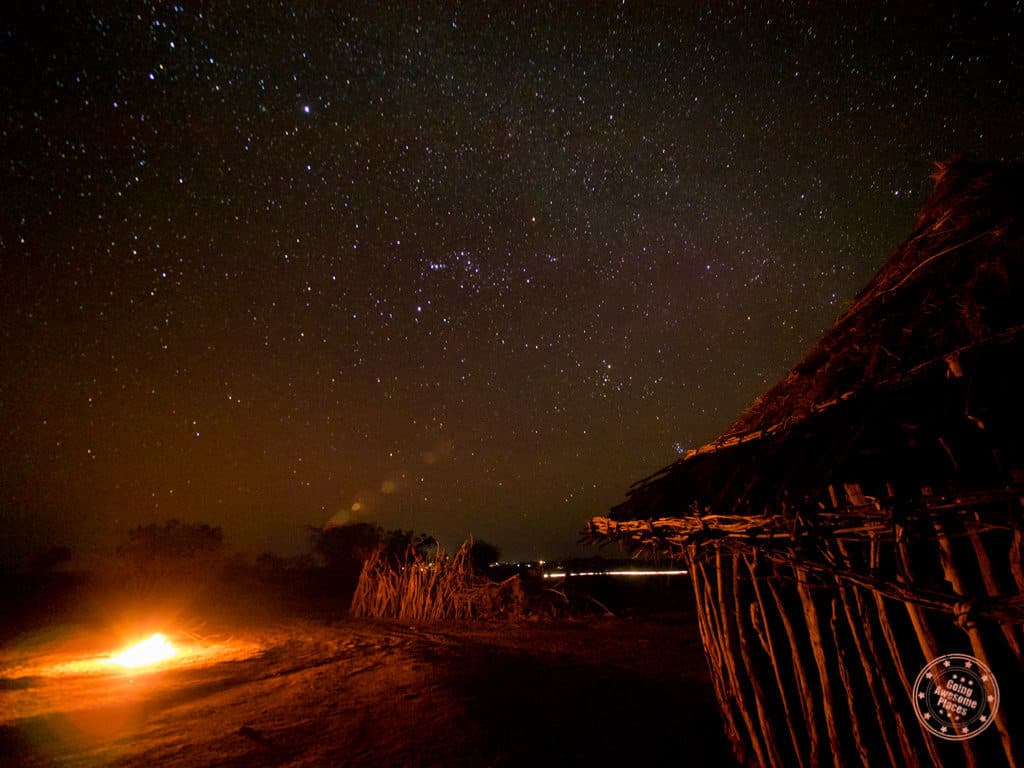
If you’re looking for a starting foundation for your Ethiopia itinerary focused on the Omo Valley, look no further!
Full Ethiopia Itinerary Breakdown
Here’s a day-by-day breakdown of the 9-day Ethiopia itinerary for you to follow along.
Day 1 – Addis Ababa to Arba Minch

It took 2 days of travel to arrive in Addis Ababa but we figured it wouldn’t make sense to include that into the Ethiopia itinerary. The reason it took so long was because we couldn’t get a direct flight from Toronto to Addis Ababa. Instead, one day was spent flying into Washington Dulles, staying overnight, and then catching an Ethiopian Airlines flight.
We were pleasantly surprised with the service of the flight. We were fascinated by our first 787 Dreamliner flight and it definitely helped to have a full row to ourselves.
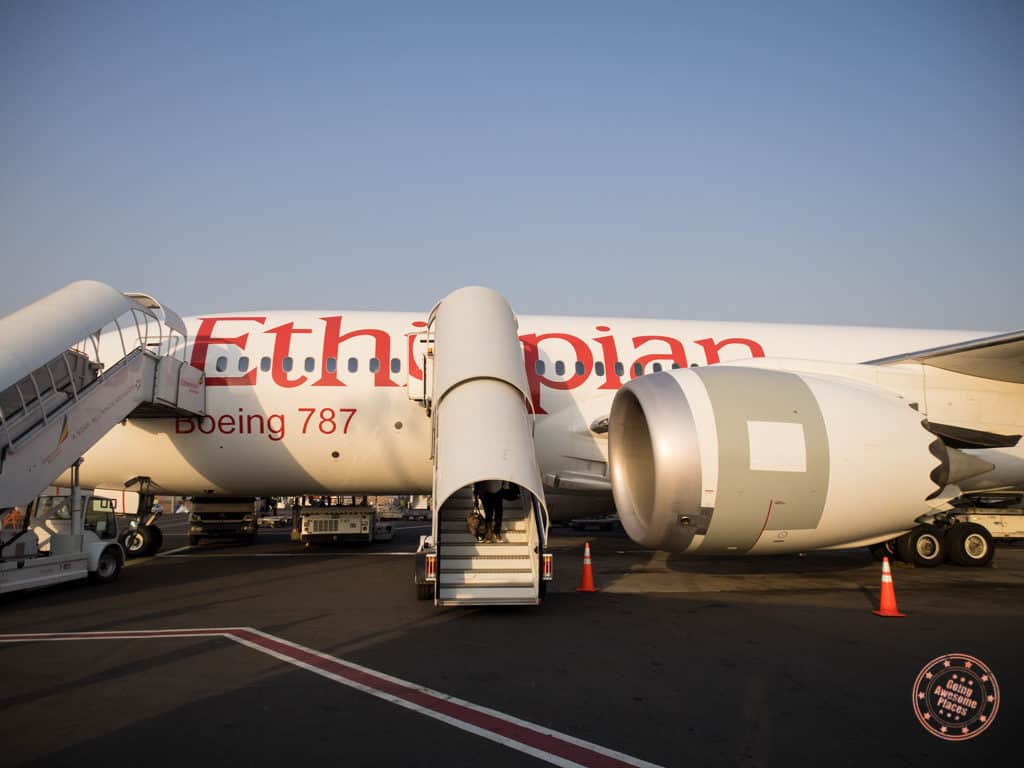
Once we landed in Addis Ababa we went through customs. We thought you needed to have passport photos ready for the visa on arrival but none of that was necessary. Now they have webcams there to take photos on the spot. We just handed in our form, paid our $50 USD, and were on our way.
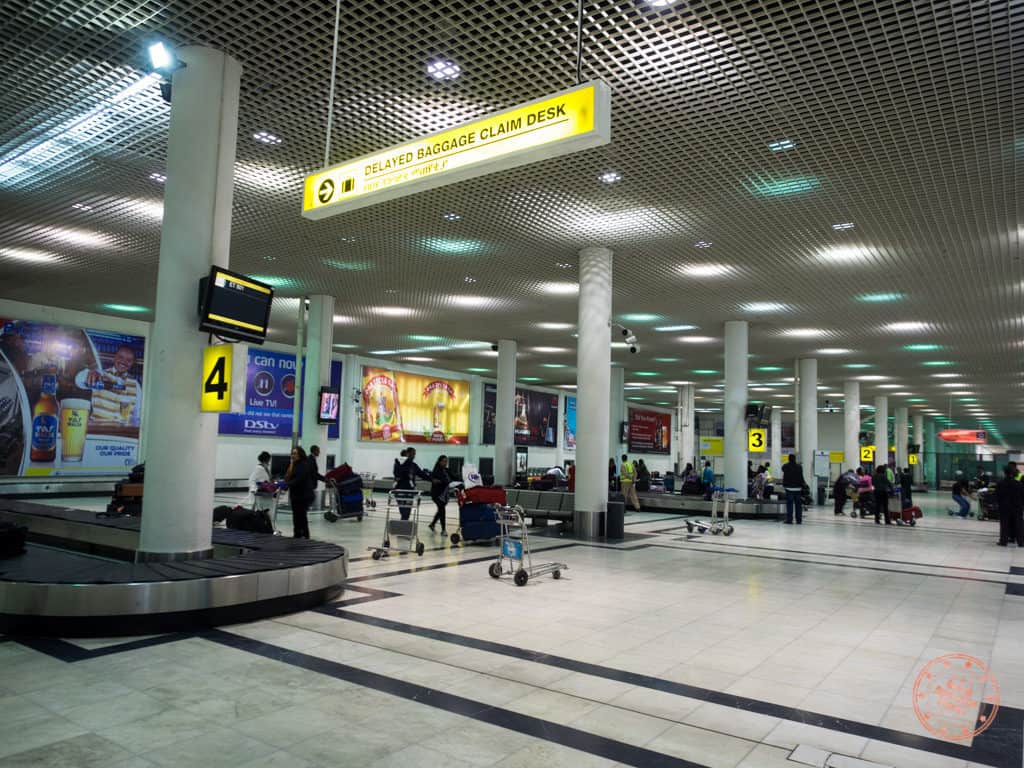
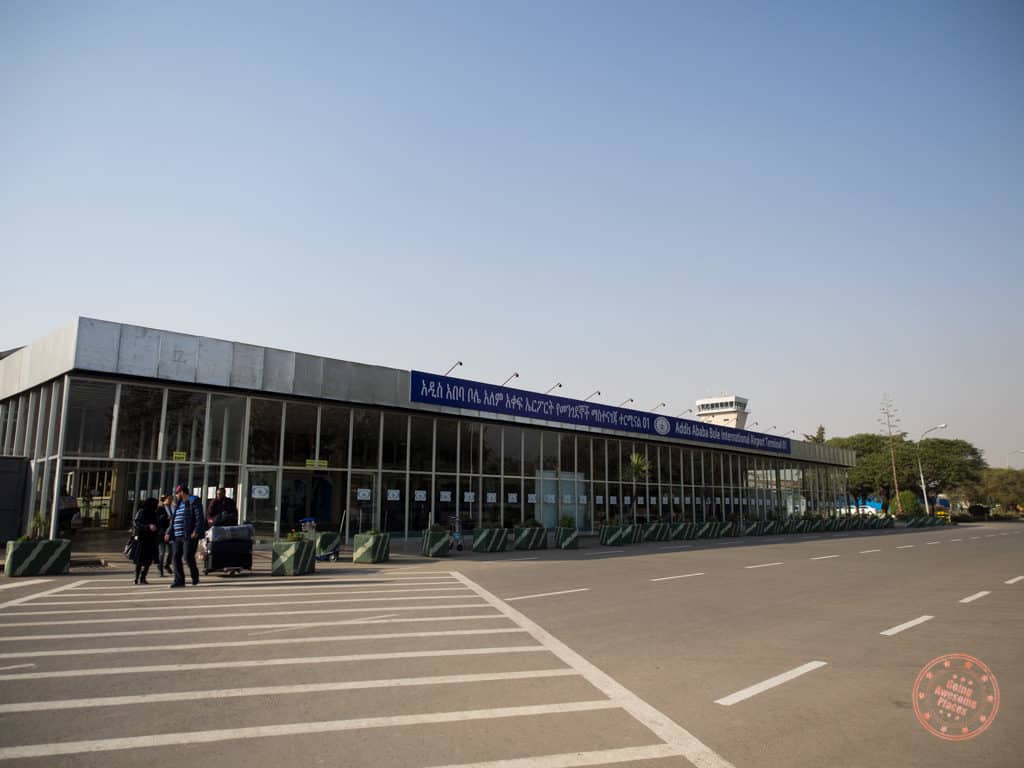
The terminal can be a bit confusing. Our original plan was to stay at the airport for our 6-hour layover but we were foiled in several ways.
First, the domestic flights are in a totally separate terminal and it was too early to check-in. There was also no wifi or lounge to speak of so we walked back to the international terminal to see if we could do anything there, but again we’d be stuck there doing nothing.
We decided to go into the city. Without knowing where we could go for internet and food, we felt that the easiest and safest option was to go to a hotel and hope they had Wi-Fi. My friend approached a random hotel shuttle van waiting around and explained to the driver that we needed a ride to the hotel. It took a while for him to understand that we had no reservation but after some price negotiation, we were on our way.
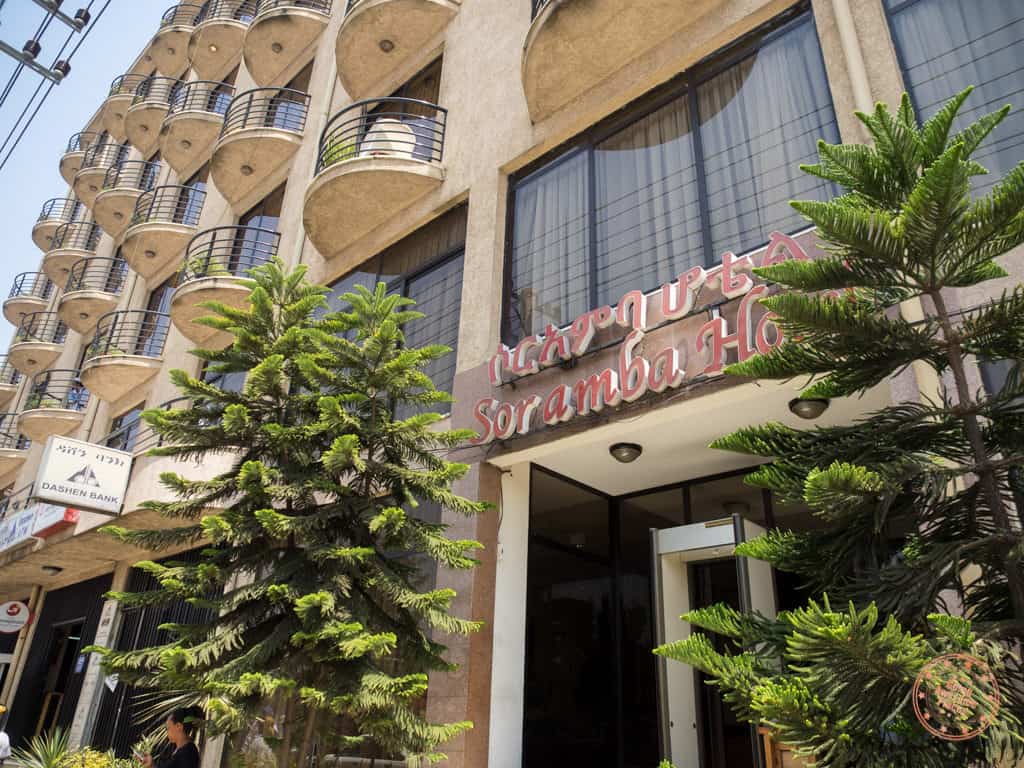
The hotel ended up being the Soramba, which was nowhere close to the airport. With close to 4 hours to kill, we had the buffet breakfast, watched some CNN, caught up on emails, and hung out in the restaurant. Addis Ababa is also the best place to find ATMs, they are seriously limited so try track them down in hotels. Credit cards are not accepted in most places so you will need to carry some cash.
We caught a cab back to the domestic terminal and landed into the southern gateway city of Arba Minch by 4 PM. The flight was interesting because it made a stop at Jimma where a group of locals got off and a new batch came on.

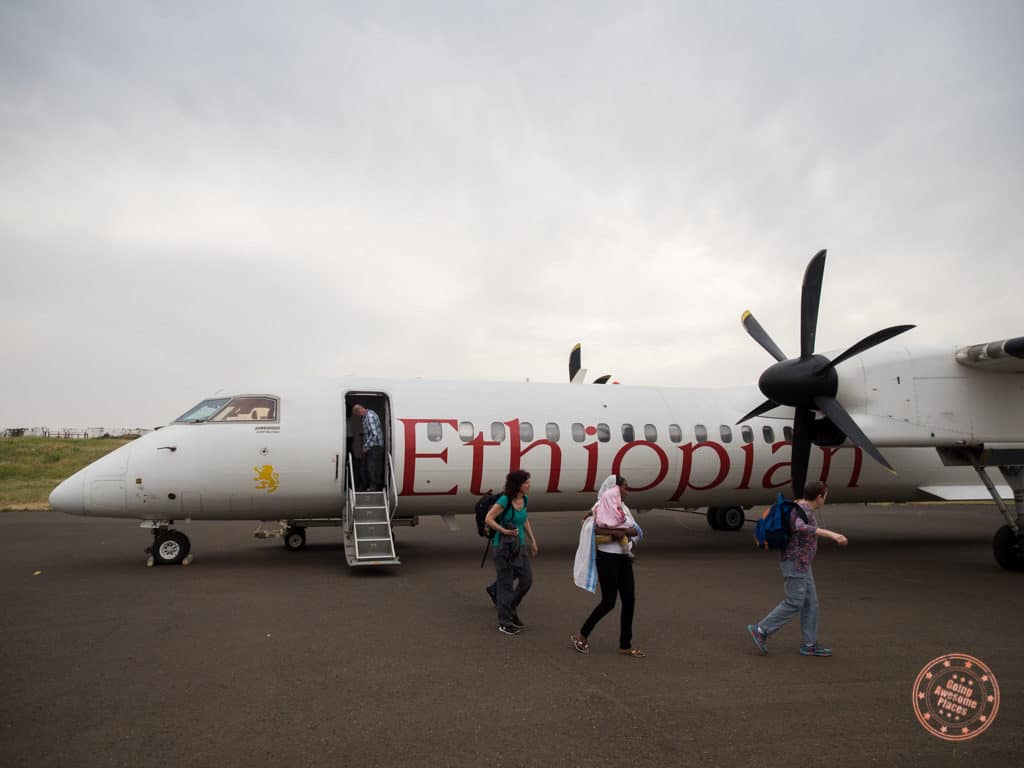
Which guides did we use and how did we plan our trip?
For more details about how we came to a decision for everything we did on our trip, what we packed, things we learned along the way and just inside knowledge about how travel in Ethiopia works, make sure to read the full guide.
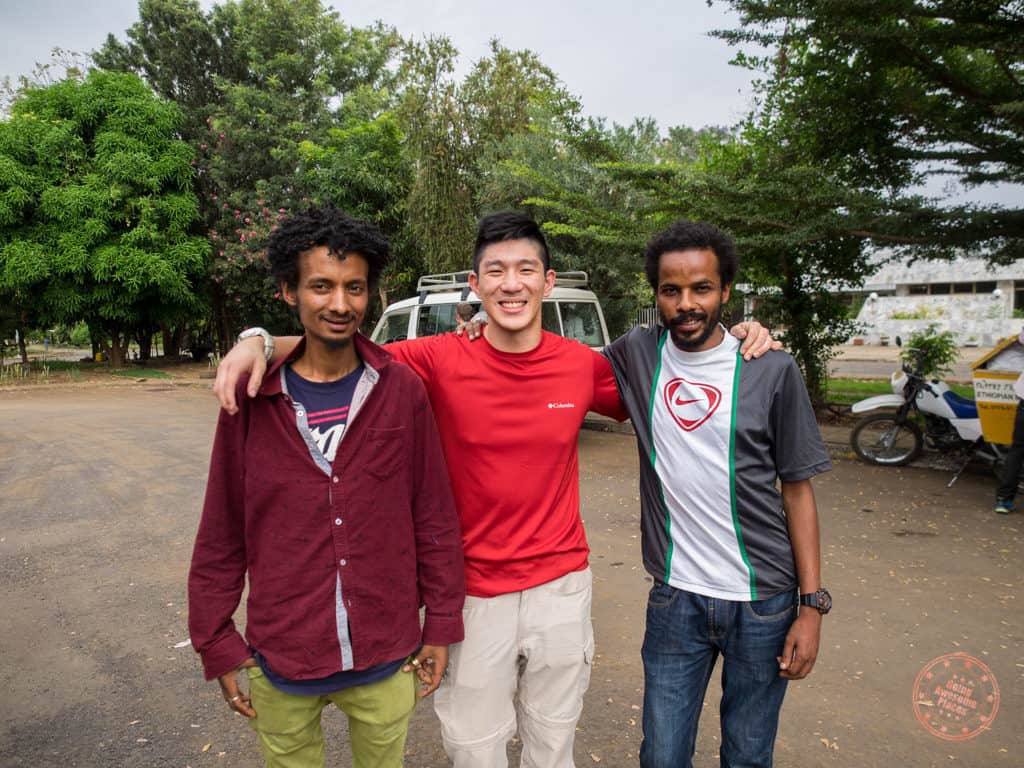
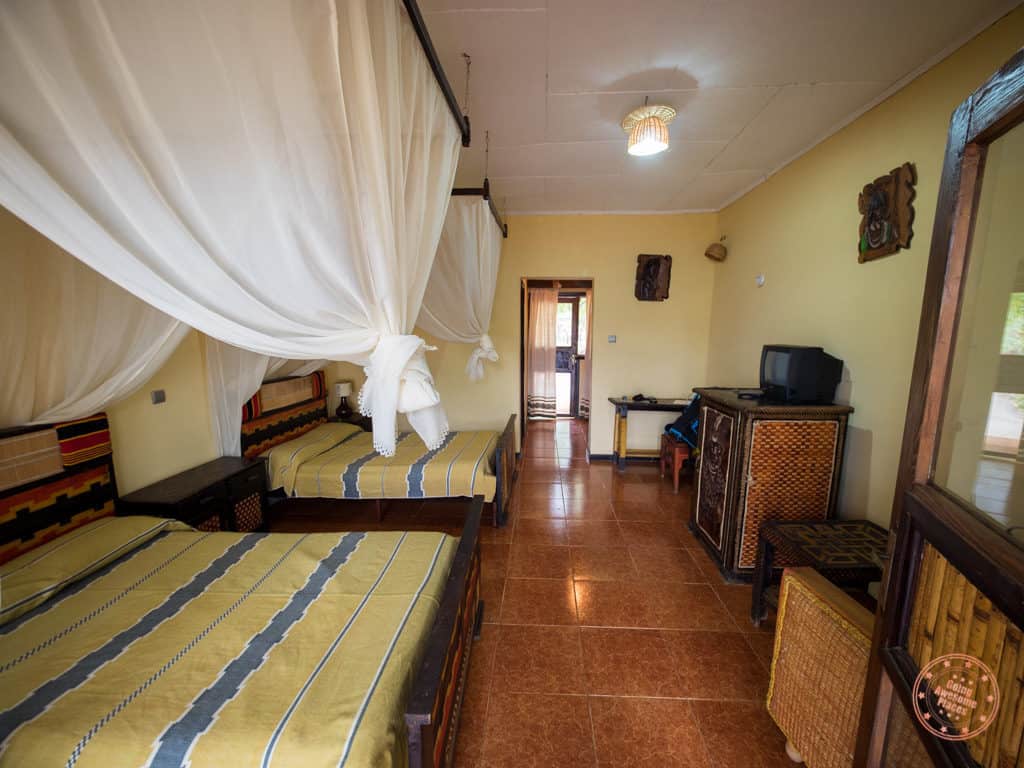
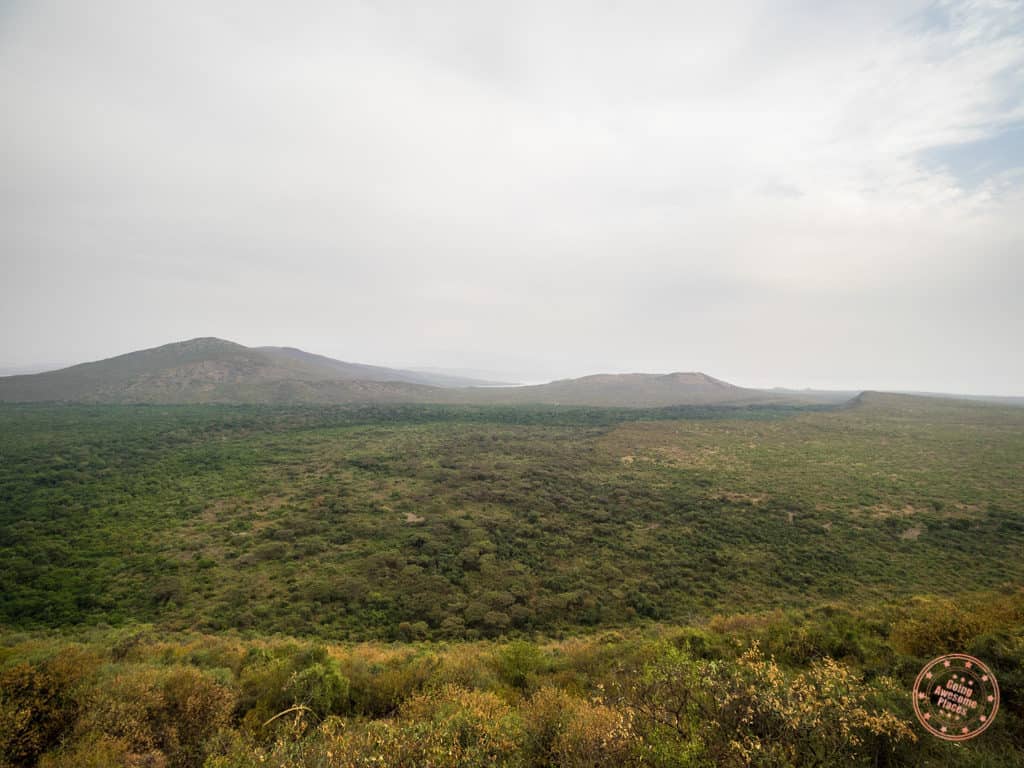
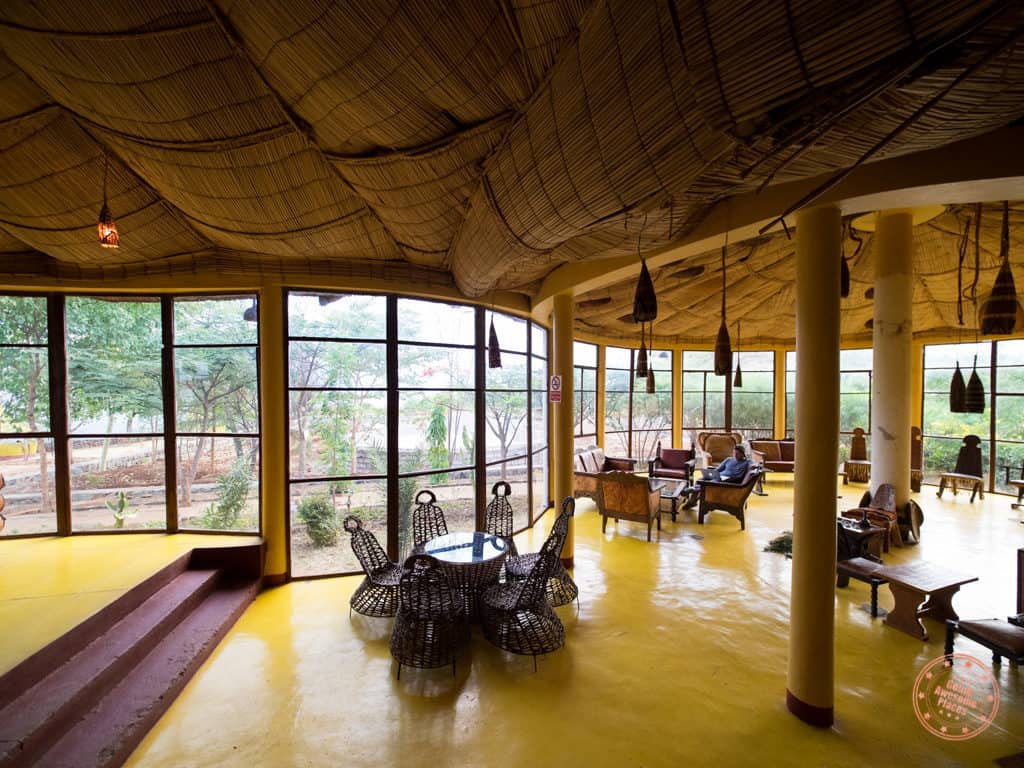
After picking up our bags we met our two guides and were driven straight to our lodge, Emerald Resort (formerly Swaynes Hotel) which ended up being our only destination that day. The fresh papaya welcome drink that was offered to us, followed by that gorgeous view of Nechisar National Park, solid wifi in the dining hall and dinner itself made it quite the relaxing way to end the day.
If we arrived earlier there was a chance we could’ve visited the Dorze tribe but we were content with just taking it easy.
TIPS:
Ethiopian Airlines – I don’t understand why they still use two prong headphones but they do. Bring your own adapter if you want to use your own headphones.
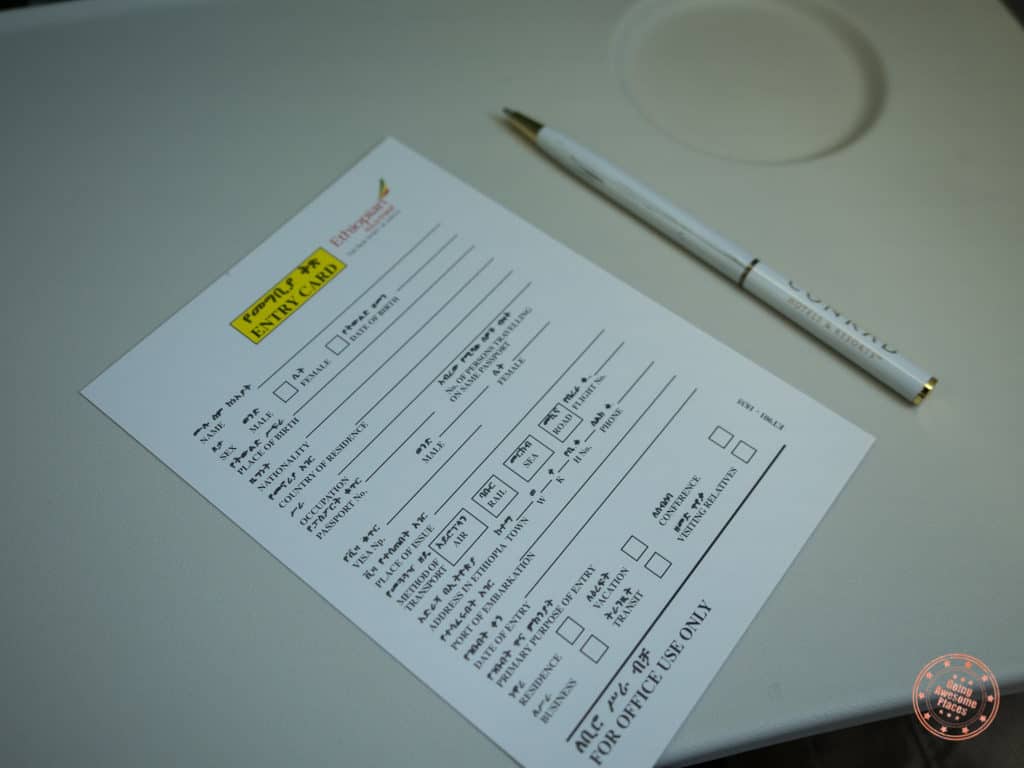
Customs – Make sure you have $50 USD in hand to pay for the visa on arrival. The form itself is pretty self explanatory but it will ask you for an address. We knew we were going onwards to Arba Minch but we didn’t know the specific hotel we were staying at. Luckily, I asked our guides beforehand for a specific hotel name to write here and they gave us “Paradise Lodge”.
Day 2 – The Road to Jinka
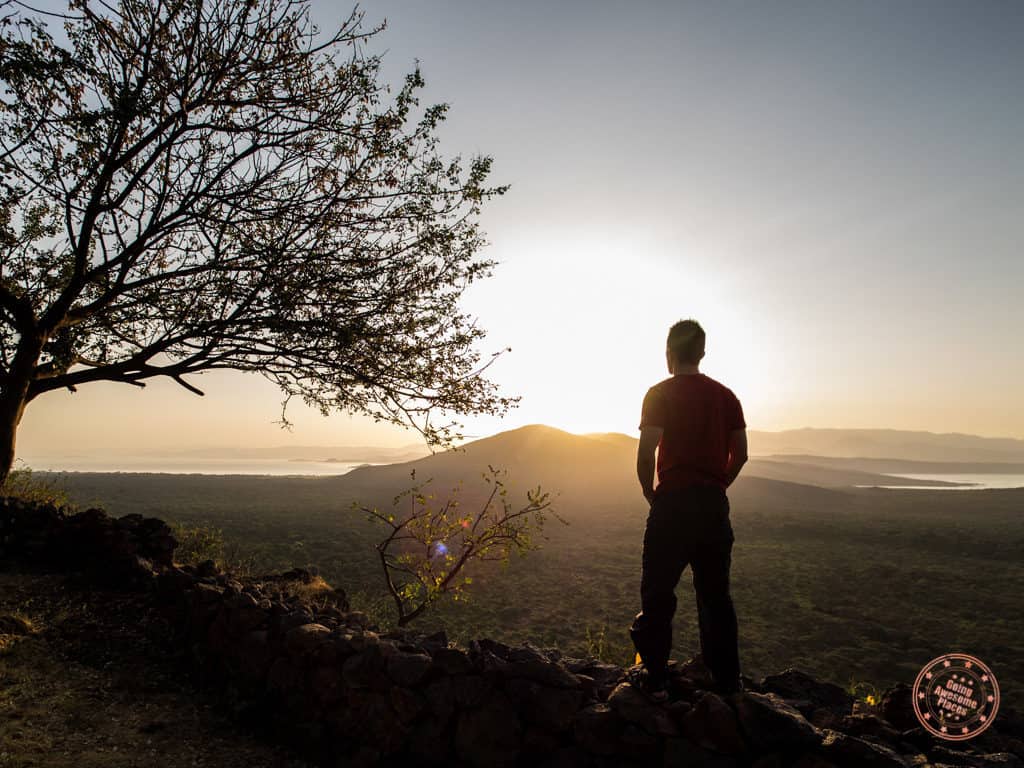
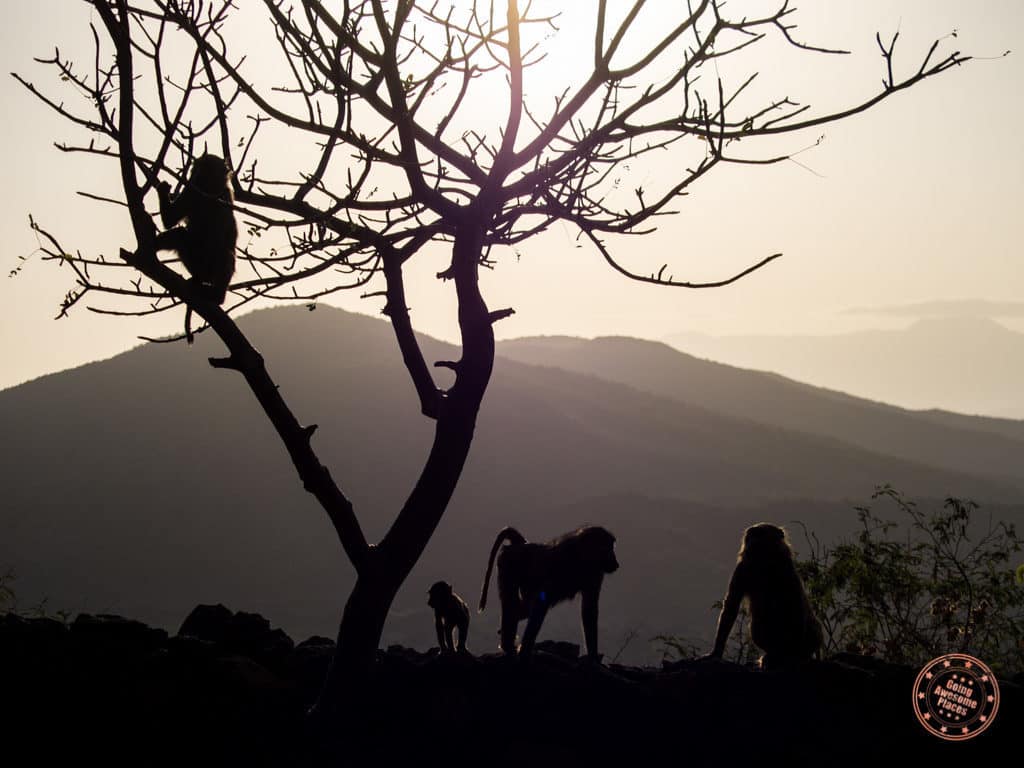
We were packing up and getting ready for breakfast when an unexpected family of monkeys passed through the “backyard” of our room. We couldn’t believe our eyes as young and old ones made their way across.
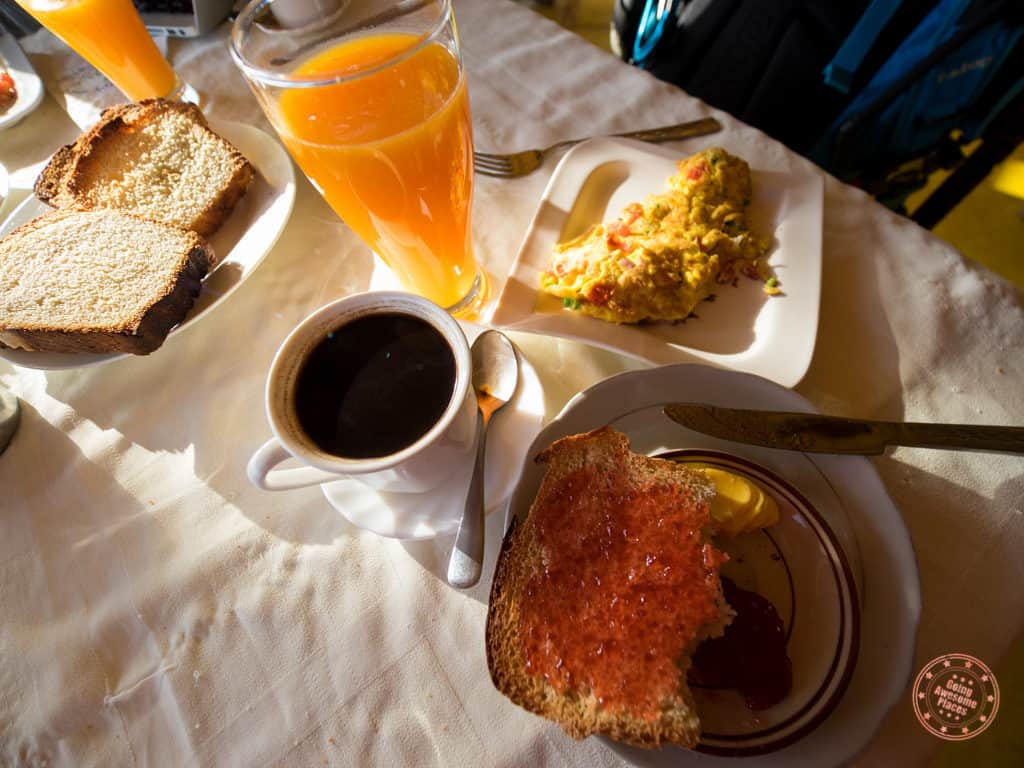
The breakfast was a very no-nonsense kind of Western food which we definitely took for granted at the time. We loved all the comforts of the lodge, the view, and the food but we knew that it was going to be a different kind of experience for the rest of our Ethiopia itinerary.
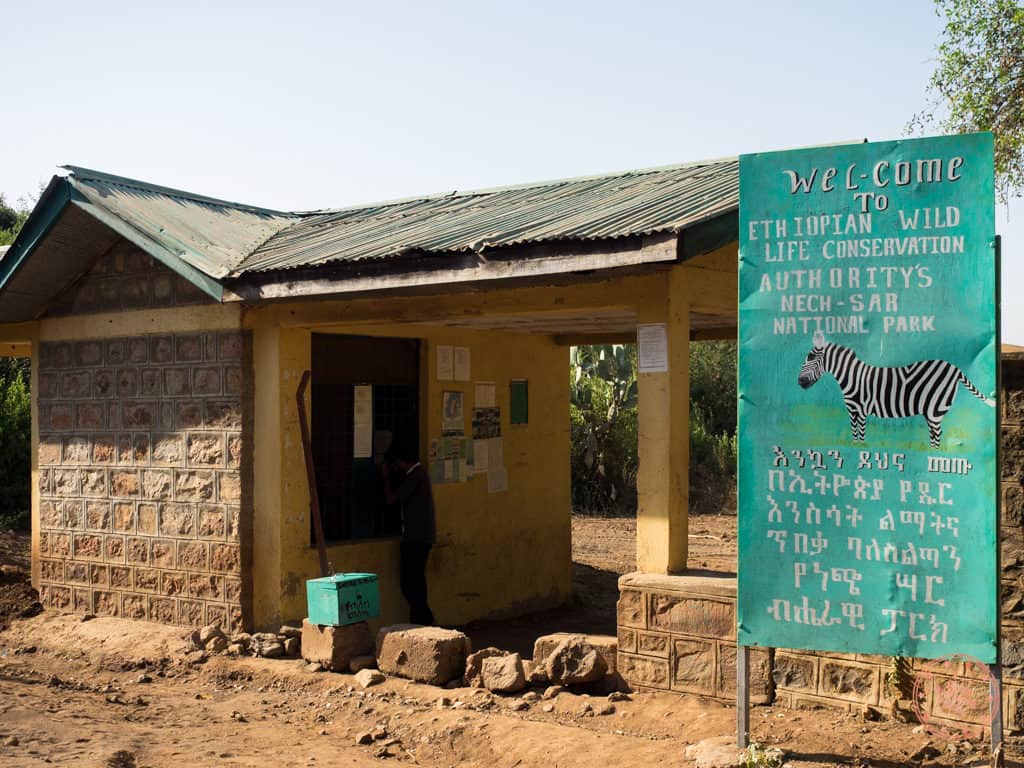

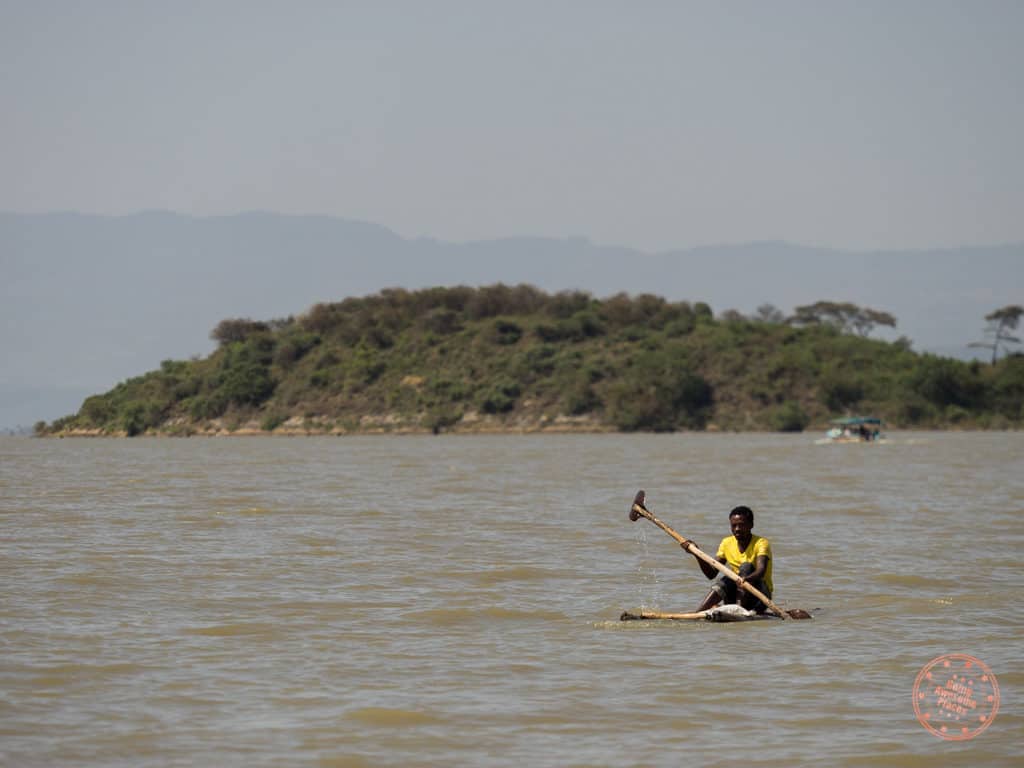
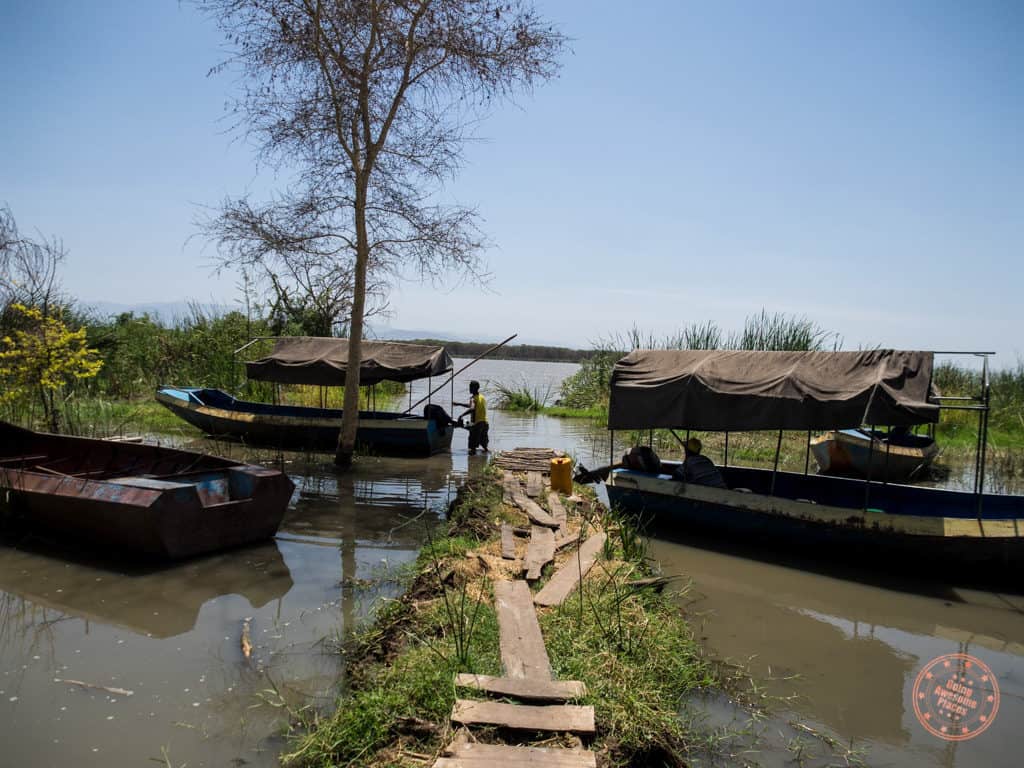
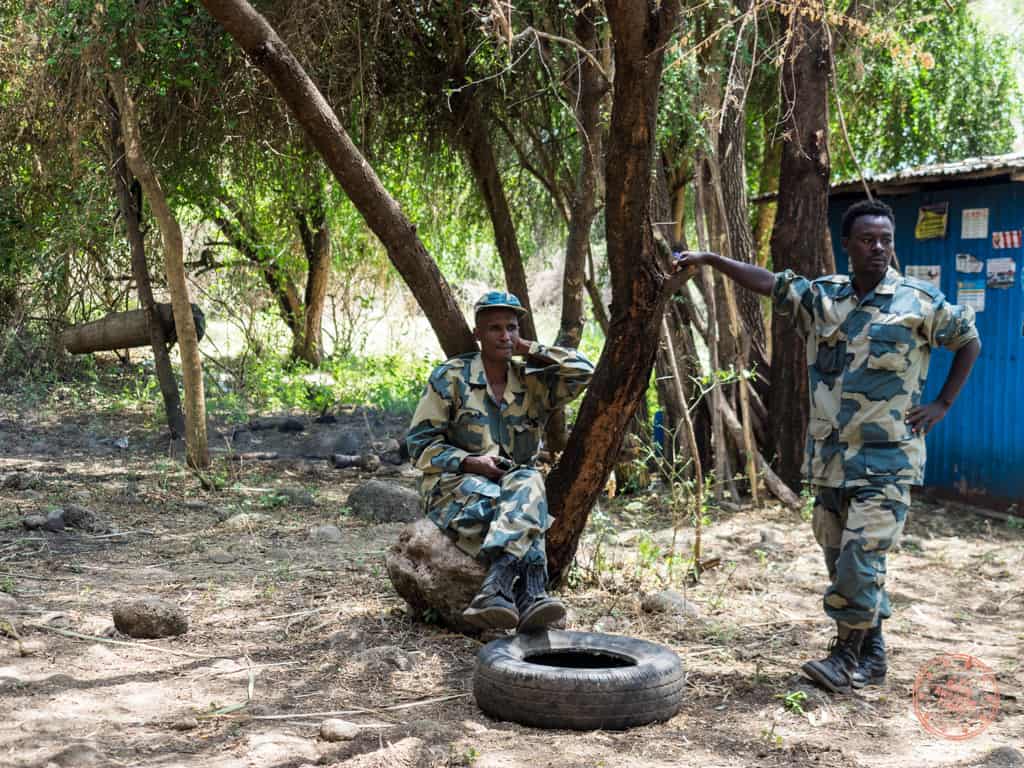
Our first stop of the day was Lake Chamo, which is directly south of Arba Minch, and truly the real start to our 9-Day Omo Valley Ethiopia itinerary. We had a private boat that took us out onto the lake for a leisurely ride. There was a bit of hype around seeing hippos but with the sun beating down on us chances were low.
We unfortunately didn’t see any hippos but we did see huge crocodiles and a local boy paddling by them and we were scared for his life even if he didn’t appear to be! The lake was also a great opportunity to see a ton of large birds, including the majestic pelicans making acrobatic dives.
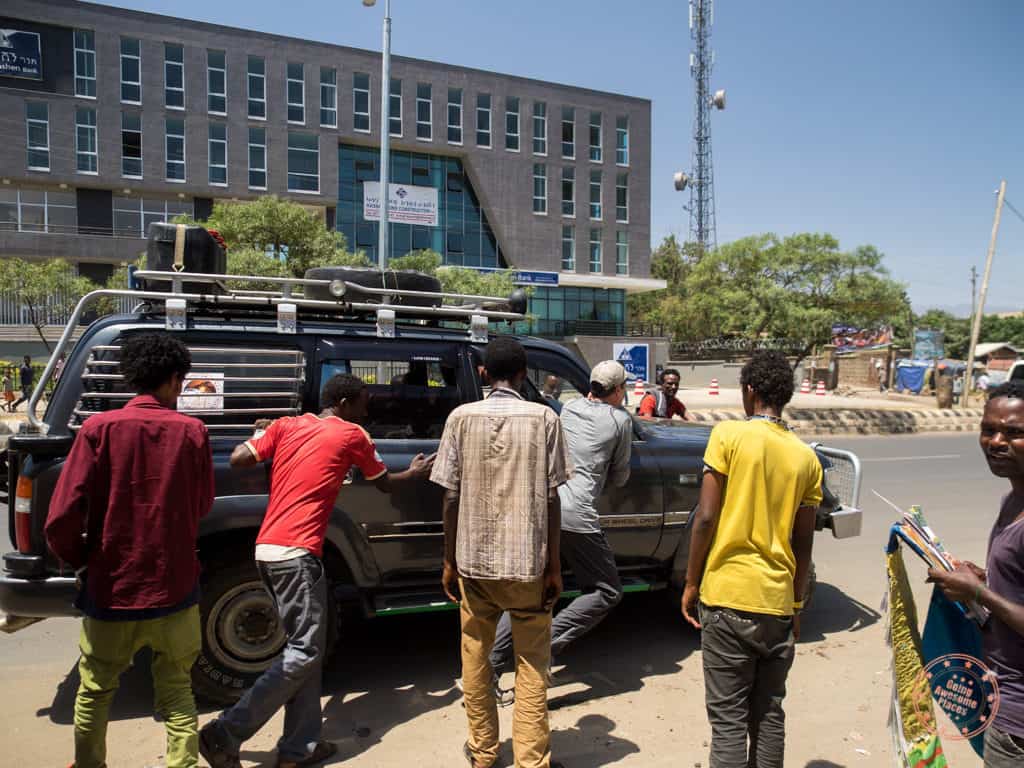
Things got a little interesting in the afternoon. Needing to go back to town to cut our micro-SIM cards to nano-SIM size (more on data in Ethiopia in the detailed planning guide), we drove back into Arba Minch.
As we pulled onto the main street, our 4×4 broke down. Our guides recommended grabbing lunch in town while we waited for a replacement car. Lunch was my first time eating real Ethiopian food and it was an adjustment to eat with my hands in Hungry Hippo fashion, almost fighting for our food before it was inhaled by our guides who were much more adept at eating this way.
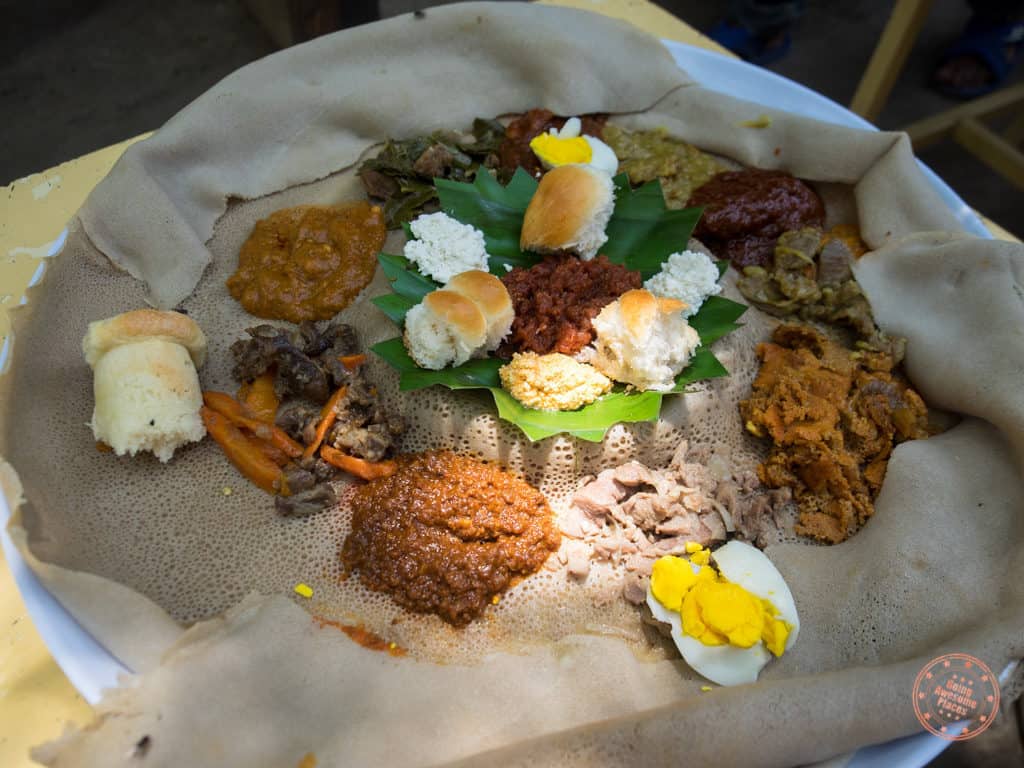
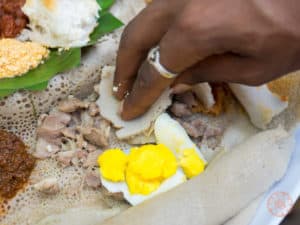
Ethiopian food comes out on a large circular platter and includes a large pancake/crepe called injira. On top of the injira, there are evenly spaced scoops of various mixes of meat, vegetables, and spices. To eat you pull off a palm-sized piece of injira, roll it in a semi-circle and use it like tongs between your fingers to grab what you’d like.
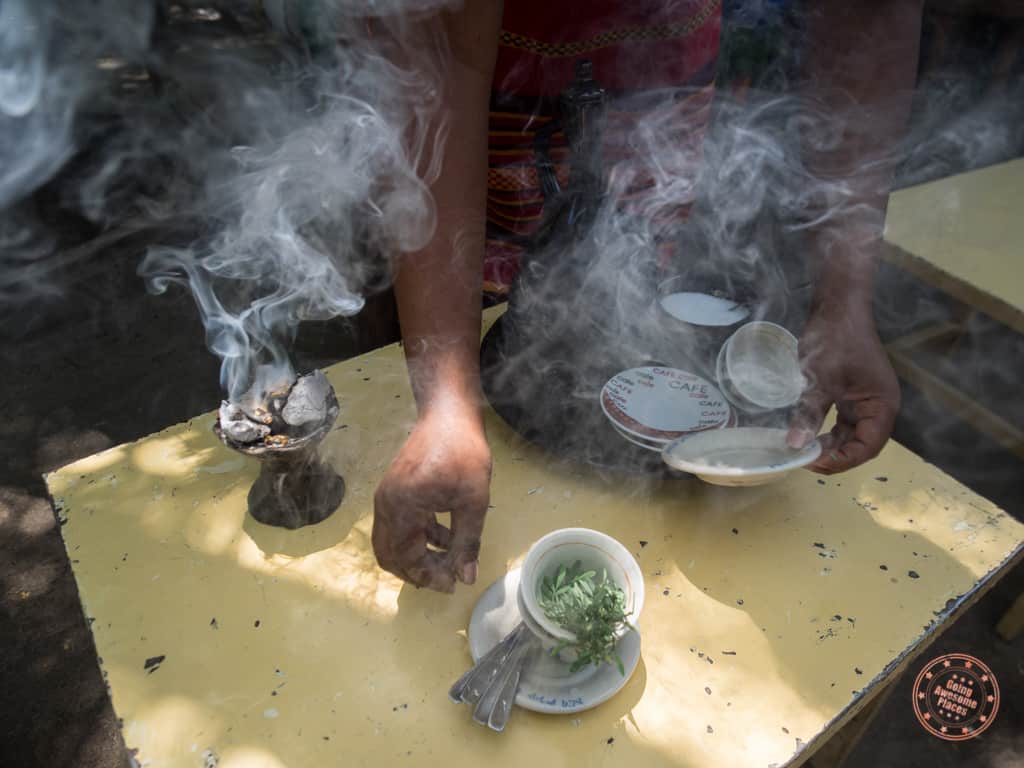
This was also the first time during our Ethiopia itinerary we were able to be part of a proper Ethiopian coffee ceremony. Coffee is made by a special woman in a ceremonial tent and has a lot of rituals during the process. After brewing the coffee, they use burning incense to cleanse you and ward off evil spirits. In a small cup, she pours the coffee from the pot, adds a concerning amount of sugar, and then you mix it all together. They don’t use a filter during the brewing process so it has a grittier taste and thicker consistency, with quite strong and sweet flavors.
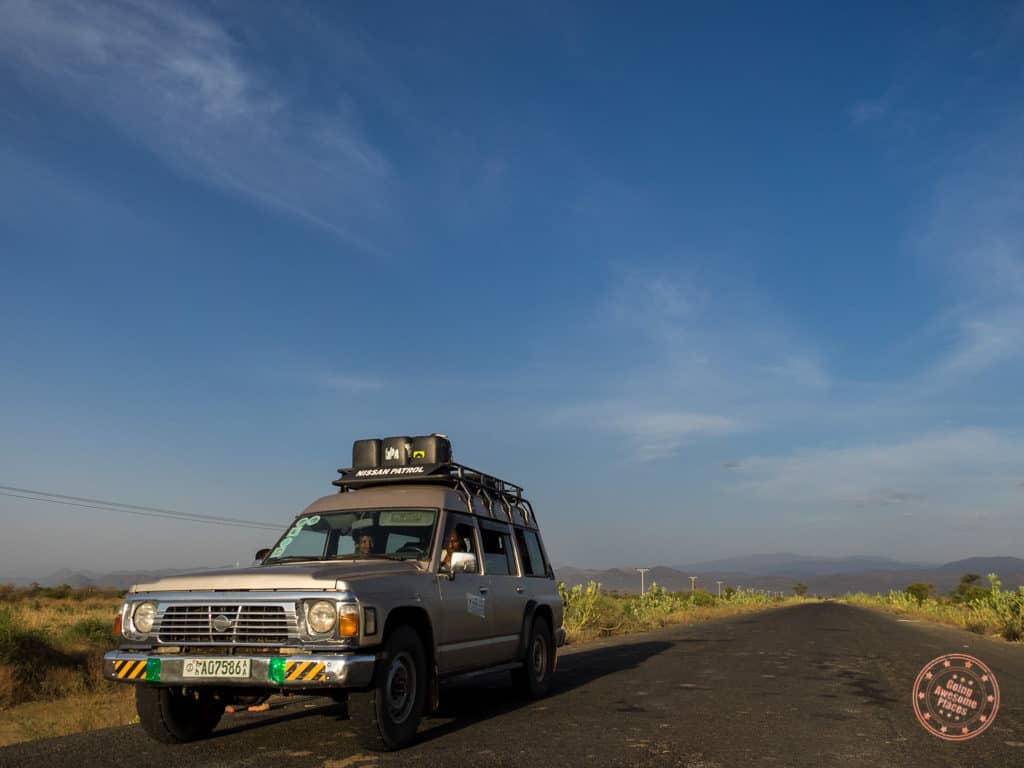
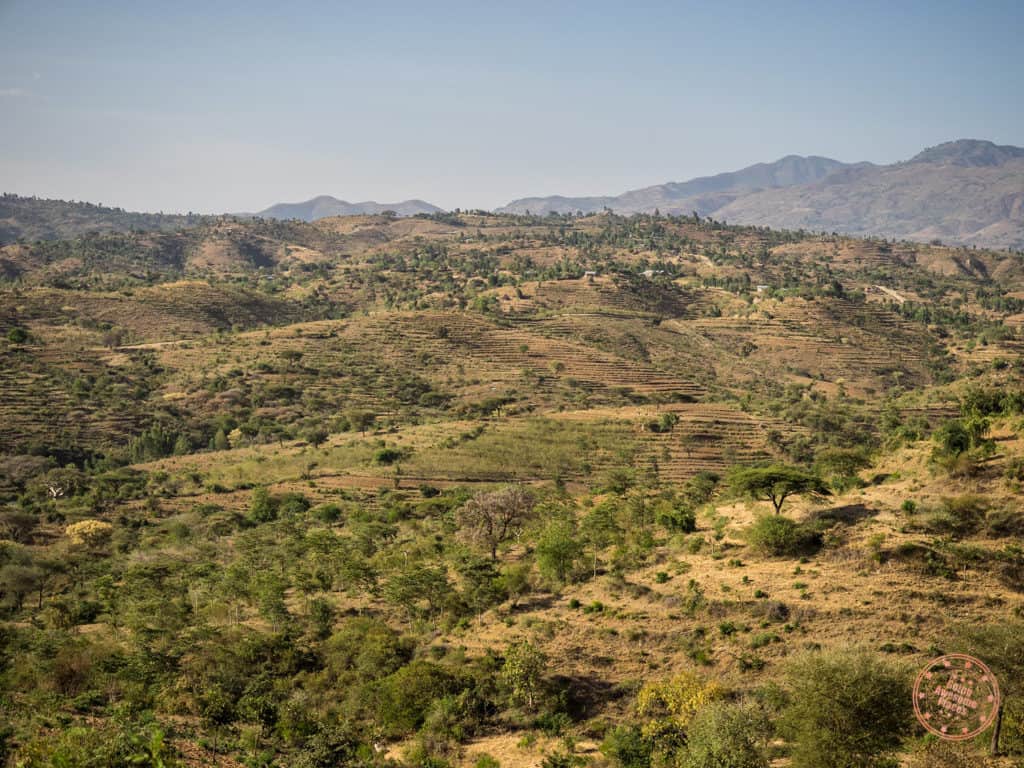
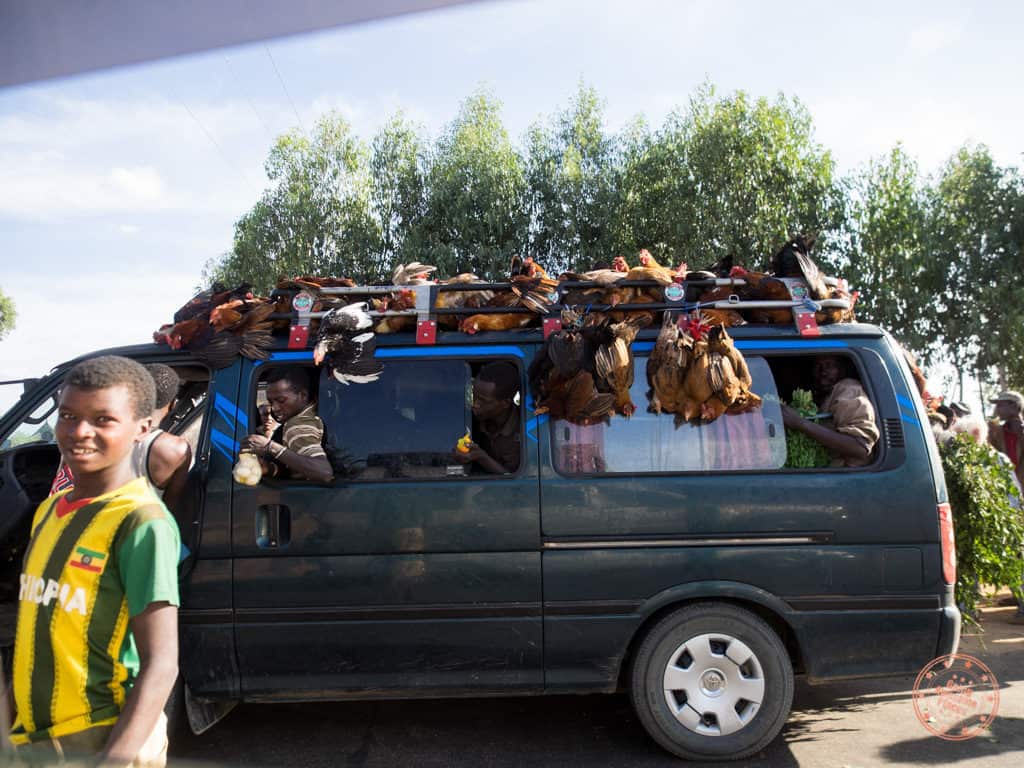
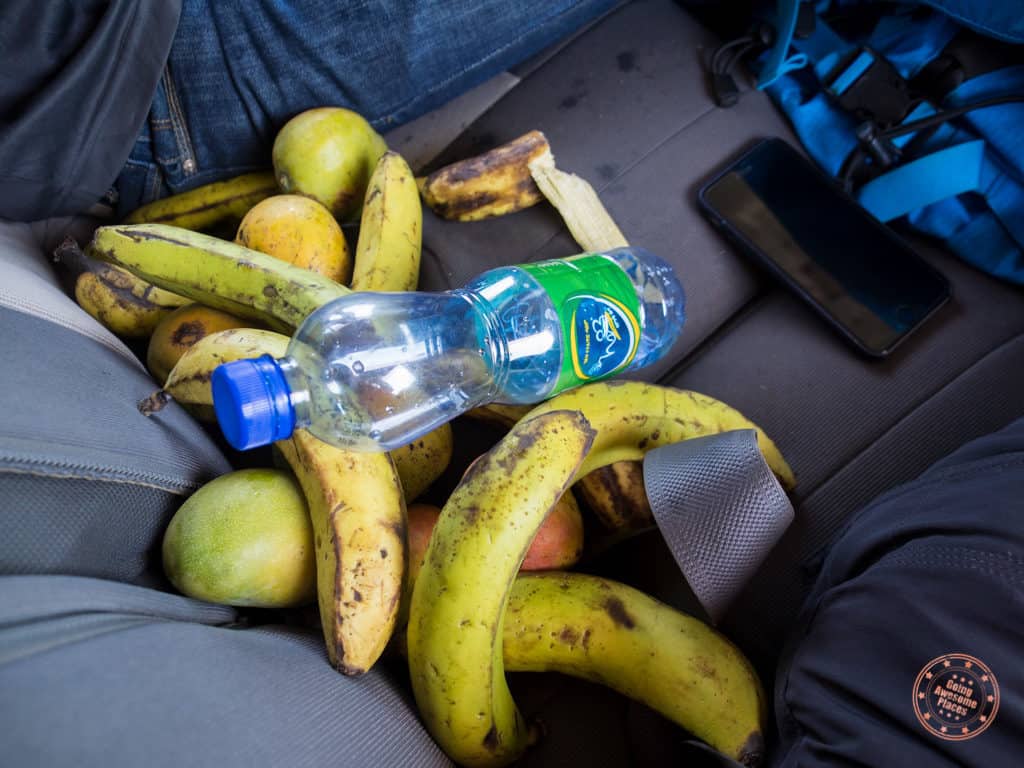
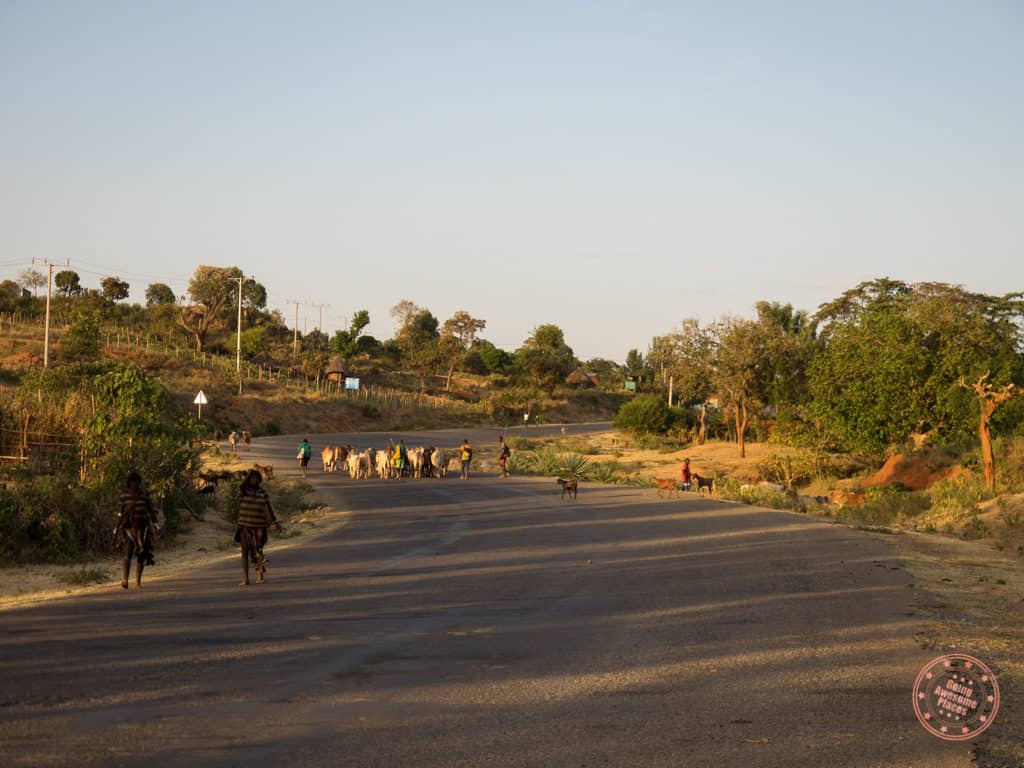
The drive from Arba Minch to Jinka takes about 5 hours with vast landscapes and several villages to see along the way. We stopped a few times to see things that our guides would point out or to buy fruit from the kids on the side of the streets.
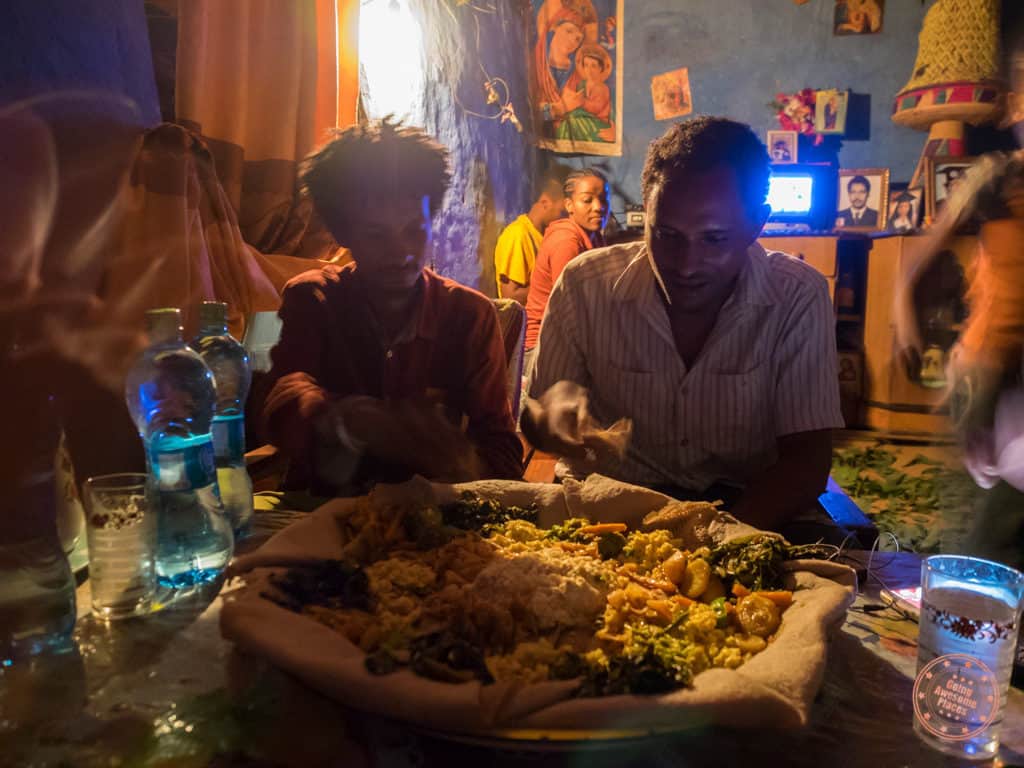
We arrived in Jinka right before sundown at Orit Hotel where we had a bit of downtime to unpack before heading over to our guide’s Mom’s house. This was a special treat because we got an inside look into real modern homes of Ethiopia and a traditionally cooked meal outside of a restaurant. We were very gracious to them for allowing us to enter their home and intrude in their evening as guests.
TIP:
There’s going to be a ton of amazing scenery along the drive to Jinka. Don’t be afraid to ask your driver or guide to stop over wherever. There were a ton of shots that I thought I could get later but never did.
Day 3 – Start to Omo Valley itinerary/evening with the Mursi Tribe
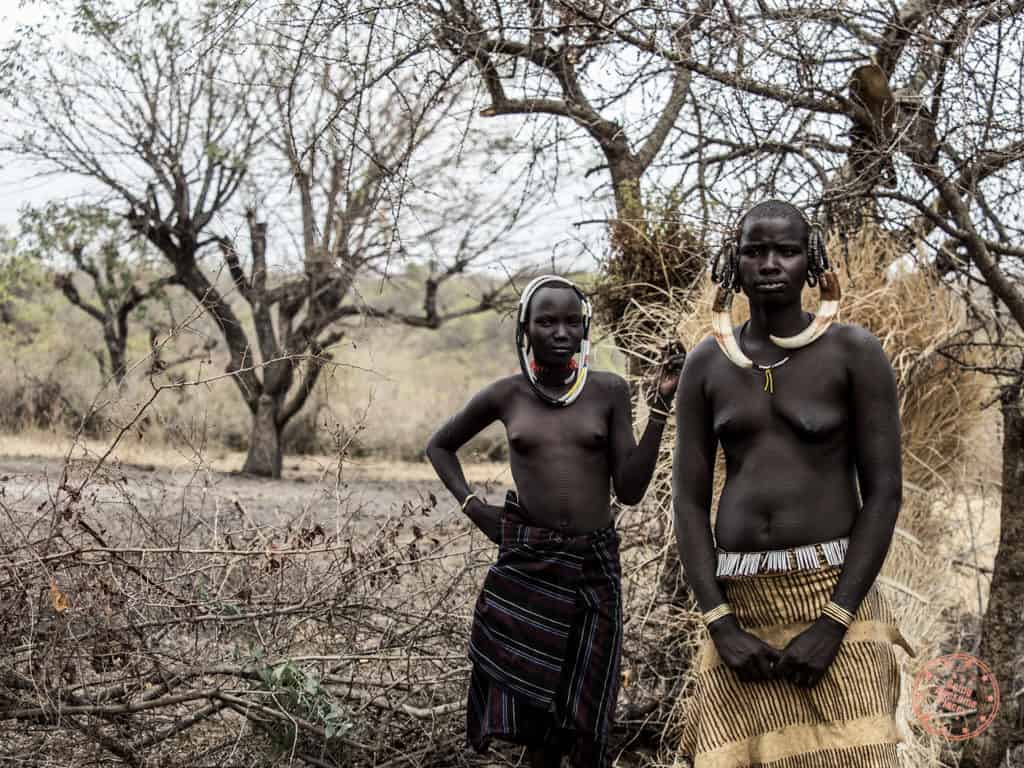
Starting on day 3 of our Ethiopia itinerary out in Jinka, we had the morning to grab breakfast in town and check out the South Omo Research Centre Museum. We also finally got to see the famed Mursi tribe in this part of the Omo Valley tribes itinerary.
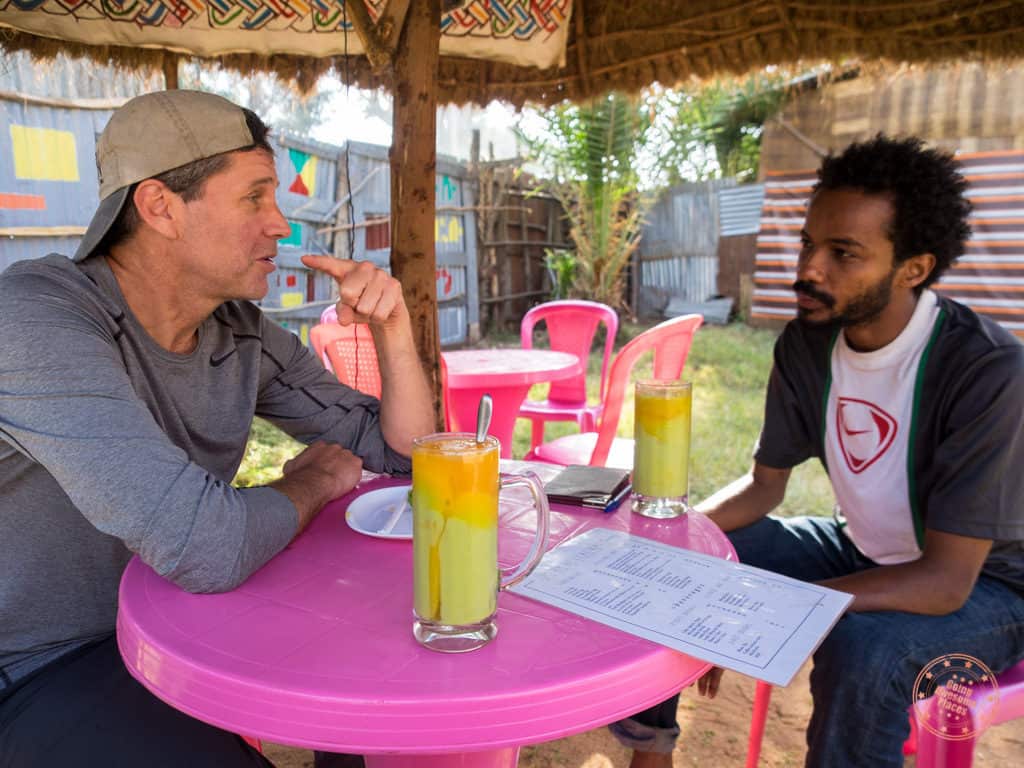
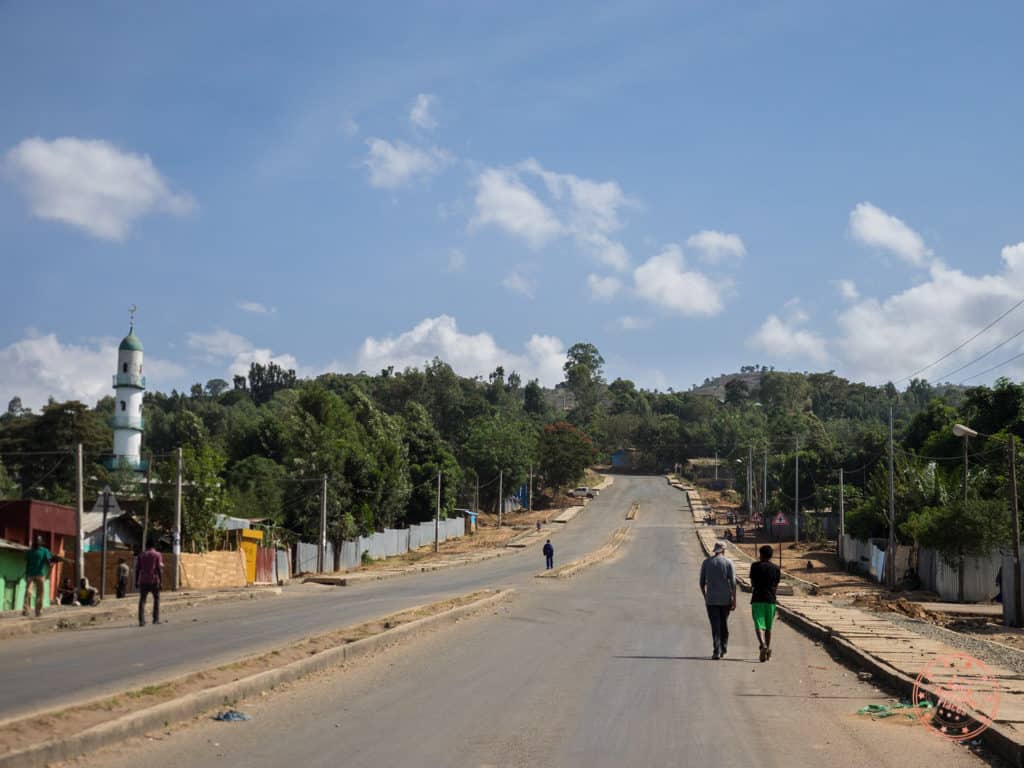

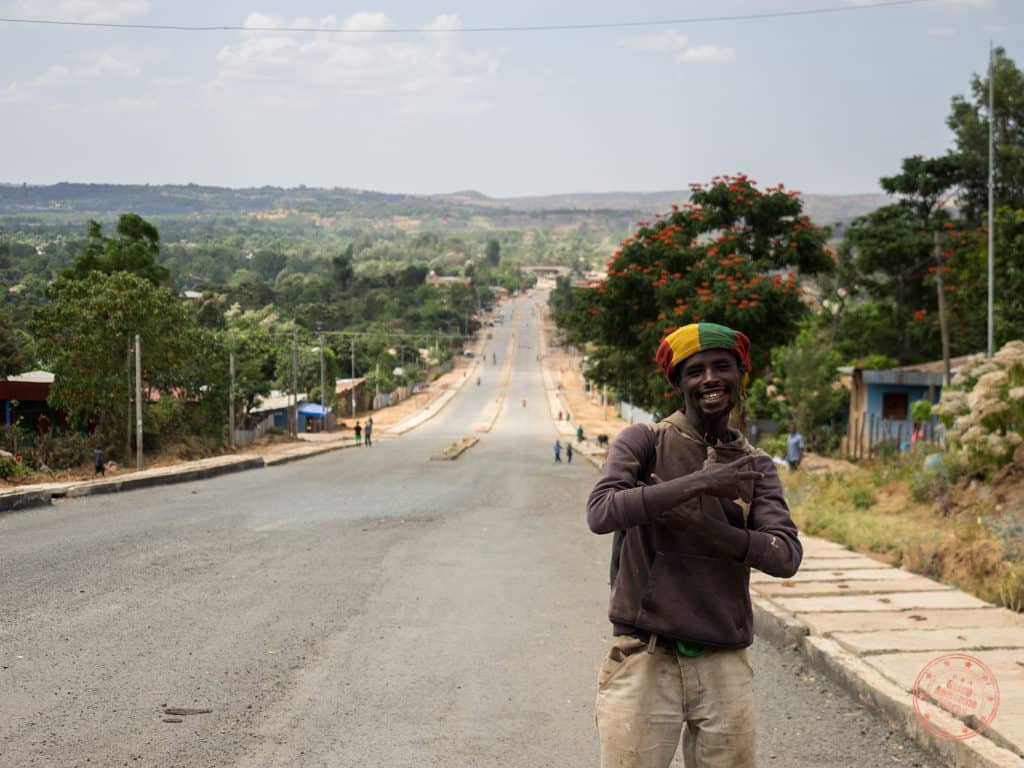
The museum was a good precursor to all the different tribes we’d later see through our Ethiopia itinerary. A lot of research has been done on the tribes of the region and there’s a very thorough set of displays that break down each one.
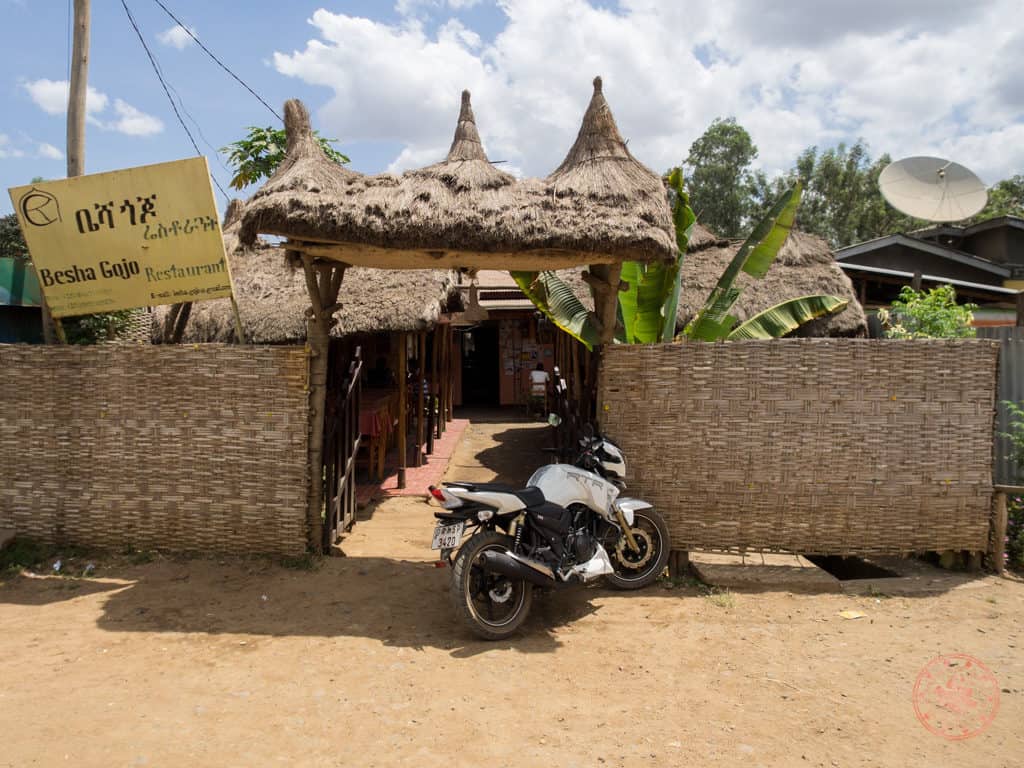

We grabbed some food in Jinka, loaded up supplies, and purchased a few more recharge cards for our phones. We also picked up Lala, who turned out to be our local guide into the Mursi tribes.
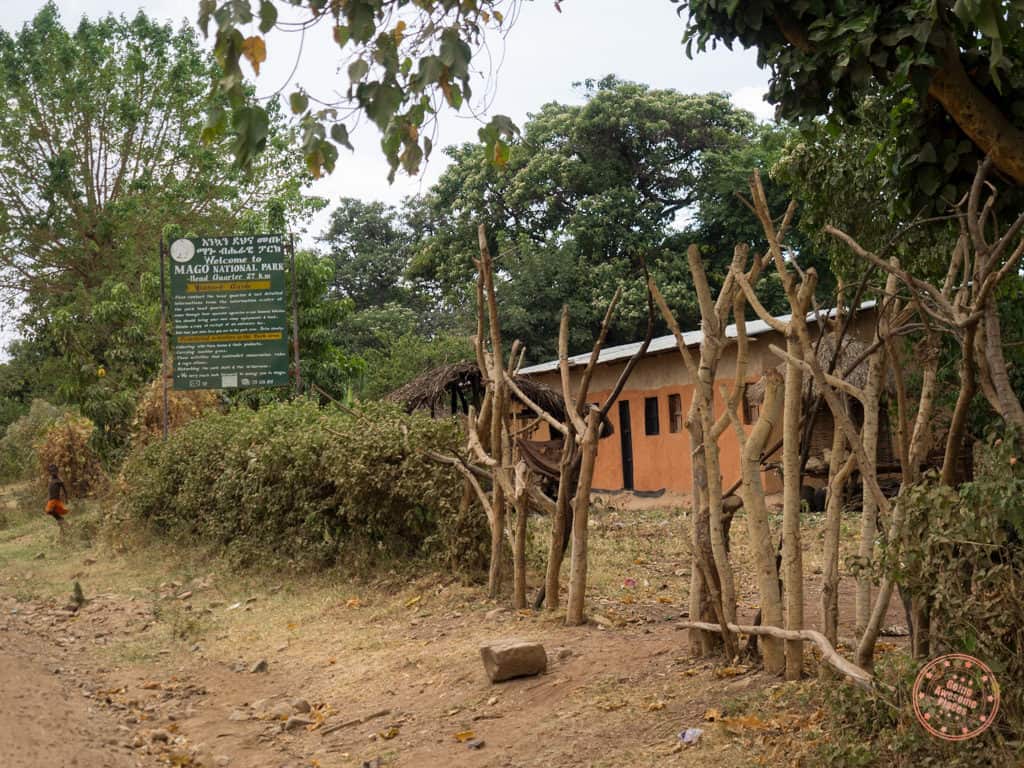
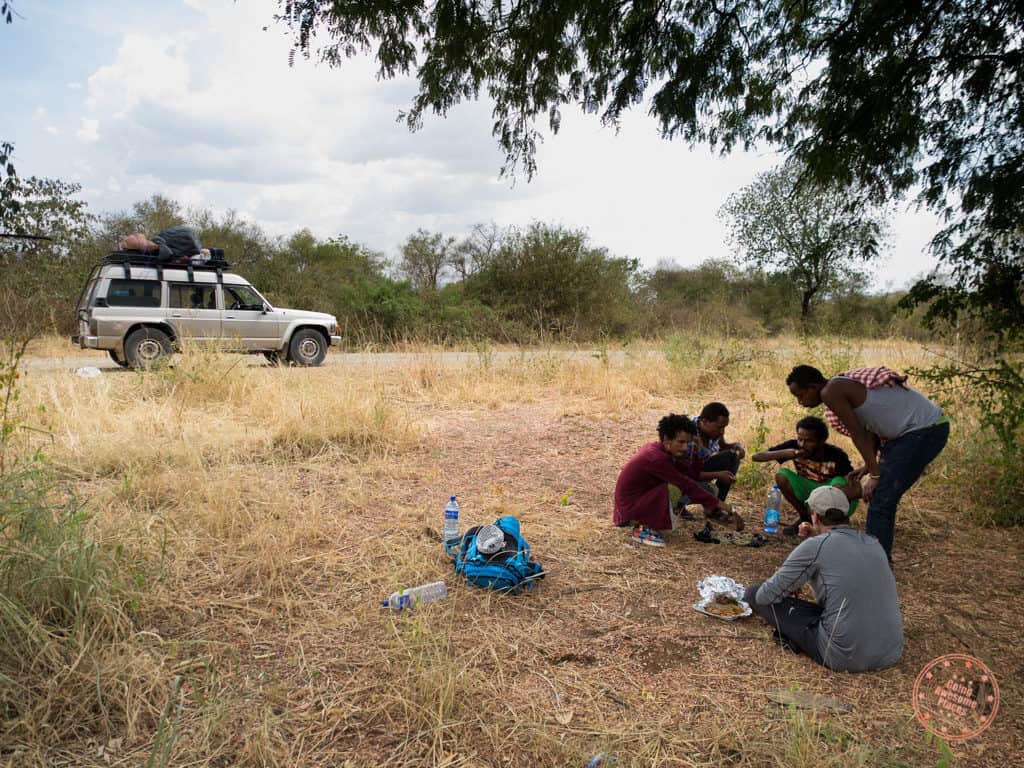
The drive into Mago National Park was long, with mostly unpaved terrain as we twisted through the mountains. There were plenty of opportunities to take photos along the way with outstanding views of the twists and turns in the roads. There were also a few scout stations along the way which we paid before continuing our journey.
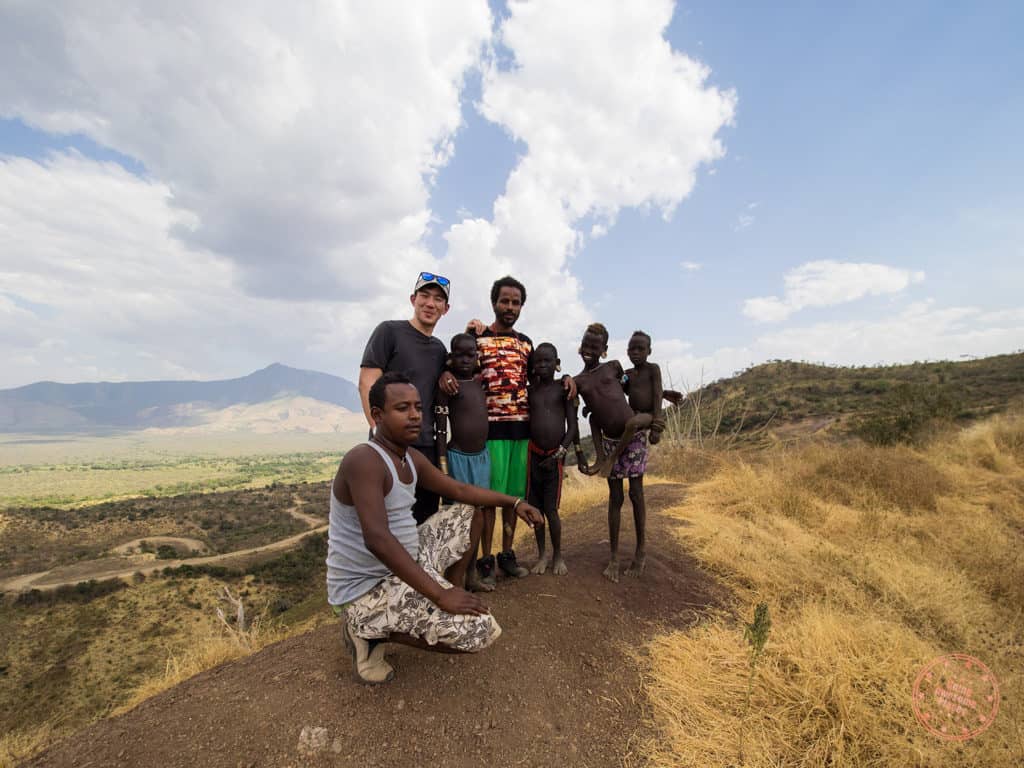
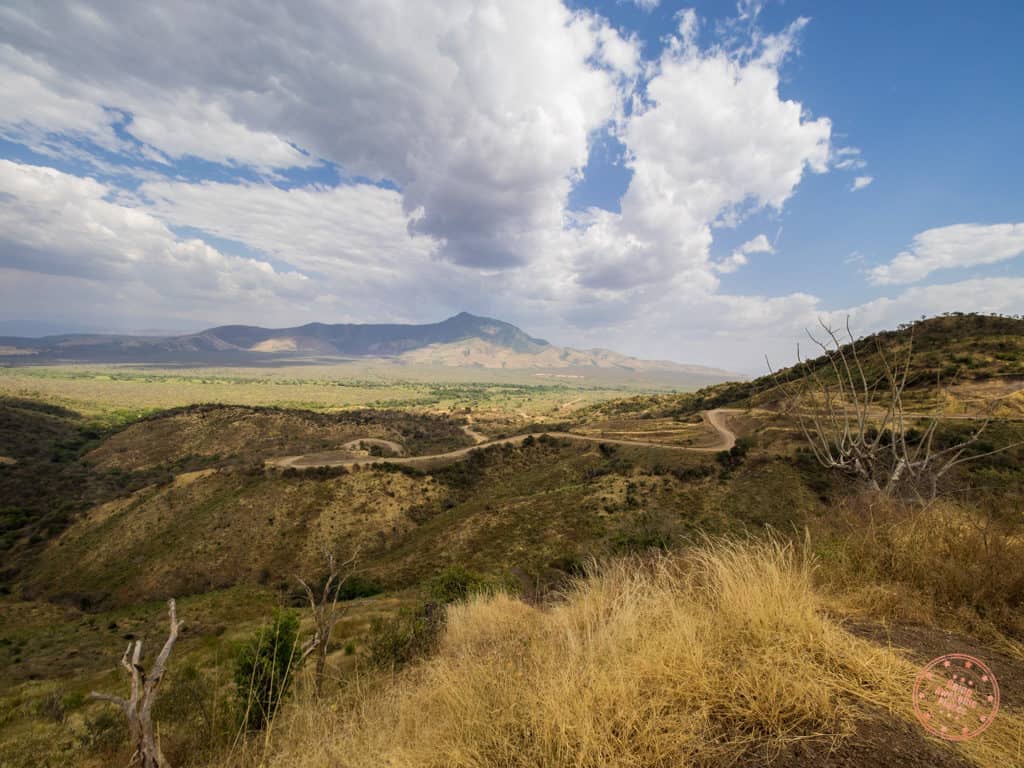
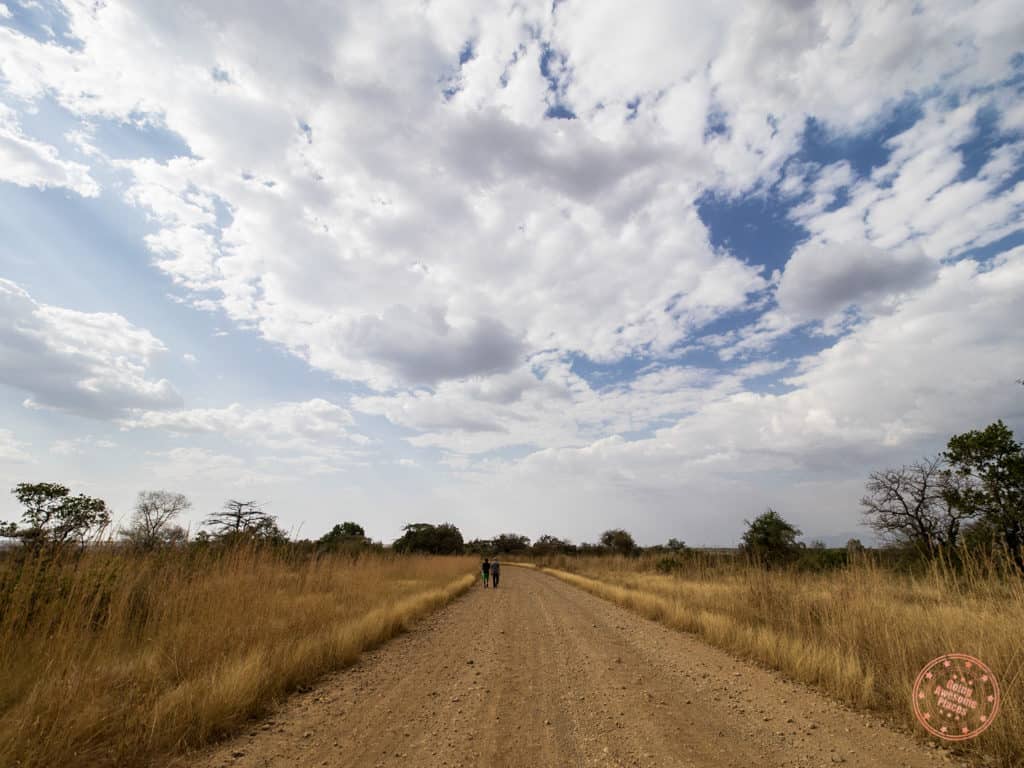

After several hours, we finally made it into the Mursi Tribe region of the park and stopped at the first village.
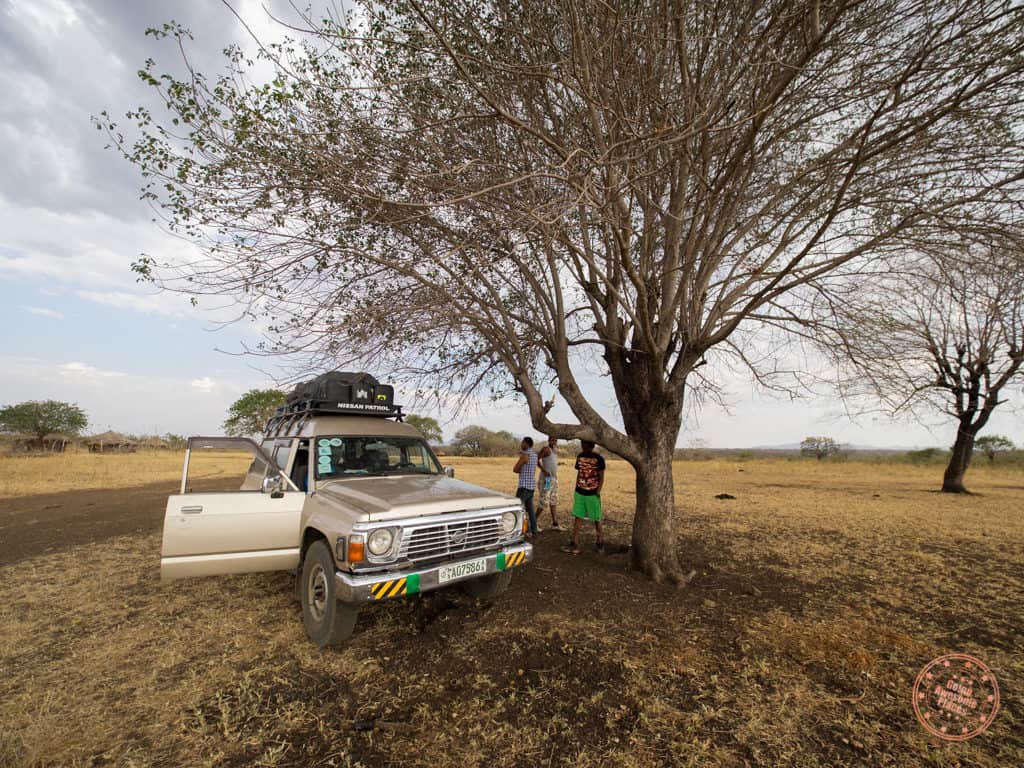
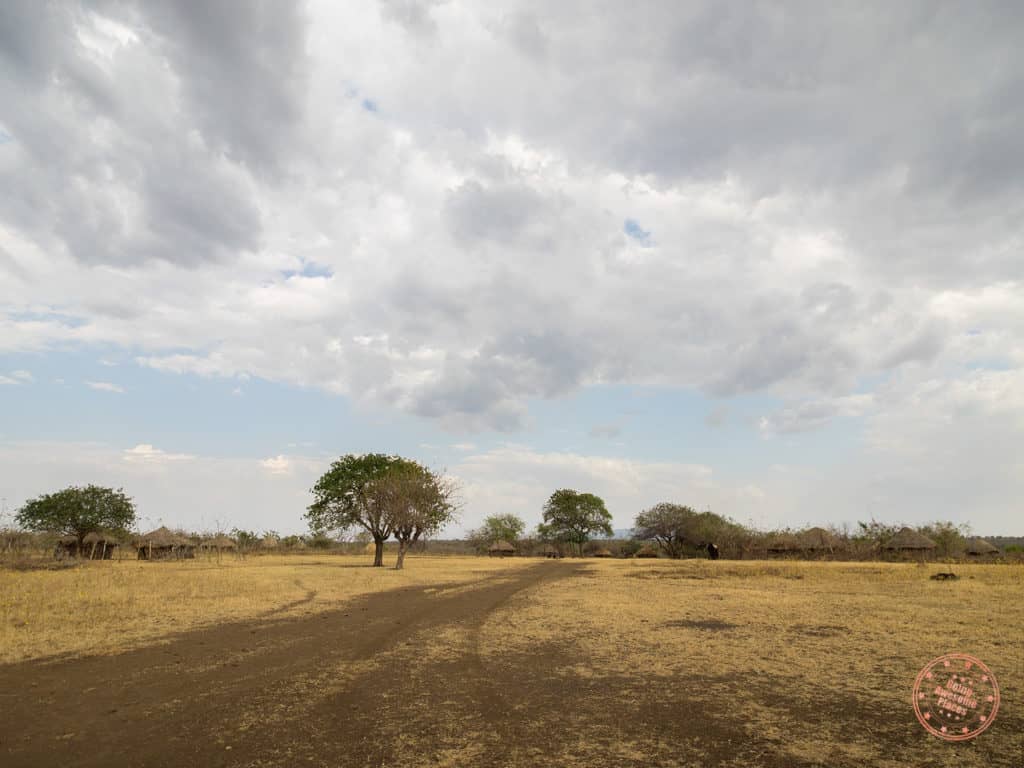
Further into the tribe’s region, we finally made it into the village where we were being hosted for the evening. Lala was quite familiar with the chief and so were our guides so there was definitely a sense of comfort that we were in safe hands.
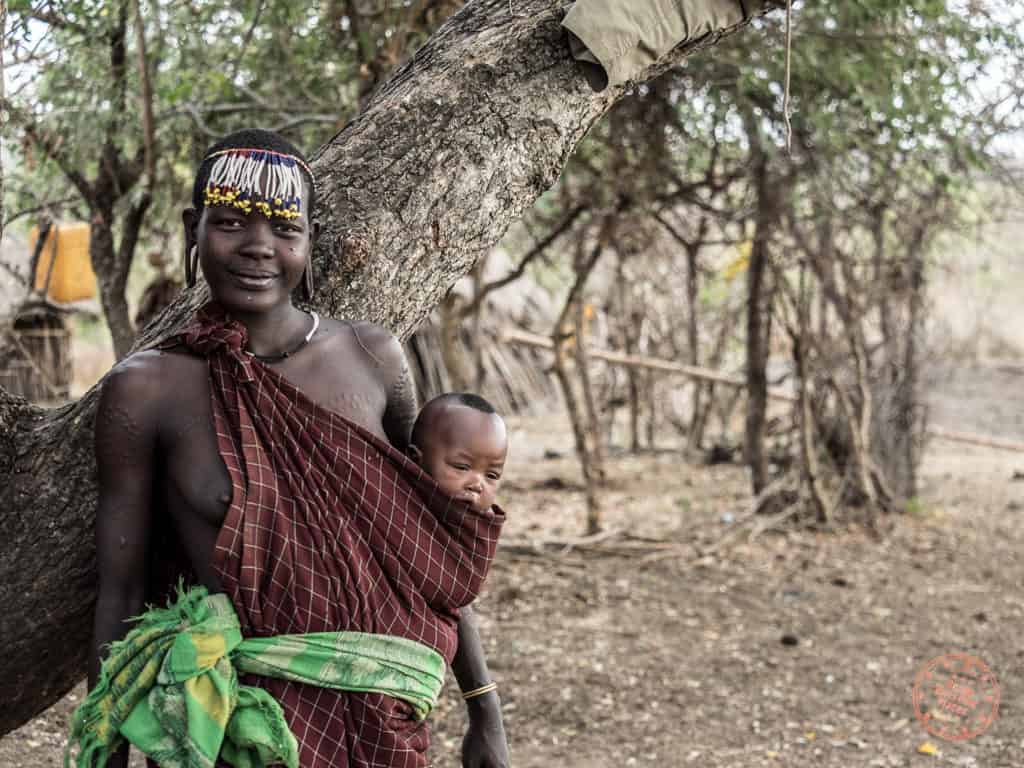
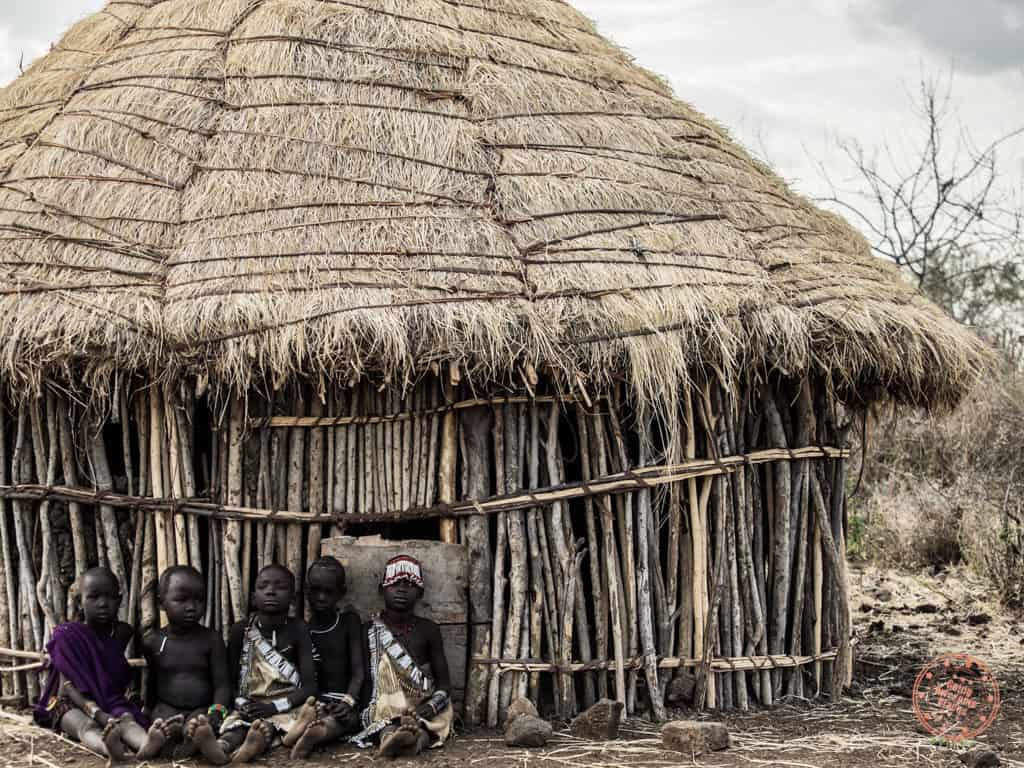
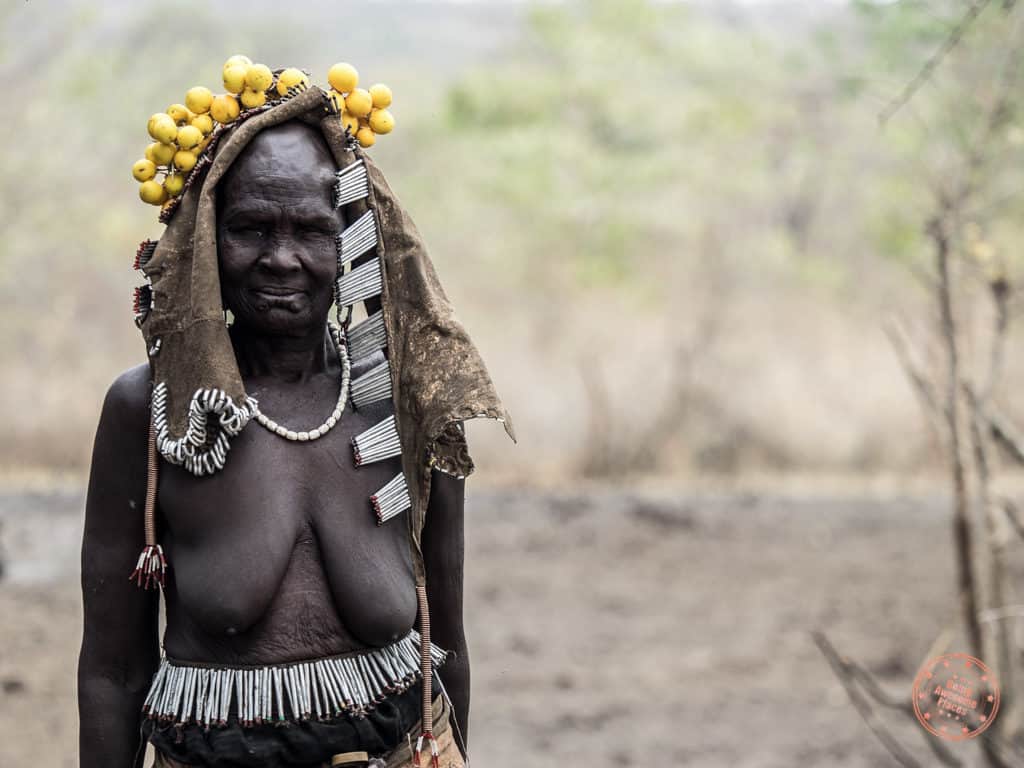
Once we got out of the car, Lala told me that if I wanted to take photos it had to be done then because there were other activities planned for us later. My camera gear was well packed but I quickly grabbed my Olympus EM-1 (now upgraded to the OM System OM-1) with 40-150mm lens and followed Lala’s lead.

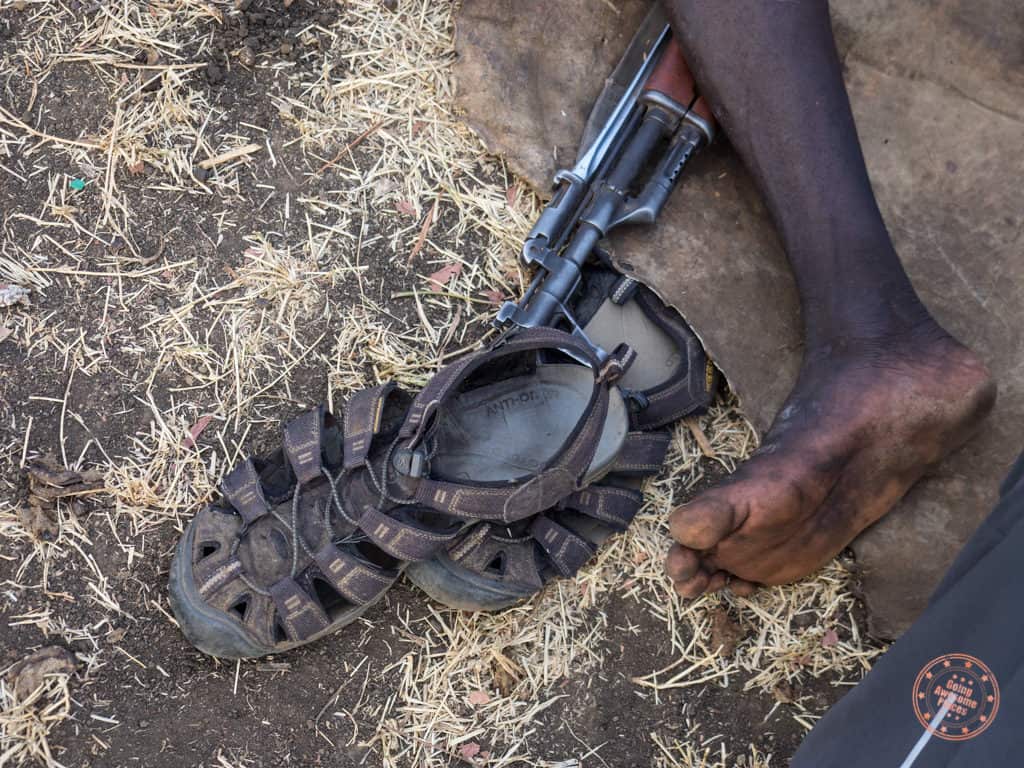
Once I was done, I found my friend hanging out with the chief of the village, Chief Nogali, and a few other men of the village. It was nice to just chat with them and try our hardest to learn their language, as they laughed at our attempts. They genuinely were humored by our phrasing and took everything in great humor.
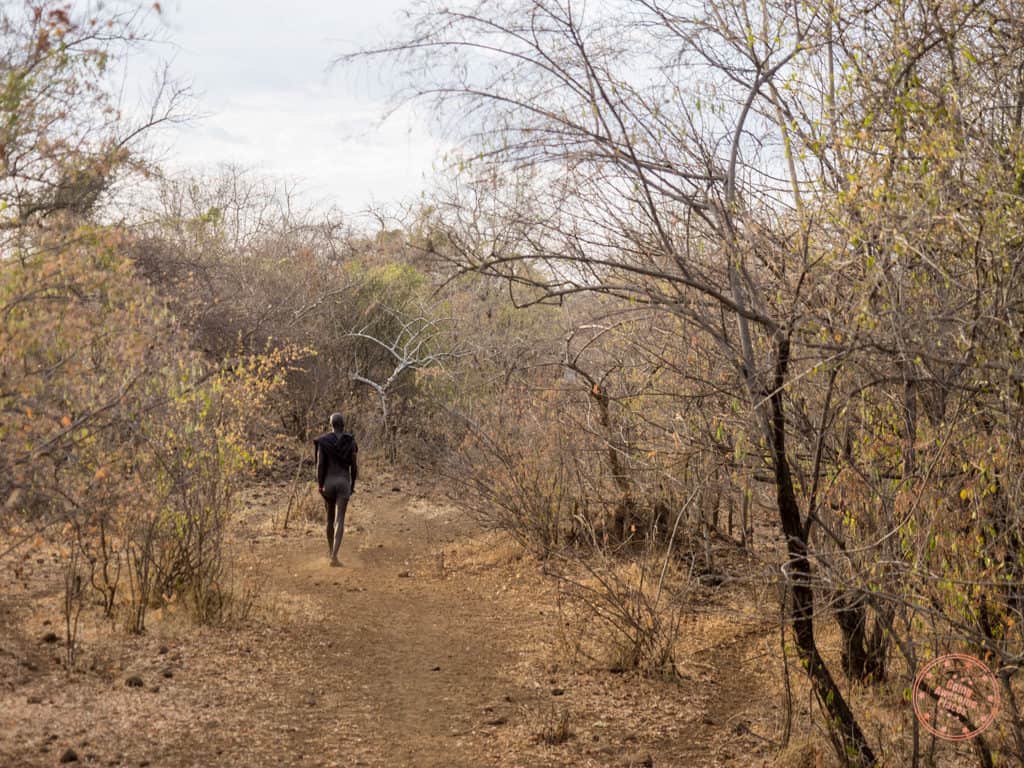

With the sun starting to come down, our guides asked if we were interested in going down to the watering hole with the chief. This was perhaps one of the most authentic experiences in the village as we were essentially escorted by Chief Nogali down this trail.

When we got there we saw a muddy hole with dirty brown water that was no wider than around 6 feet. This is the only water source and they make do with it. A few of them also shower here as this is the only place to do so in the area.
Trekking back to the village was even more of an adventure as the sun was quickly setting. With nothing but Chief Nogali and the jingling of cowbells guiding our way, we eventually made it back after sunset.

For the rest of the night, I had a chance to do a little photography, and we ate dinner that Lala cooked for us over the make-shift campfire. After dinner we hung out with Chief Nogali and his friends sitting on dried animal skin while watching the stars and sipping on Mursi moonshine called araki.
TIP:
So apparently most tour groups that come in will end up in one of the closer villages in the Mursi tribe region because they’re the most convenient but because we had our private guides, we got access to a village that don’t see too many visitors. This is one of the reasons why you want to hire your own private guide instead of joining a large tour group.
Always be at the ready with your gear whether it be camera or water. There may be times where you have to get up and go on a whim and you want to always know where you things are and be mindful of what not to forget. Seems easy but staying organized is helpful.
Day 4 – Accidental donga
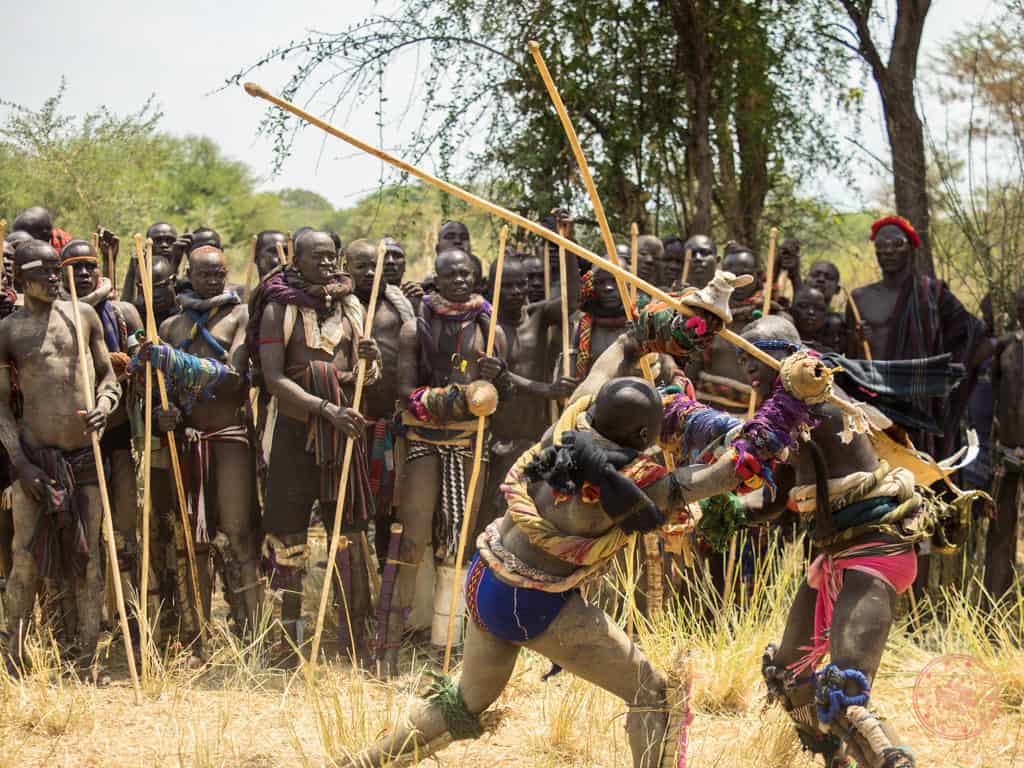
Make sure you head over to my post about our Donga Stick Fighting Tournament experience for more information on this experience.
Since Donga turned into a detour into our guides’ original plans and our Ethiopia itinerary, the remainder of the day was the drive back to Jinka and settling back into Orit Hotel.
Chief Nogali came with us and we offered to let him shower in our room. He quickly transformed from an impressive tribal leader to an everyday modern man! We said our goodbyes and he was off to do his business he needed to do in town.
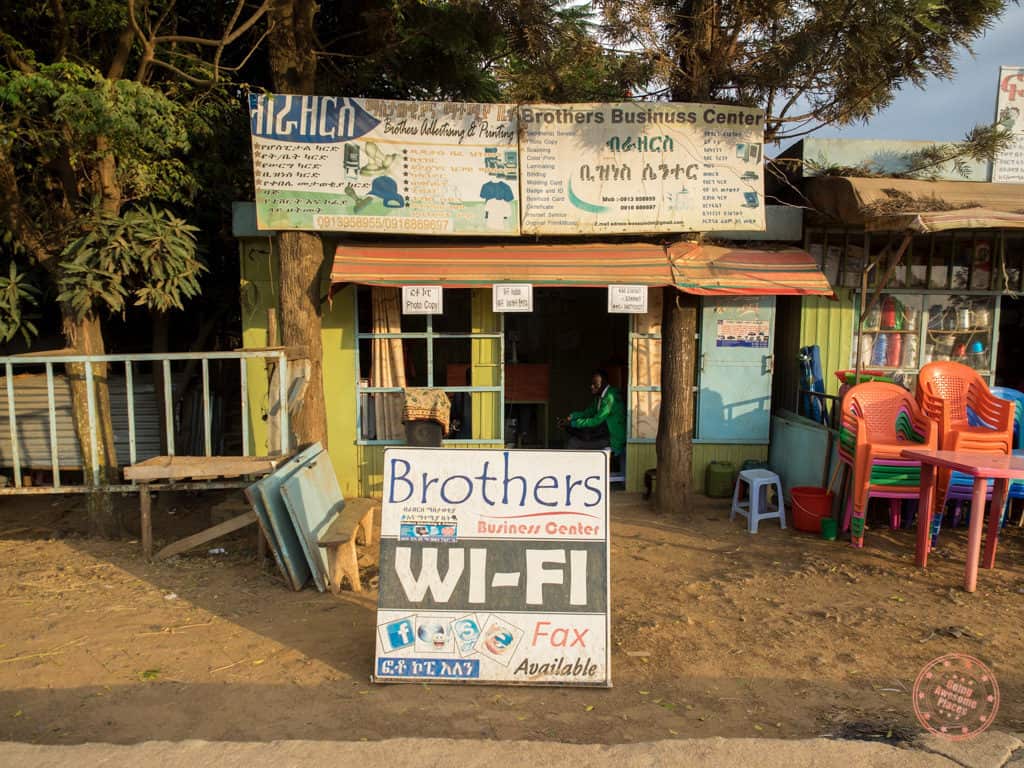
There was a small internet cafe just steps away from the hotel so we camped out there for a while. And if you are curious about the speed… let’s just say it was good enough for a FaceTime back home.
Dinner was with our guides and driver that night at a local restaurant on the main street of Jinka.
TIP:
Remember that almost all hotels and lodges in Omo Valley won’t have internet so either stock up on data on your SIM card or try to find an internet cafe in the larger cities like Jinka or Arba Minch.
Day 5 – Ari to Turmi
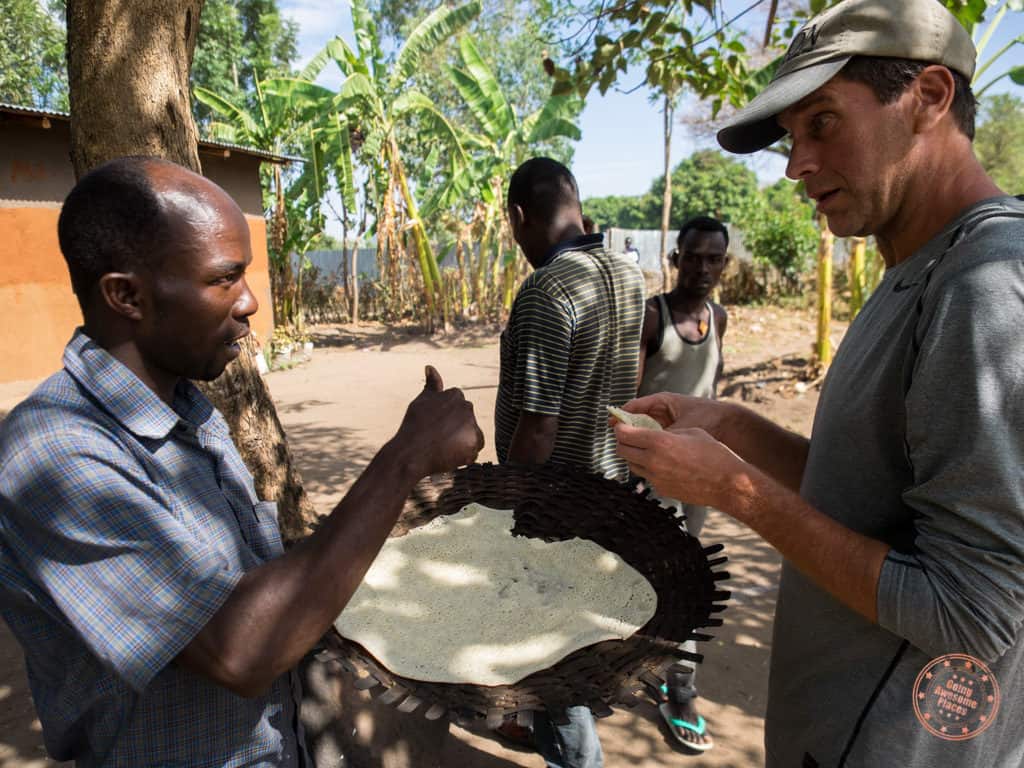
On our 5th day of this Ethiopia itinerary, we spent the morning learning about perhaps the most modern of all tribes, the Ari. We thought this would require a bit of a commute but they were just around the corner, minutes away from Jinka.
As the most modern tribe and living just outside of the city, it almost felt like we were meeting local Ethiopians, rather than traditional tribespeople. The member of the tribe that showed us around even spoke English, which was quite unexpected! That morning, he took us around the village, stopping to look at their houses, the granaries, and fruit trees, visited the blacksmith, tried our hand at making injira, pottery, and ate sugar cane with a shot of locally distilled araki (tasted like vodka).

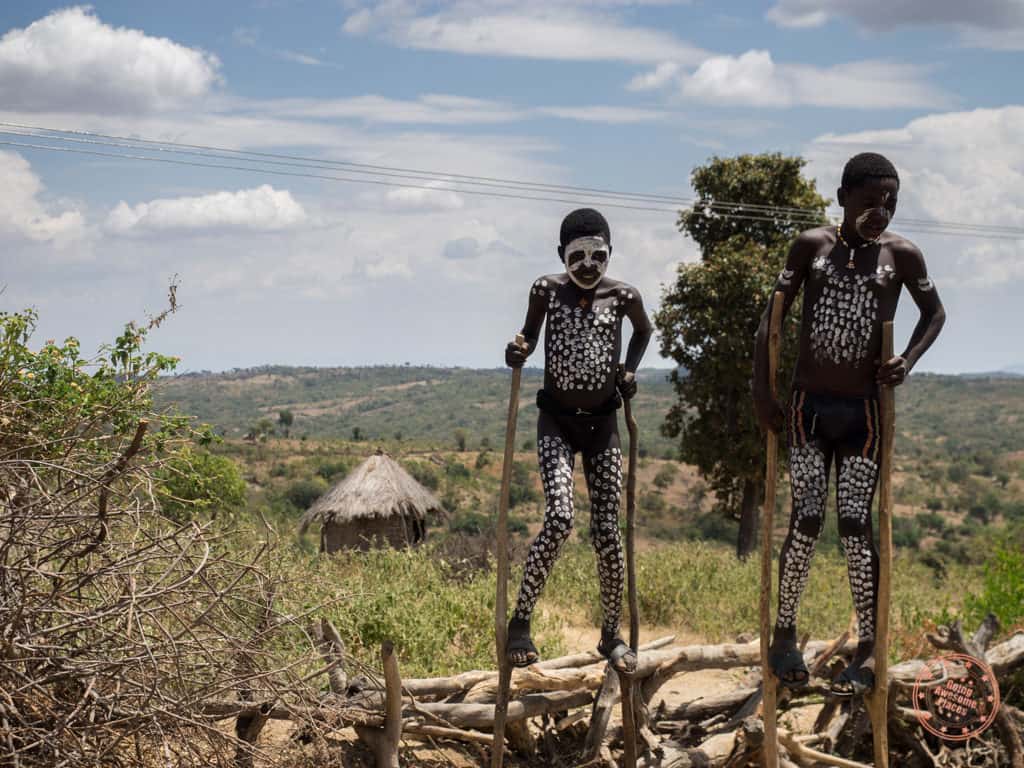
We hit the road right after and the remaining part of the day was mainly in transit, bumping along the red dirt roads into more desert-like terrain. It wasn’t until roughly around 3PM when we made it to the southern town of Turmi. This is where we met our local guides Kala and Ayke from a local Hamer tribe that Solomon is friends with.
We checked into Turmi Lodge that afternoon to put our things down and we were both happy to have some creature comforts back, namely running water, a bed, and even an electric fan.
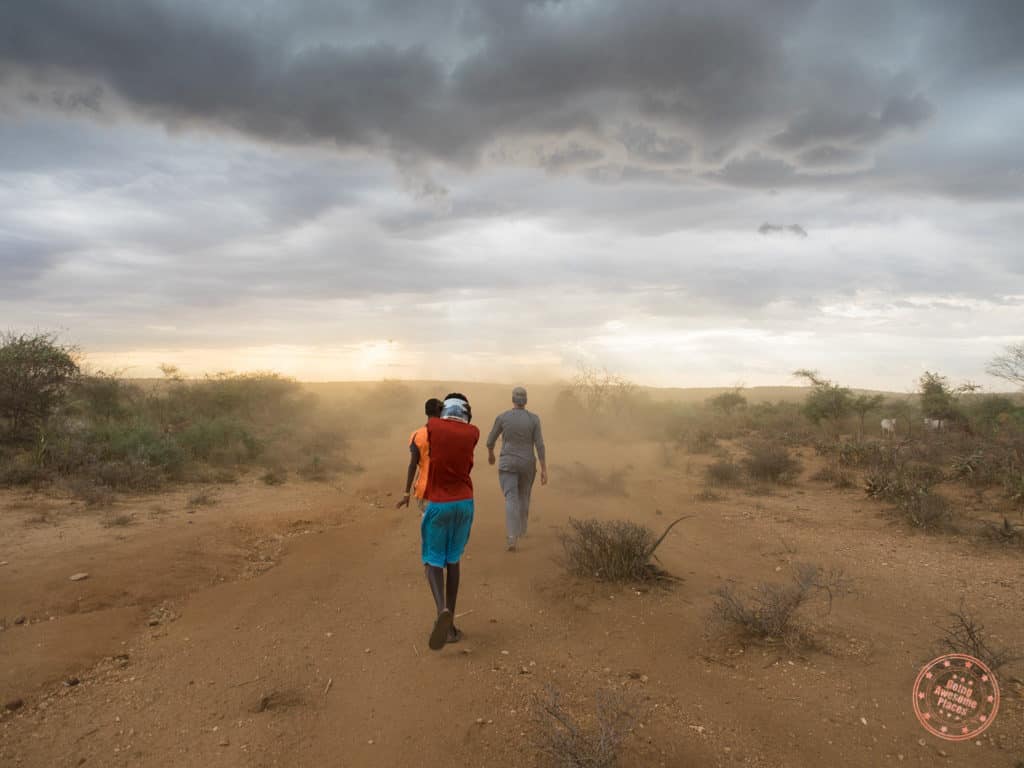
At 5PM we met Kala and Ayke and started walking towards a Hamar tribe village. As we got closer, dark clouds rolled in and we had to battle a fierce rain and sandstorm. With what little visibility we had, we eventually found the village and ducked into the village hut.
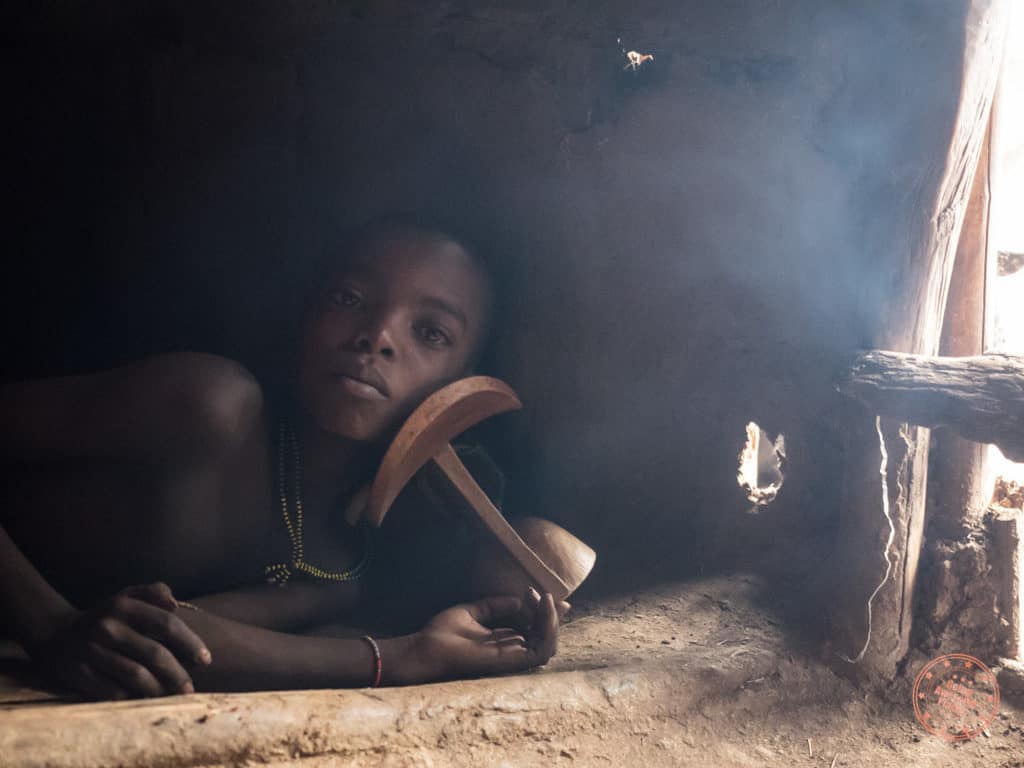
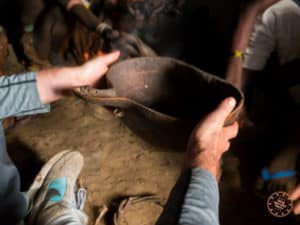
We’re still unsure whether this was the hut we were planning to visit but it was actually quite nice to end the day just sitting inside, being served coffee husk tea (buno) in a half calabash bowl. We were all pretty tired by this point so there wasn’t much conversation as we waited for the rain to die down.
We made it back to the lodge until 8PM and by then we were exhausted. We skipped dinner and called it a day with a Cliff Bar.
Day 6 – Dimeka market and bull jumping ceremony
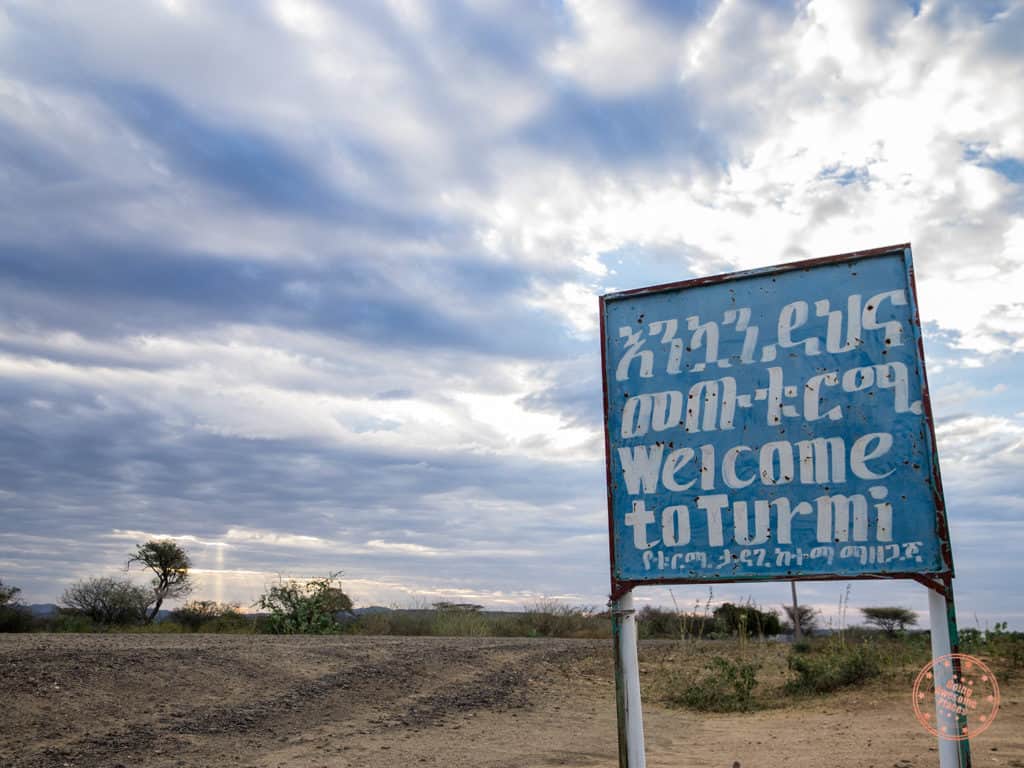
The first big thing on the docket for day 6 of our Ethiopia itinerary was the Saturday Dimeka market. For miles around Hamar tribe members were all converging by foot to this market, an hour away from Turmi.
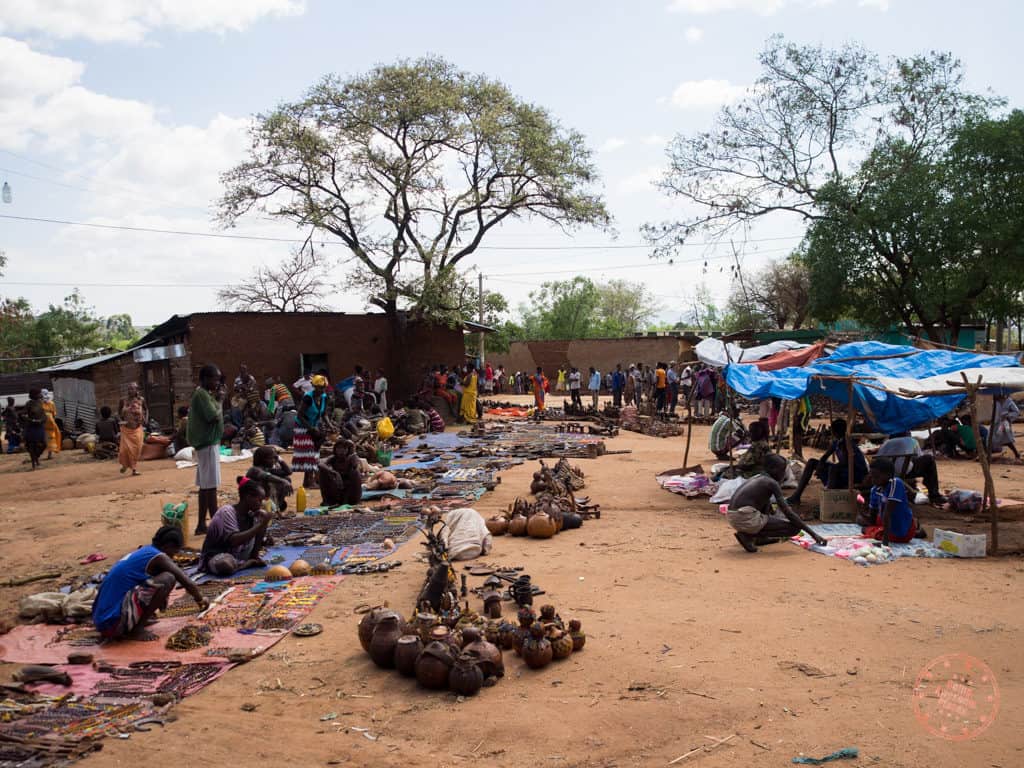

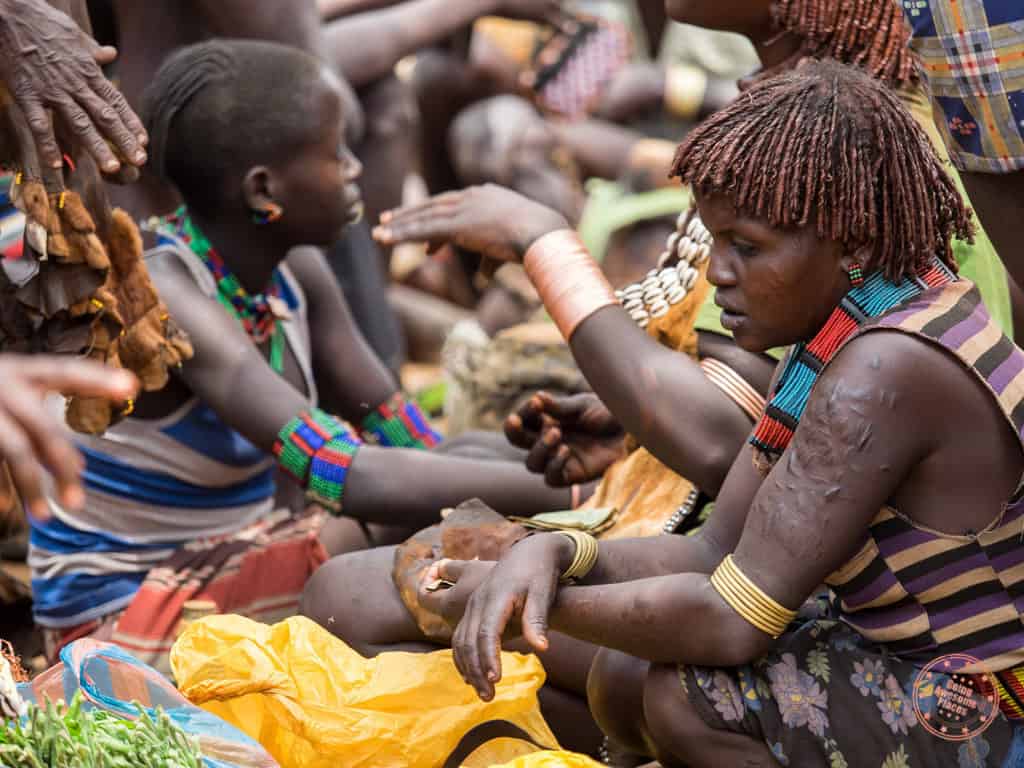
There were shacks selling goods, tarps laid out selling things like coffee bean shells, stations for bottling oil, and also an ad hoc hairdressing station with Hamar women getting their hair oiled and dyed in their distinct red. There was action in almost every corner of the market.
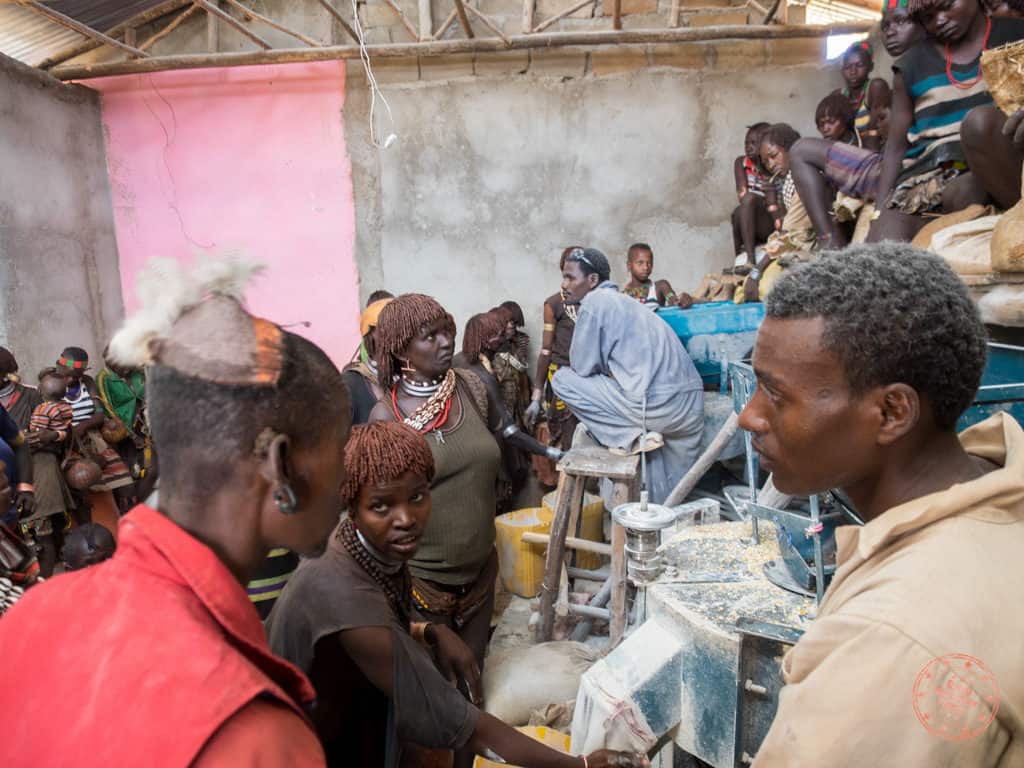
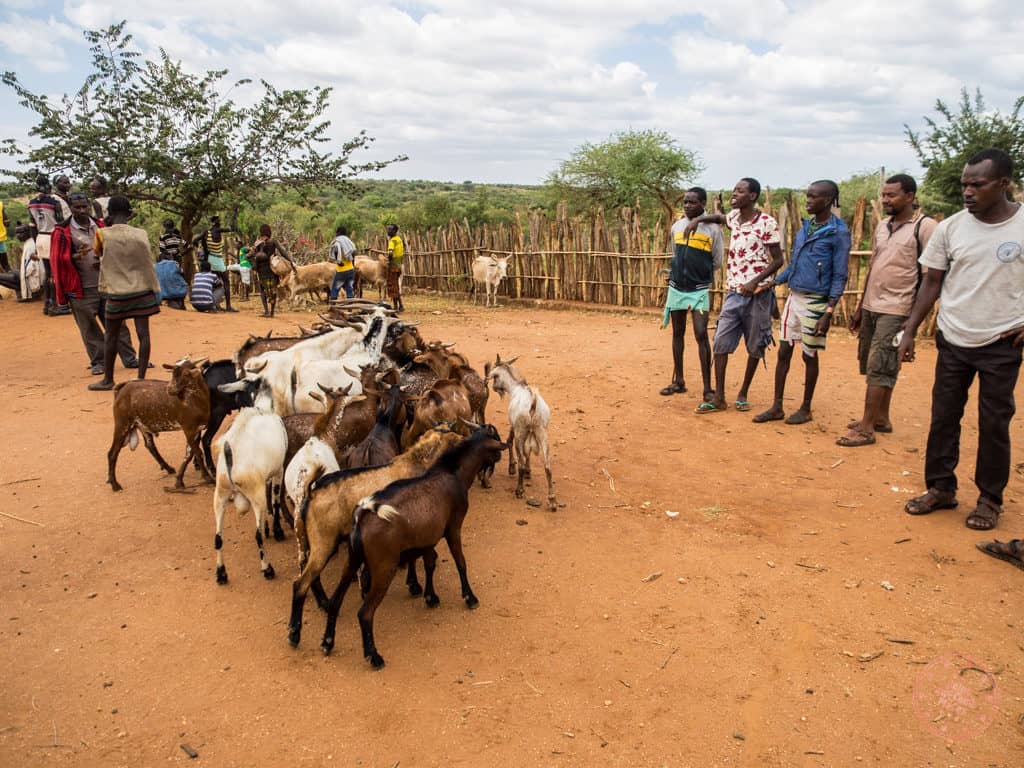
Outside of the market itself, Melak walked us around to other parts of Dimeka, which featured a sorghum grinding station so tribe members didn’t have to do it by hand. There was even a livestock trading area where people could buy goats and cattle.
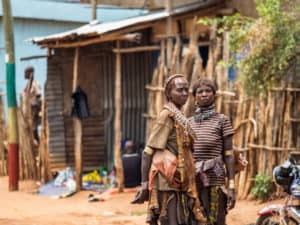
Outside of all of the selling and buying of the market, this also seemed to be the kind of place where people would meet neighboring friends and have a chance to get updates on what’s happening in other villages – a real-time Facebook you could say.
We had lunch in Dimeka and during that time the guides got word that there was a Bull Jumping Ceremony that day. While we knew there would be a lot of tourists there since it was located so close to Dimeka, this was the only time it could fit into our Ethiopia itinerary schedule, so we headed there next.
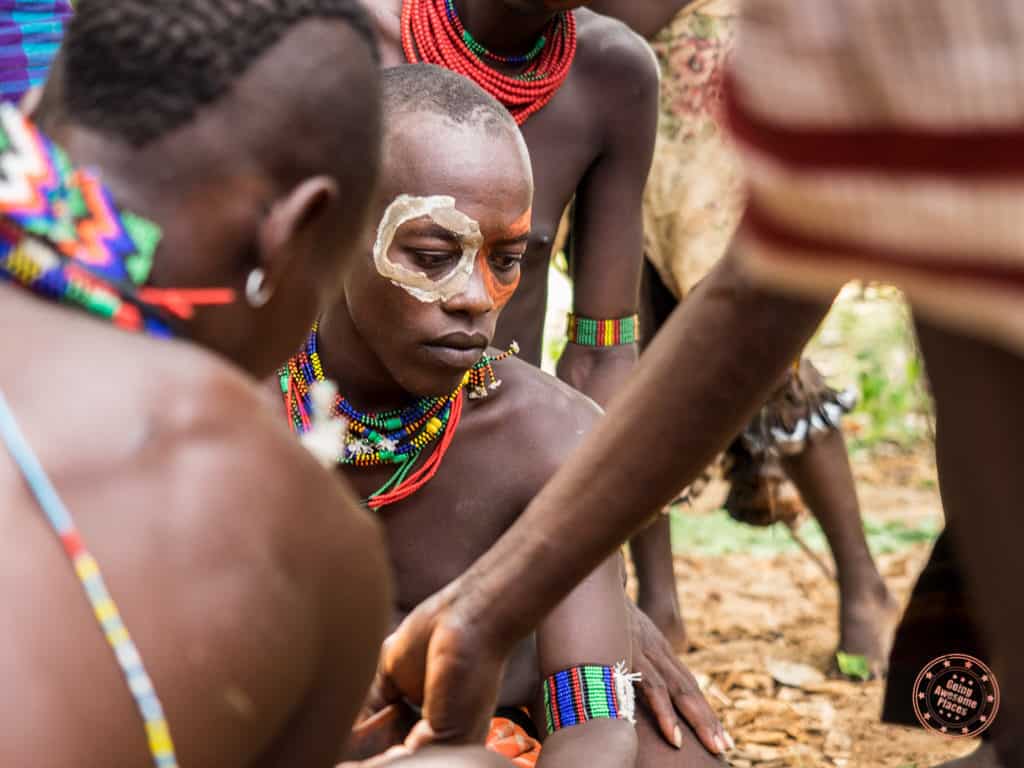
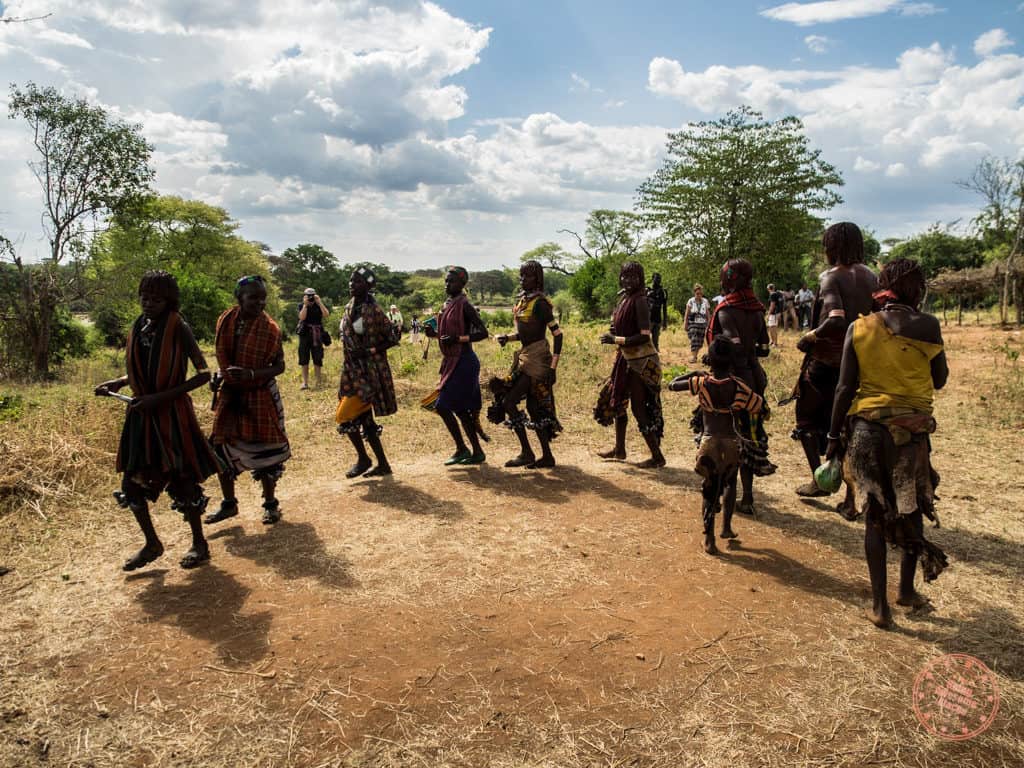
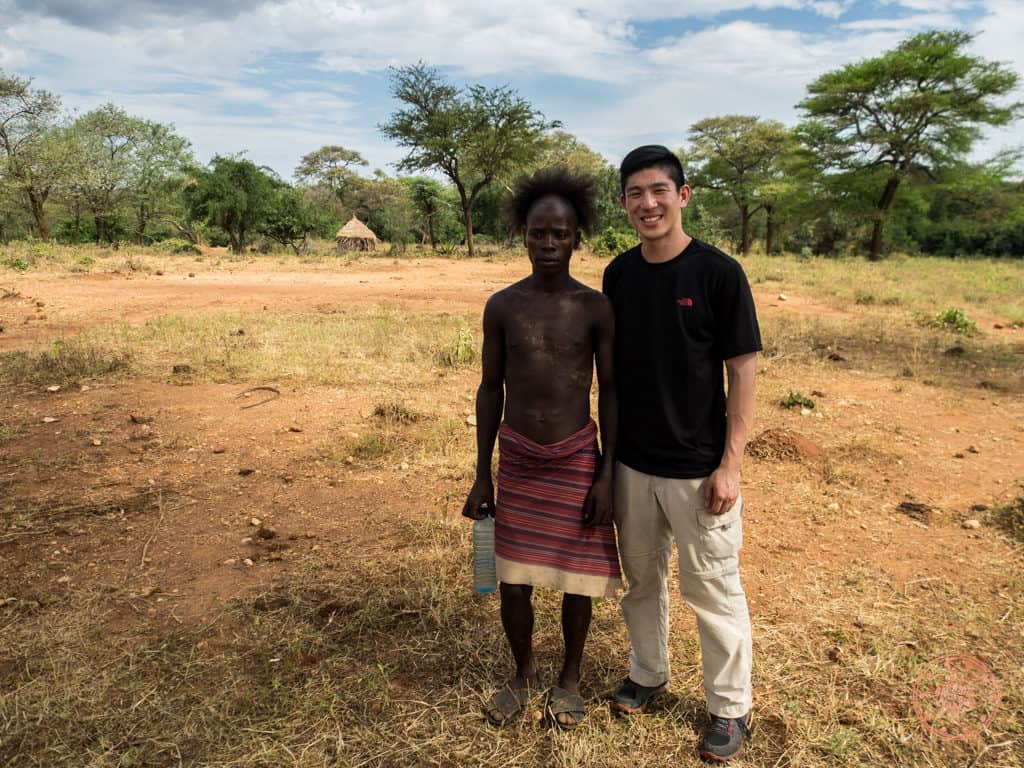

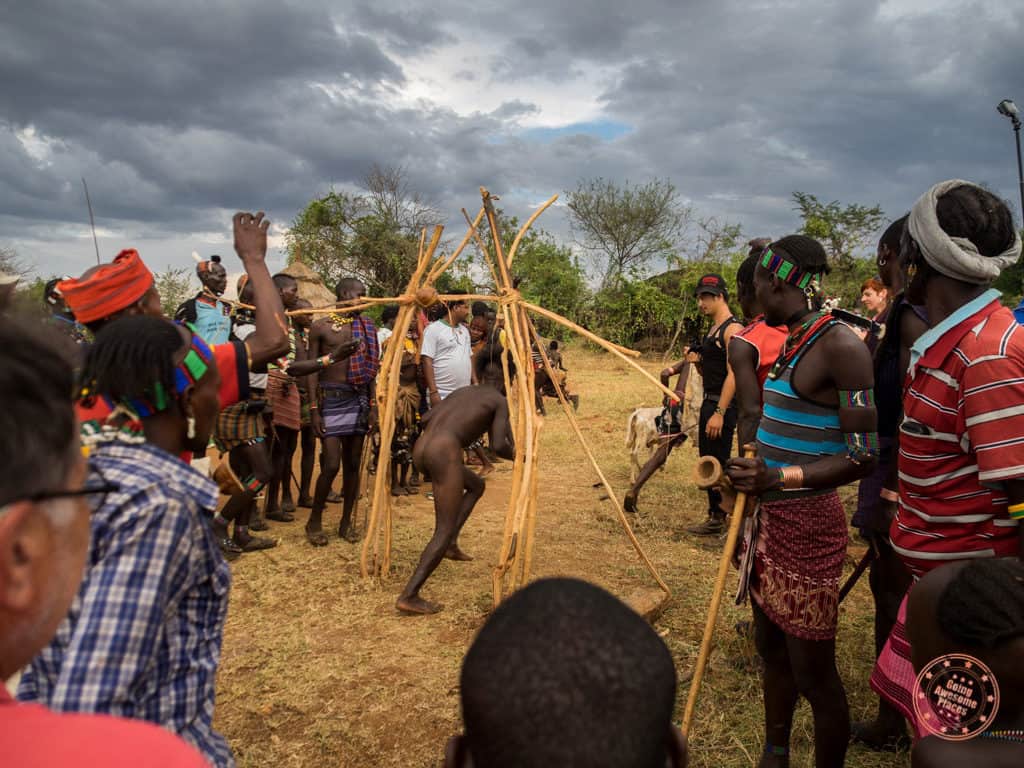
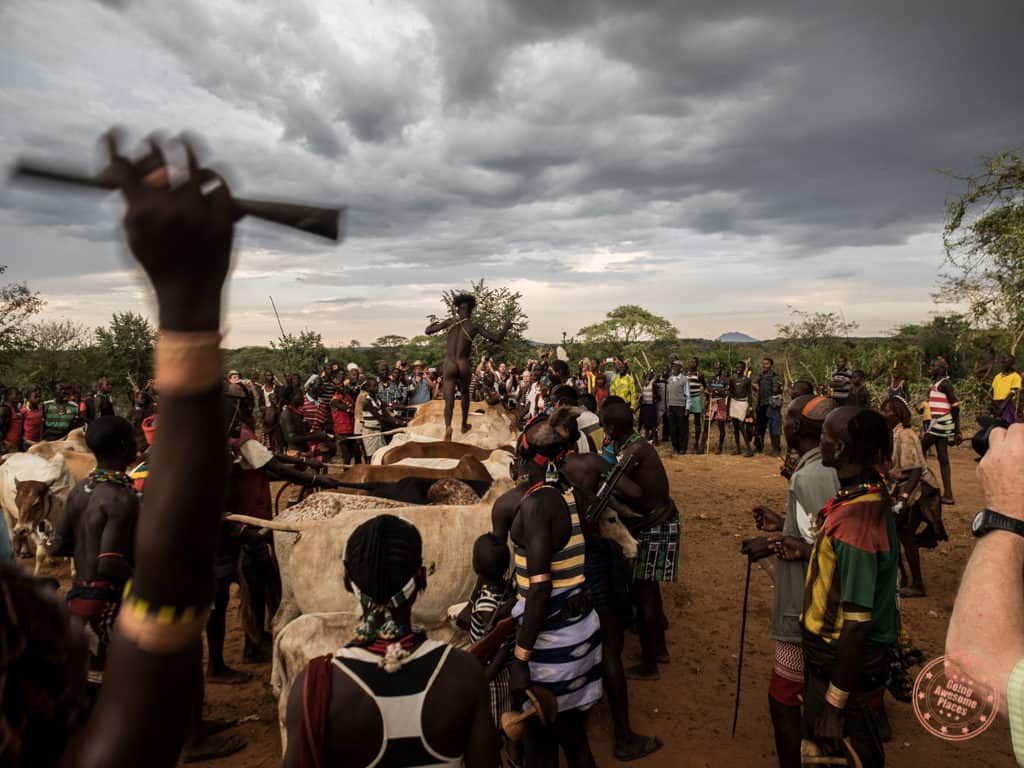
There are a lot of different phases of a bull jumping ceremony but if I were to focus on the highlights, these were the most memorable:
- The hysterical desire for women to get whipped by the Maza men and their belief that the more whip scars they have, the more beautiful they’re considered to be
- The jingling of the bells around women’s ankles and the passing around of lots of alcohol
- How jubilant the whole event was
- Couldn’t help but compare the ceremony to a Bar Mitzvah when a boy becomes a man – both a celebration for family members and involves some sort of challenge for the boy
- Trying my best to decipher what’s going on
- The first time I felt overwhelmed by the number of other tourists that were around and that feeling that I felt like we were intruding on their private event
- Ultimately watching the lining of the bulls and the boy running over the tops of their backs successfully from one end to the other and back
- Seeing the boy as stressed as he was to have that weight lifted off his shoulder when it was all done
- We were there for a LONG time. We got there at 2:30PM and didn’t leave until 6:30PM
Day 7 – Nyangatom and Karo Tribes
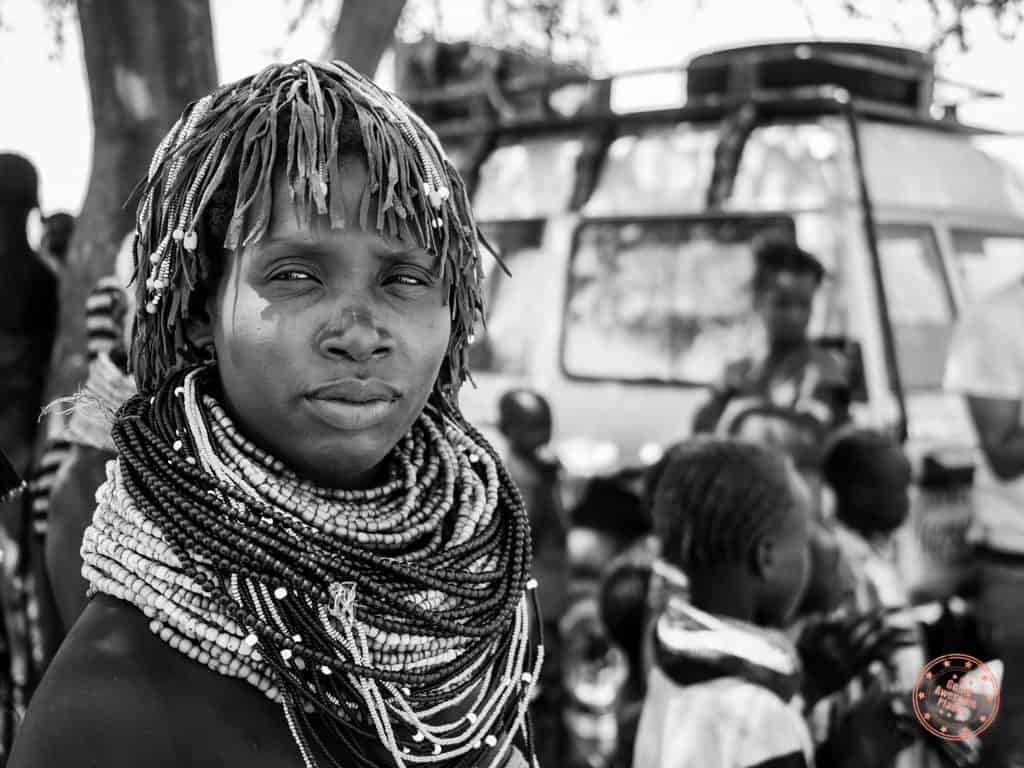
For our 7th day of our Ethiopia itinerary, we packed our things and hit the road to see two new tribes. The first was Nyangatom, several hours drive from Turmi.
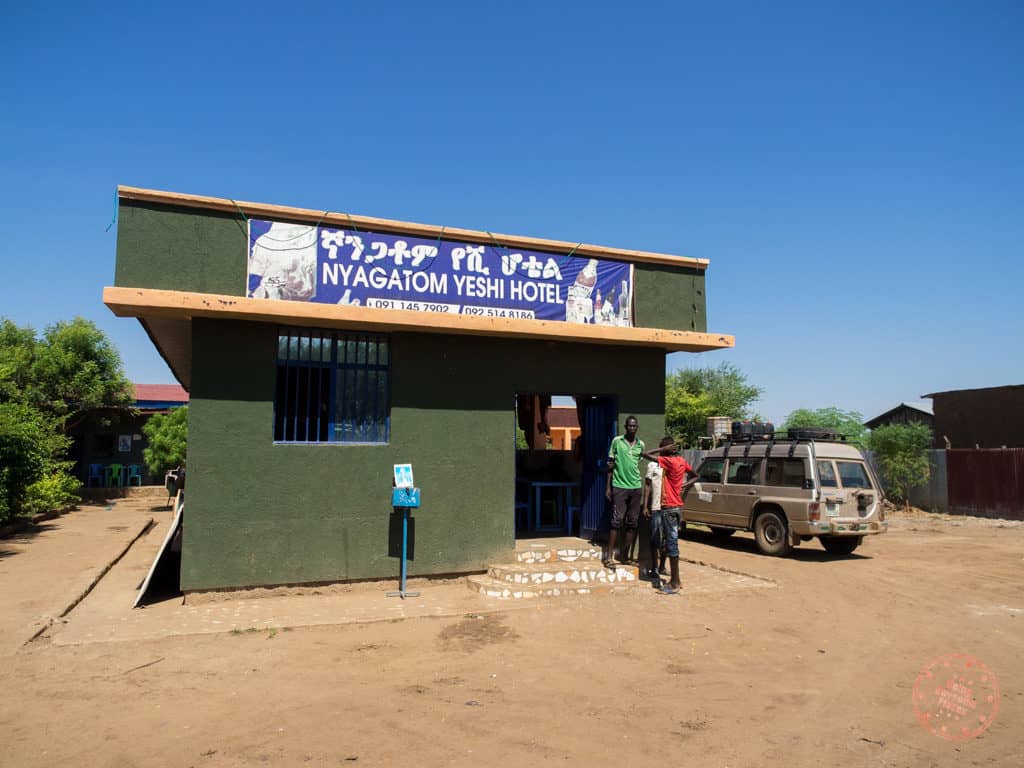
We stopped by the Nyagatom Yeshi Hotel for “breakfast” which seemed like more of the same food as every other meal. Ethiopian food can be really special but at this point, I was missing food from home.
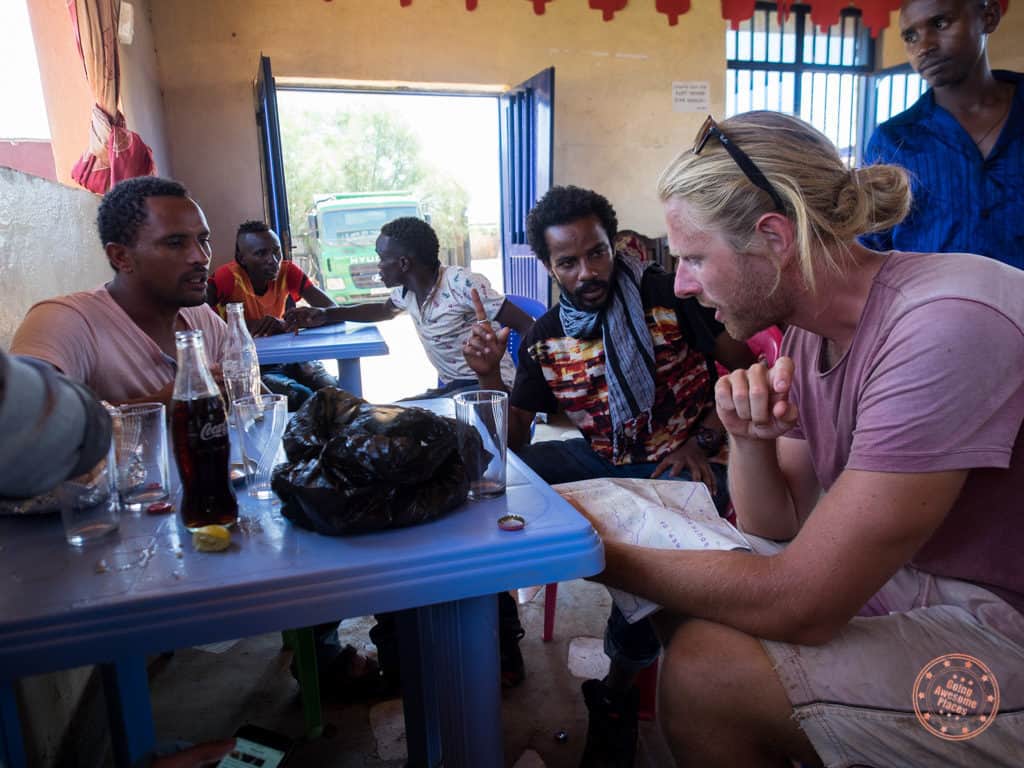
Here we bumped into Elof and Nana who were on their epic bike ride from Sweden all the way down South Africa. I think all of us were amazed that they had gotten to where they were on their journey. The most incredible story was how they took a road to an area inhabited by less than hospitable tribes where rocks and spears were thrown at them. Even our driver said the Western region of Omo Valley was not somewhere he’d ever want to go.

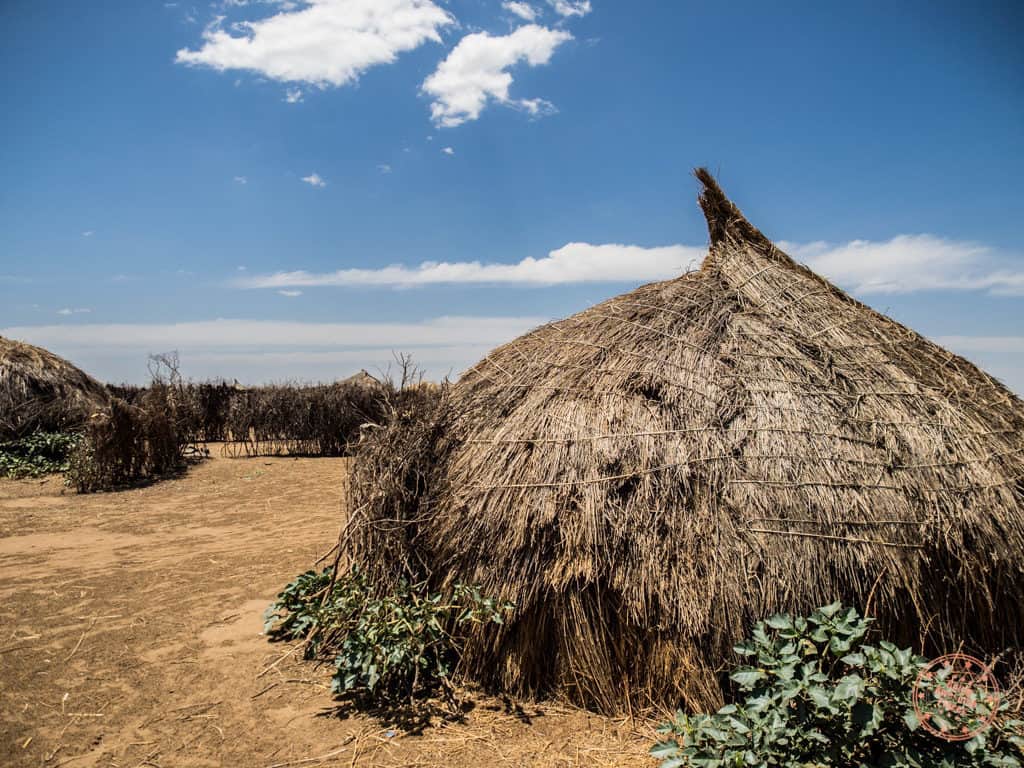
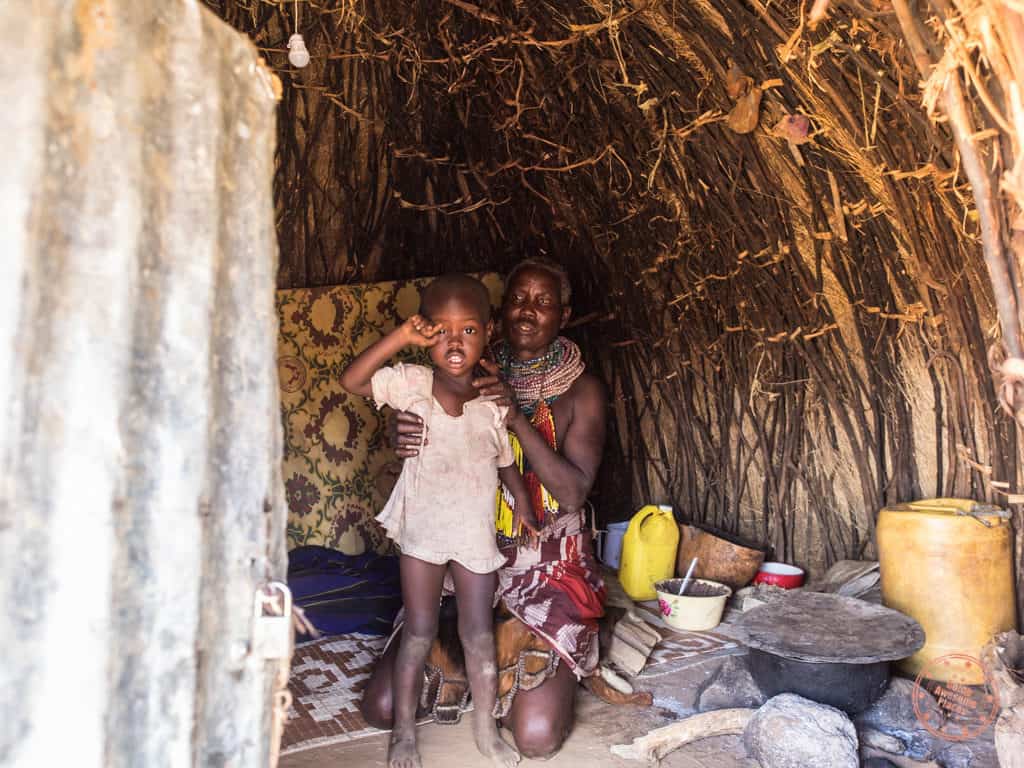
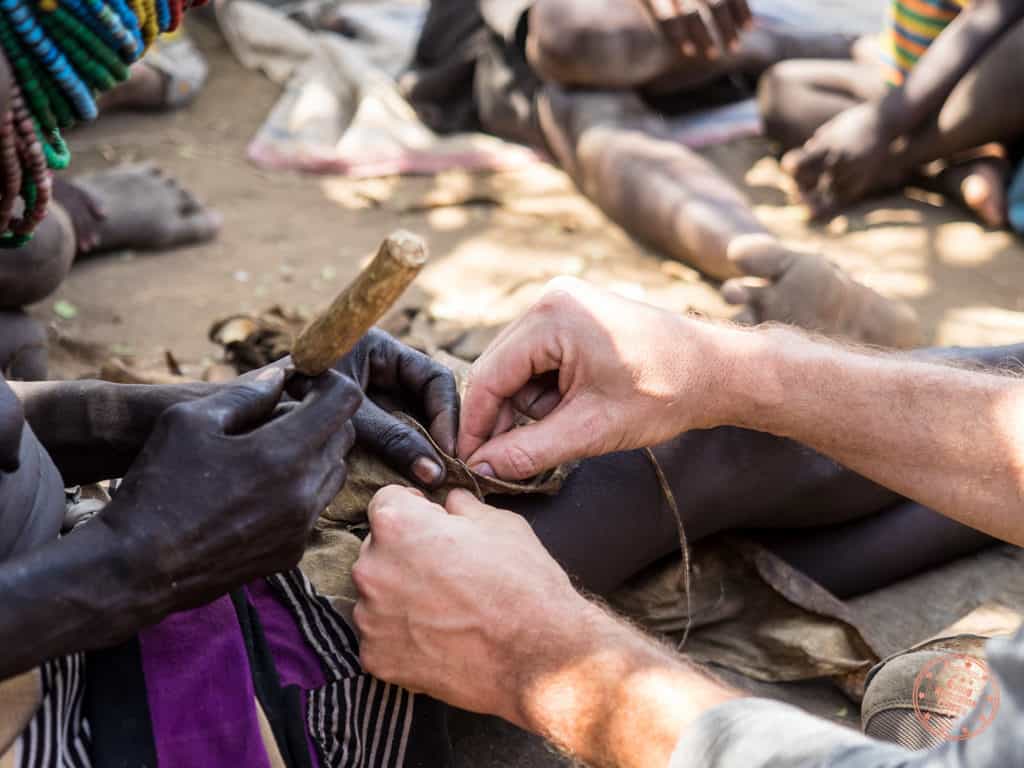
We got to the particular Nyangatom village around noon and the sun was out in full blast. It was so hot that all the remaining women, children and elders were all huddling around a tree. As a result, we were only able to see a little here.
Steve jumped into the fray and tried to help one of the elders with some sewing. I was given a tour around the village and a chance to see the unique layout and hut structures with their pointy tops.
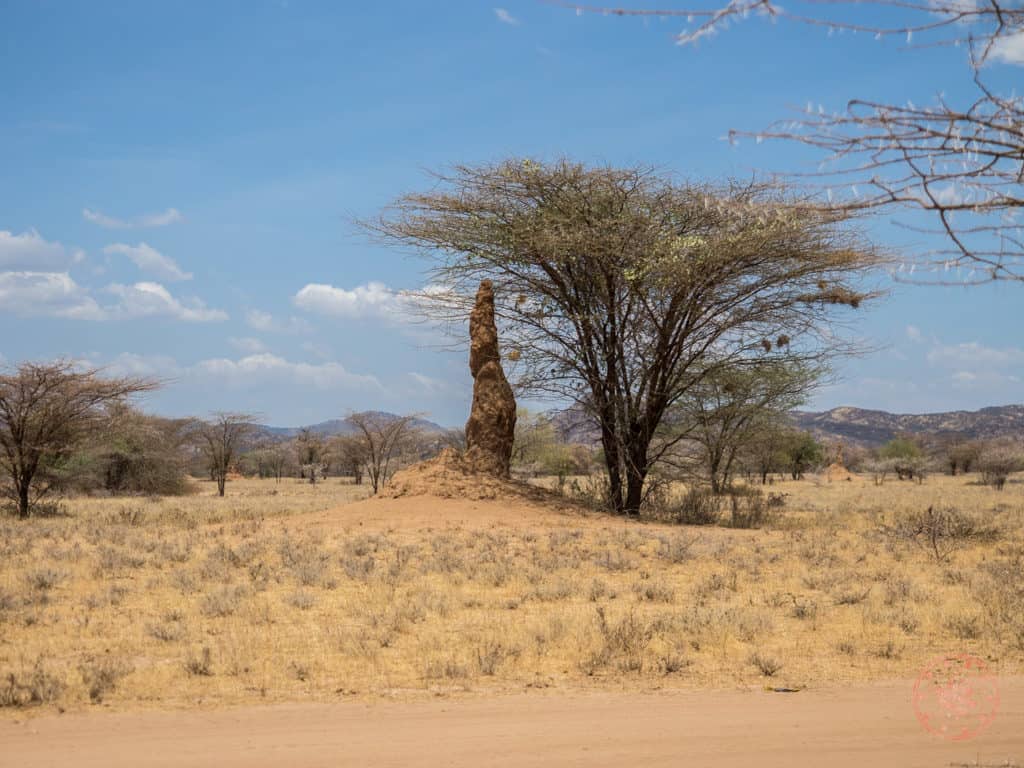
When we finished, we hopped back onto our 4×4 and we started our long drive to our next tribe. Along the way, there’s plenty to see including abandoned bird nests delicately hanging at the tip of a tree branch and the tallest termite towers you’ll ever see.
The second tribe of the day is the Karo tribe which is positioned in a resource rich area. As a result, we noticed a visible difference in prosperity from the previous tribes.
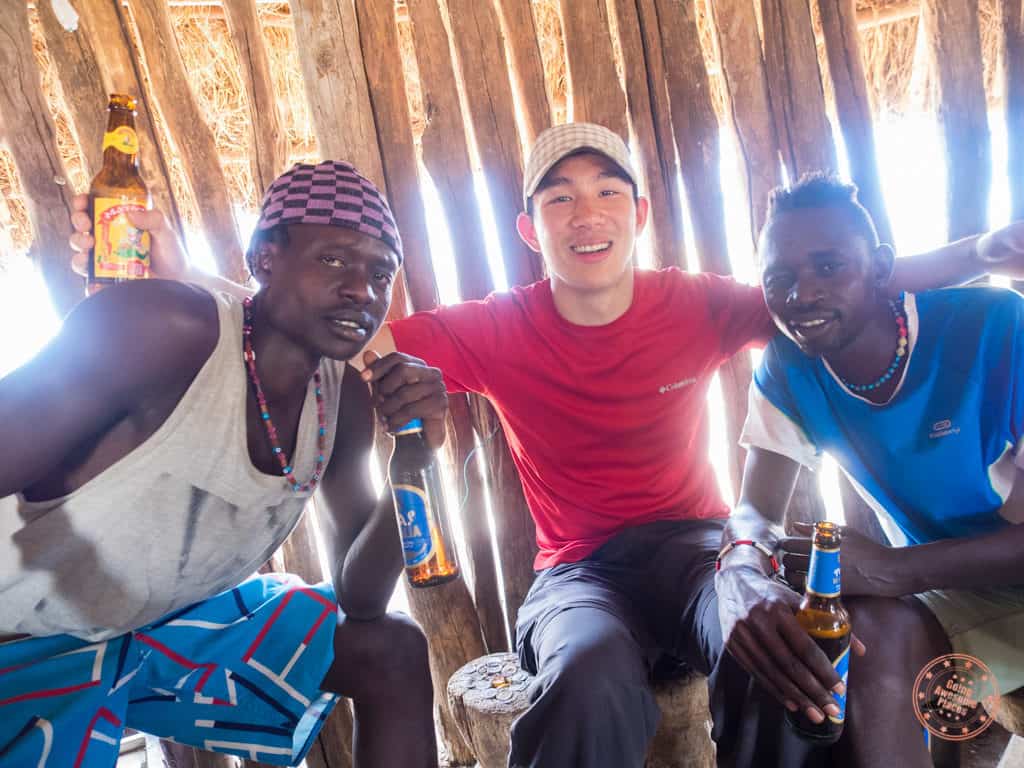
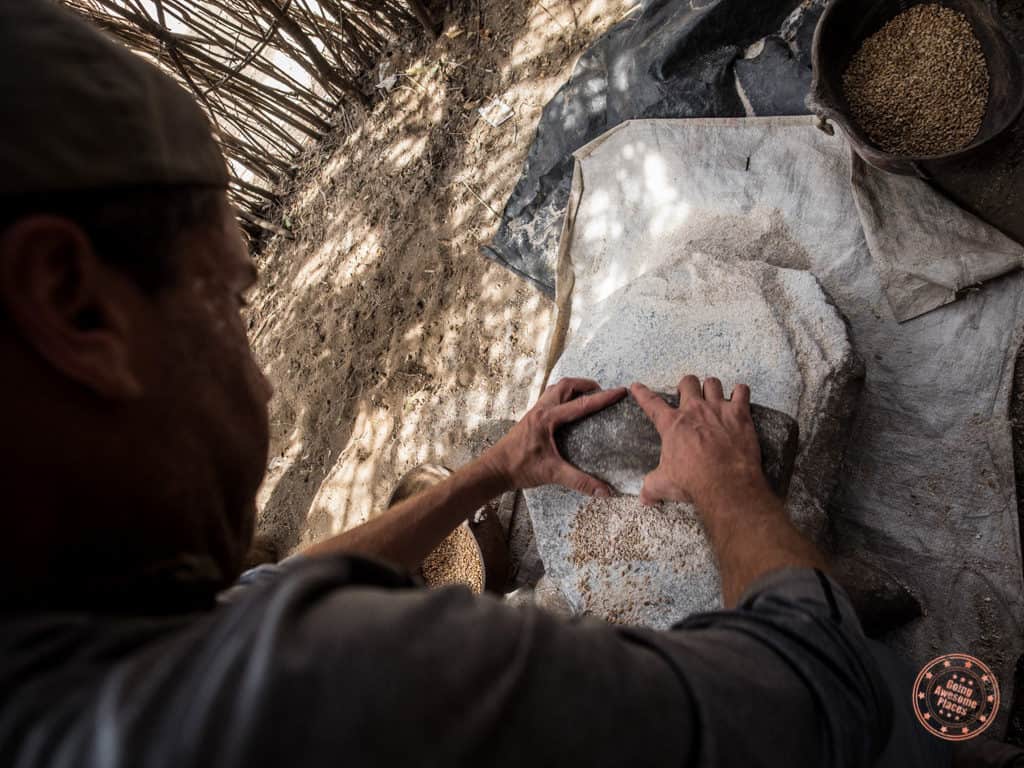
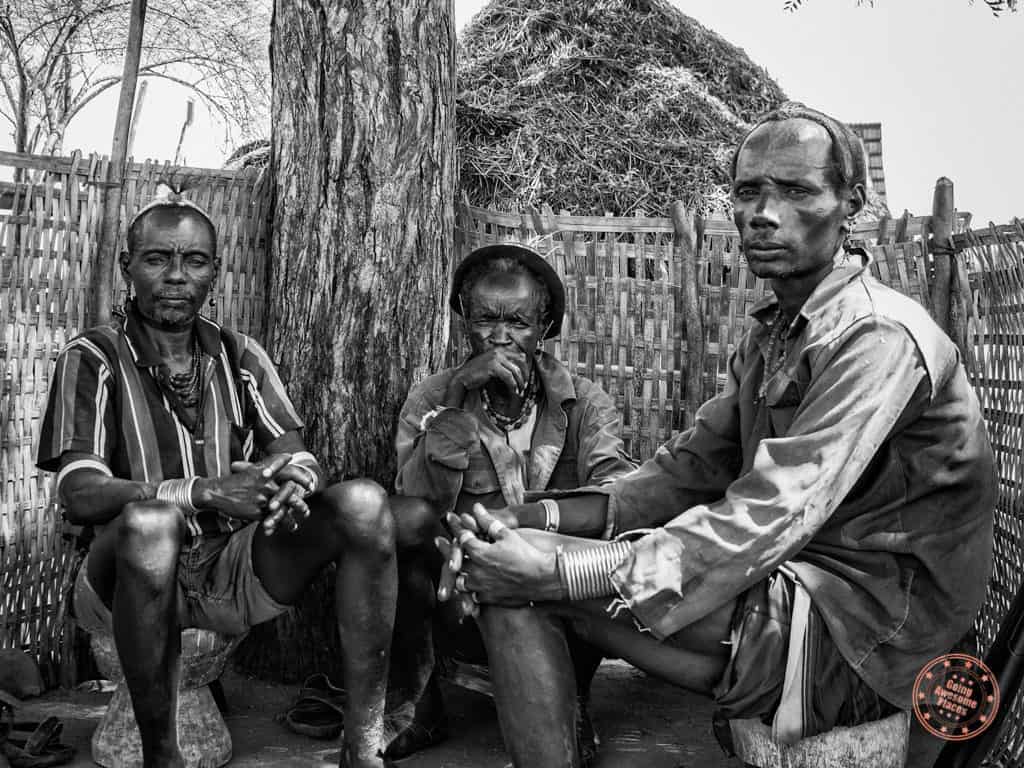
In this village, we were able to have a beer with locals, given a tour by a few kids, ground some sorghum and even helped pluck leaves off vegetables for cooking.
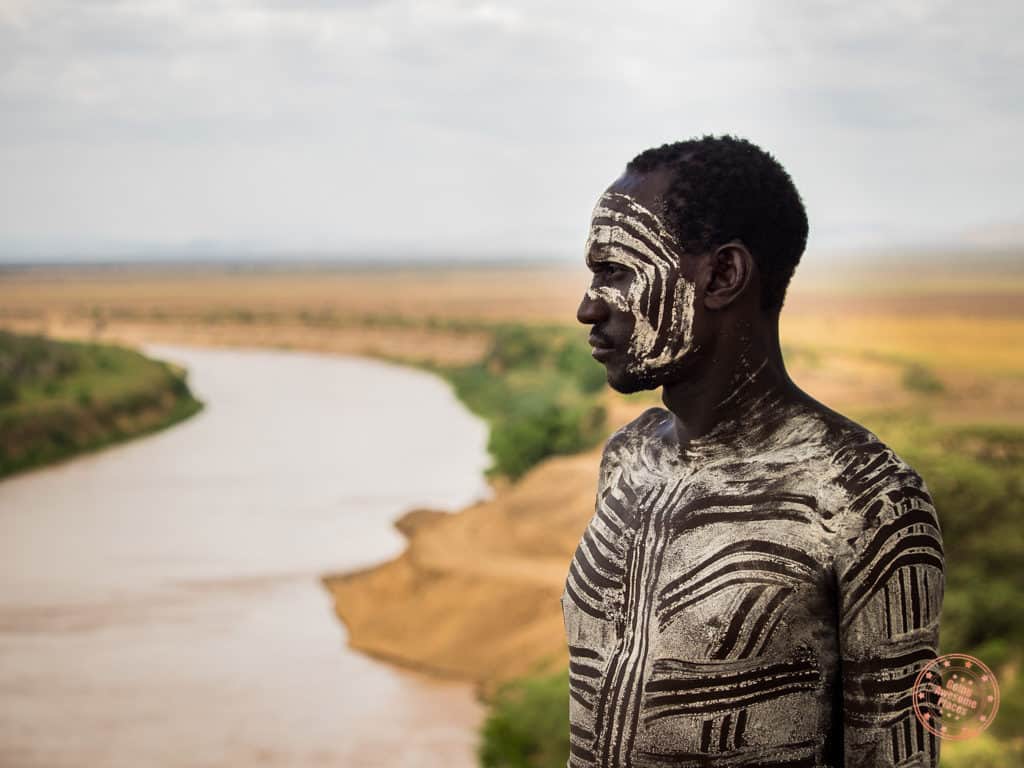
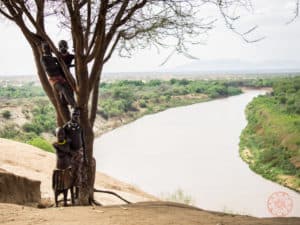
The setting for this particular Karo village was stunning. The Omo River bends around in a horseshoe manner and makes for stunning photos. It is the same Karo tribe that a lot of famous photographers get to shoot and the village knows it.
After we finished our tour, I was immediately asked for “Hello photo!” by members that I am sure just got their bodies and faces painted for visitors like myself. Regardless, I couldn’t squander such a picture-perfect moment so I would say some of the cleanest and vivid photos all came from here.
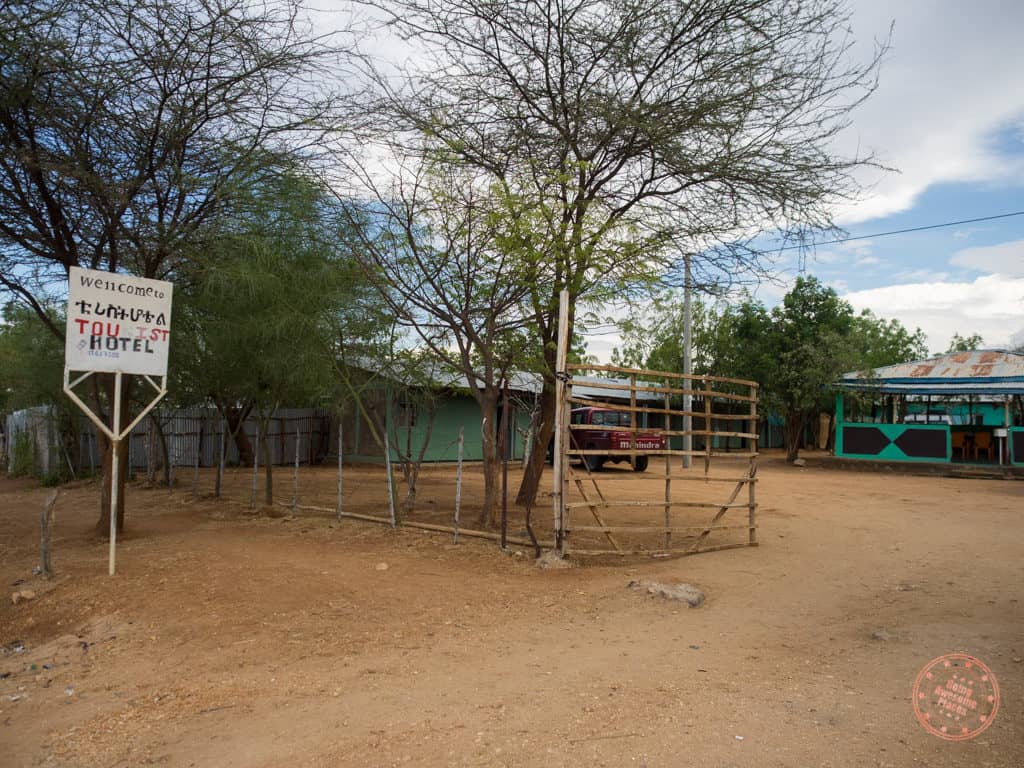
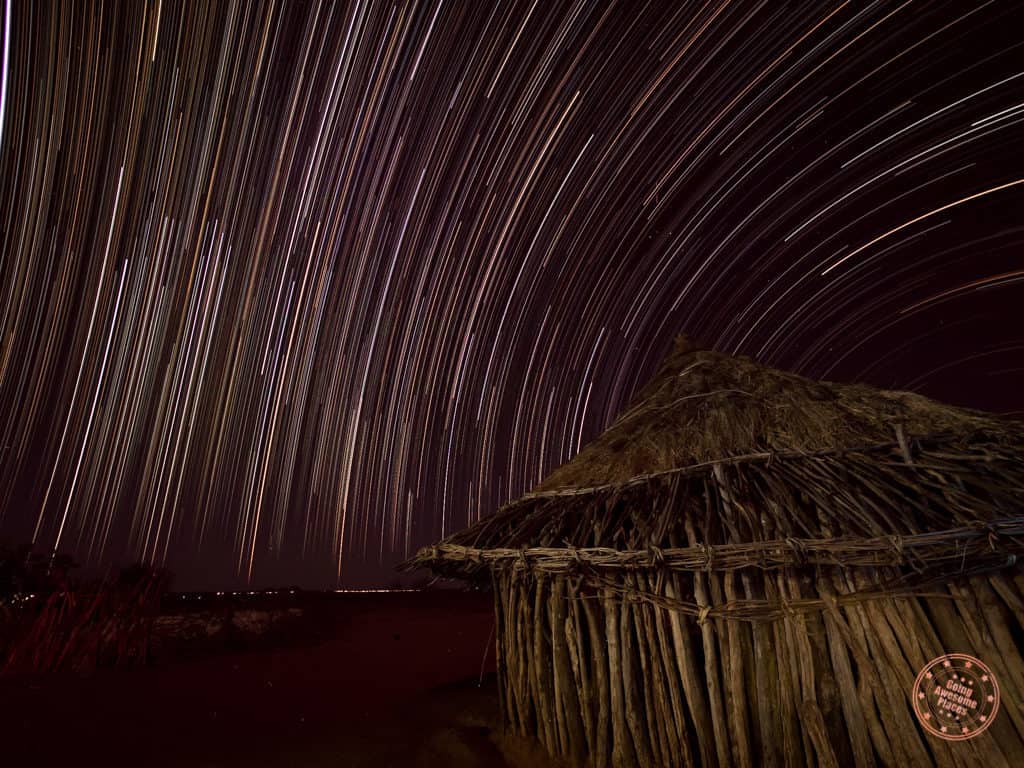
We made our way back to Turmi that evening and ate dinner at the Tourist Hotel. To close out the night, we drove into Kala and Ayke’s family’s village (of the Hamar tribe) to stay the night. We sat by the campfire with the children of the family and sang songs we didn’t know the words to and others we tried to teach to them. The light show put on by the stars that night was truly remarkable too. The Milky Way had never been clearer up until that point.
Day 8 – Last day in Omo Valley

We didn’t know it at the time but our 8th day in Omo Valley was to be our last full day in our Ethiopia itinerary. I caught another brilliant sunrise just as the village was starting to come alive with the sounds of daily routine.


This particular morning was special because instead of being in a rush to pack up and go, we had the opportunity to spend a good hour inside Kala’s home sipping on coffee husk tea, which turned out to be the home of the second wife of the family.
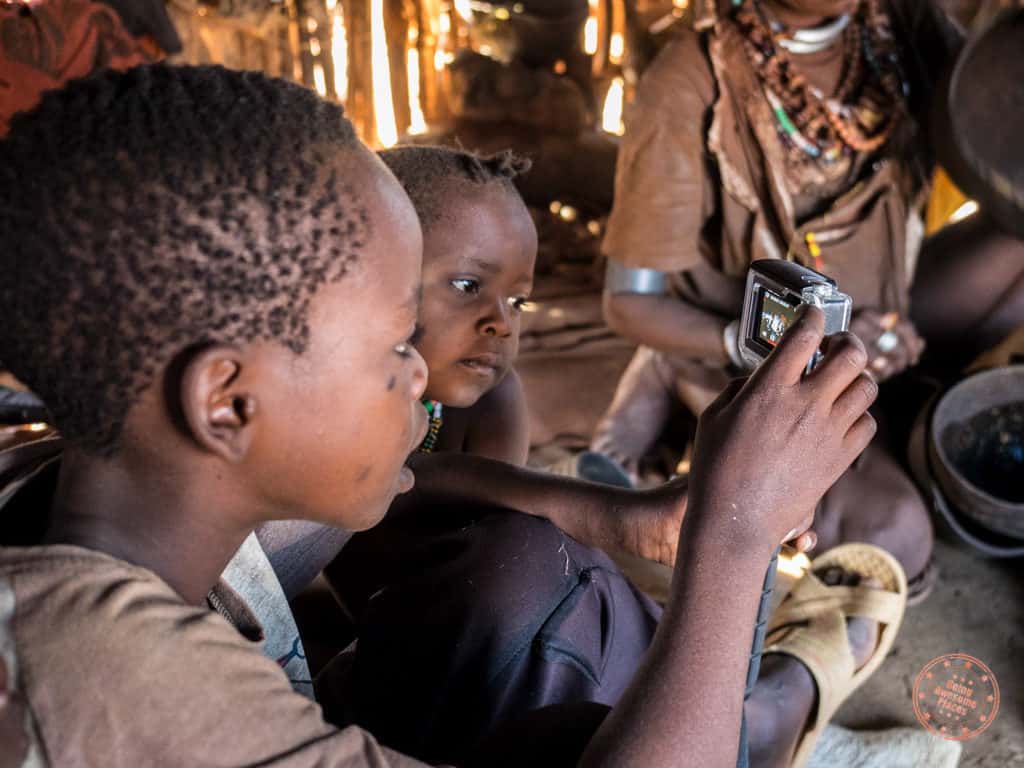
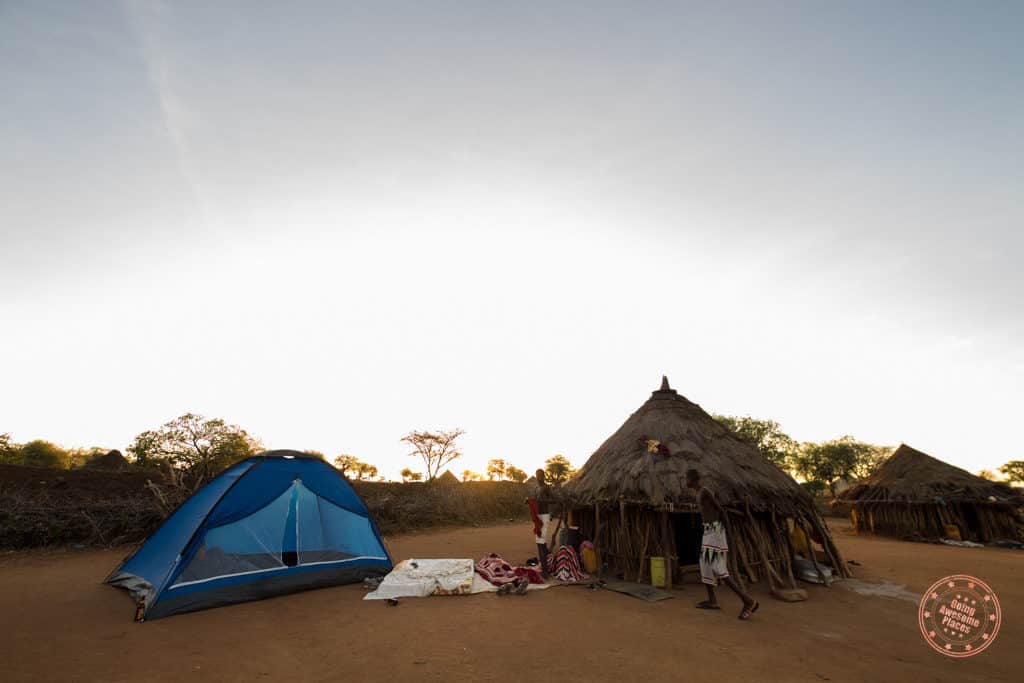
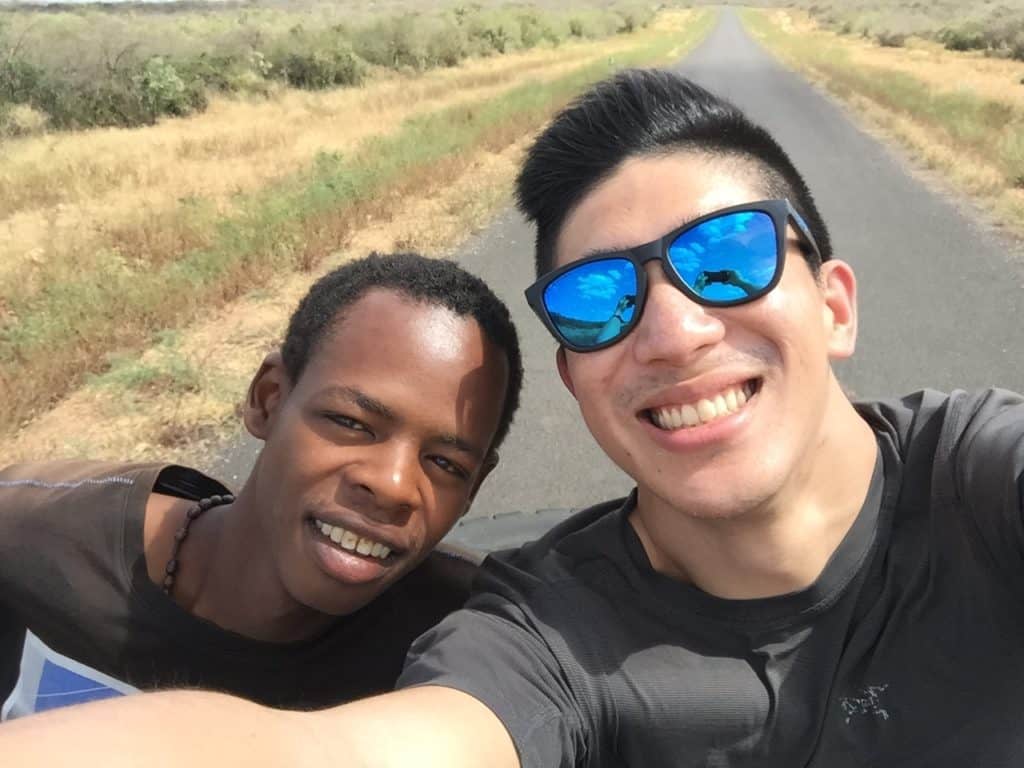
Our one tribe for the day was the Dassenech and this one was much further out than the others we had explored so far through our Ethiopia itinerary. While the trip itself was quite long, the majority of that road to the Southeasterly town of Omarate was newly paved. Feeling particularly wild that day, we asked if we could sit on the roof of the 4×4 for part of the way there and so we did!
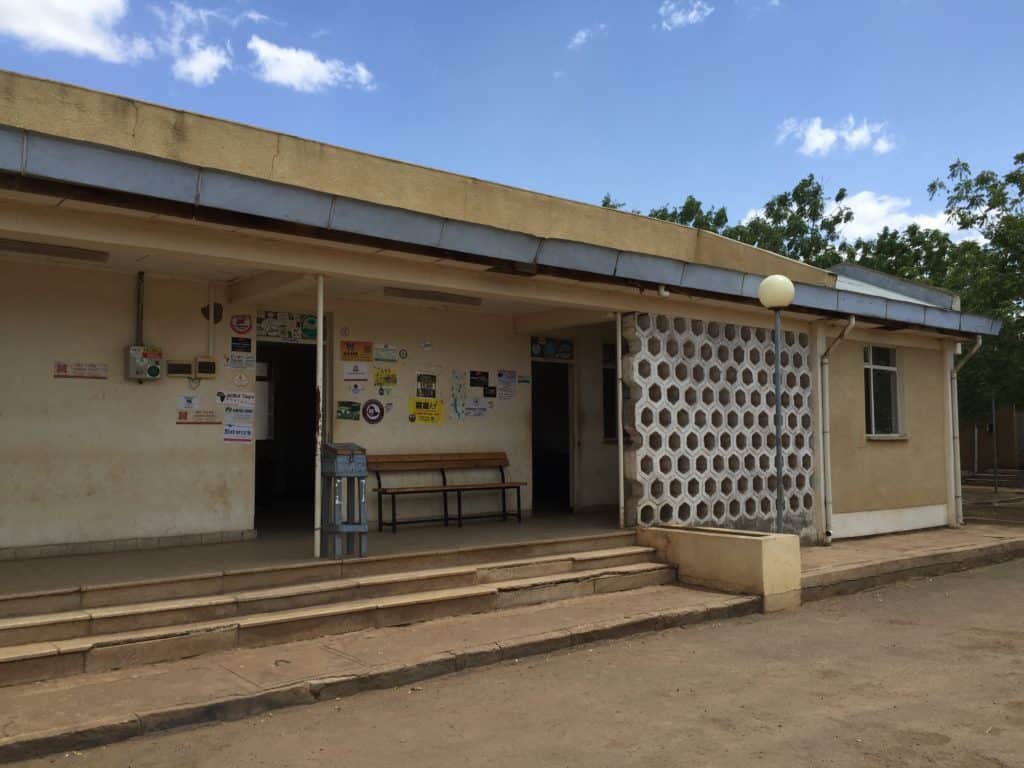
Once we got to Omarate, we went through a customs process and had to present our passports in an office where our details were written in a big ledger book. Things are a bit more dicey in this area since it’s REALLY close to the border of Kenya and South Sudan. There wasn’t any sense of danger at all but you definitely do feel a little more paranoid.
From there we pulled up near the Omo River which passes through the town and met our local guide. We were originally planning on crossing the river to the Dassenech tribe village but apparently, they had become increasingly aggressive towards tourists so guides had been taking visitors to a different village. We drove a little further down to another river crossing where there were already a number of other empty 4x4s from another large tour company.
As soon as we got there, we were already being bugged for “Highland Highland!” This was something that had been happening throughout the trip. Tribes asked for “Highland” because that was the first water bottle brand they were introduced to so every time they shouted for it, they wanted our empty water bottles for them to use as containers.

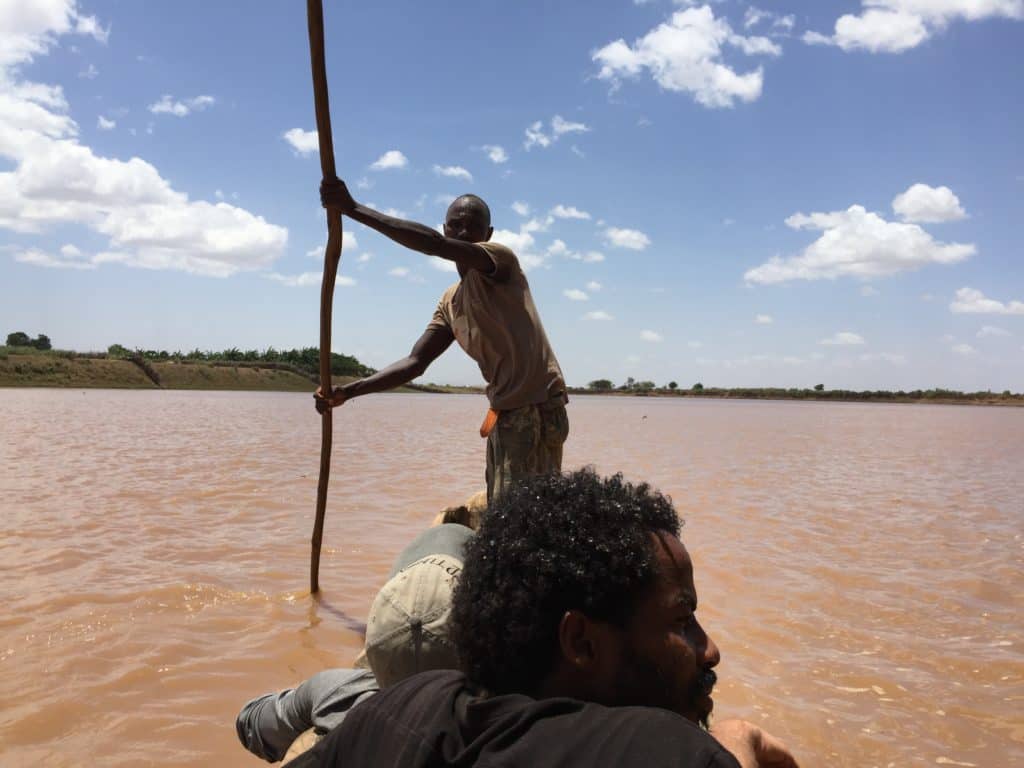
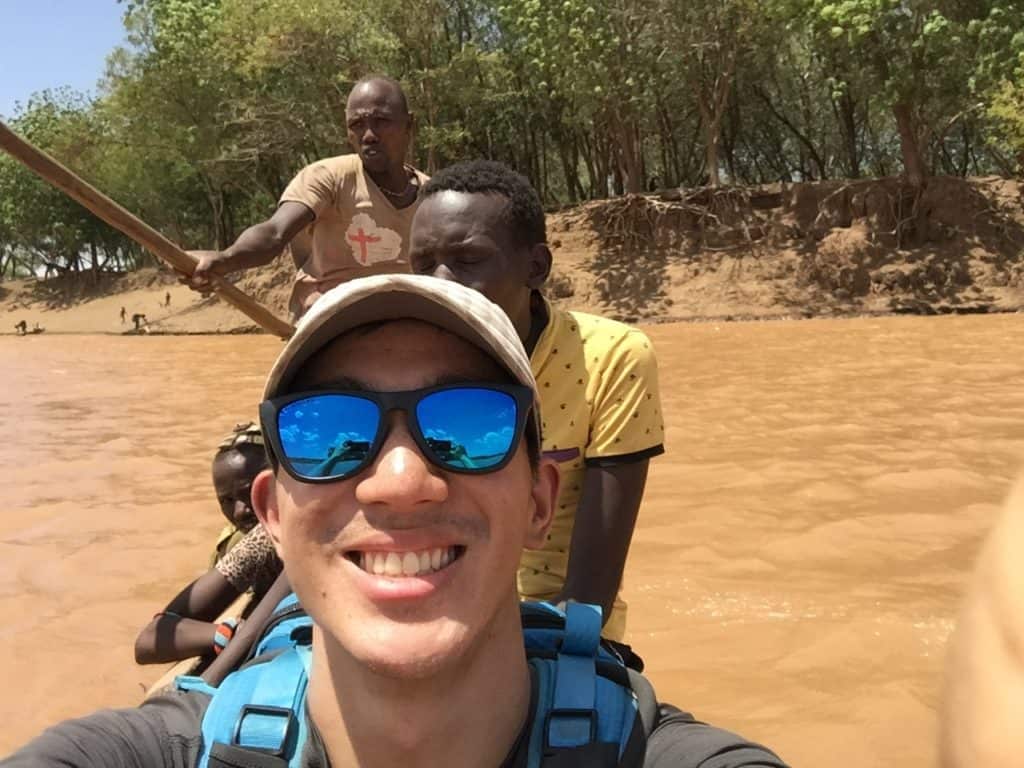
The river crossing was quite interesting as we were transported in canoes locally made out of a single tree trunk. To cross the muddy waters of the Omo River, our navigator used a long wooden branch to dig into the riverbed to propel us forward.
Once on the other side, we were in Dassenech territory and we were quickly surrounded by a large horde of children that attached themselves to us as an entourage.


Crossing a small forested area, we then opened into a flat and desolate plain where it felt like we were transported into what looked like a dystopian, post-apocalypse world with corrugated metal lining the dome-shaped huts of the Dassenech.
Nomadic like many of the other tribes in the Omo River region, there was still a semblance of community and hierarchy, but this may have been the most spartan out of all the tribes we visited.
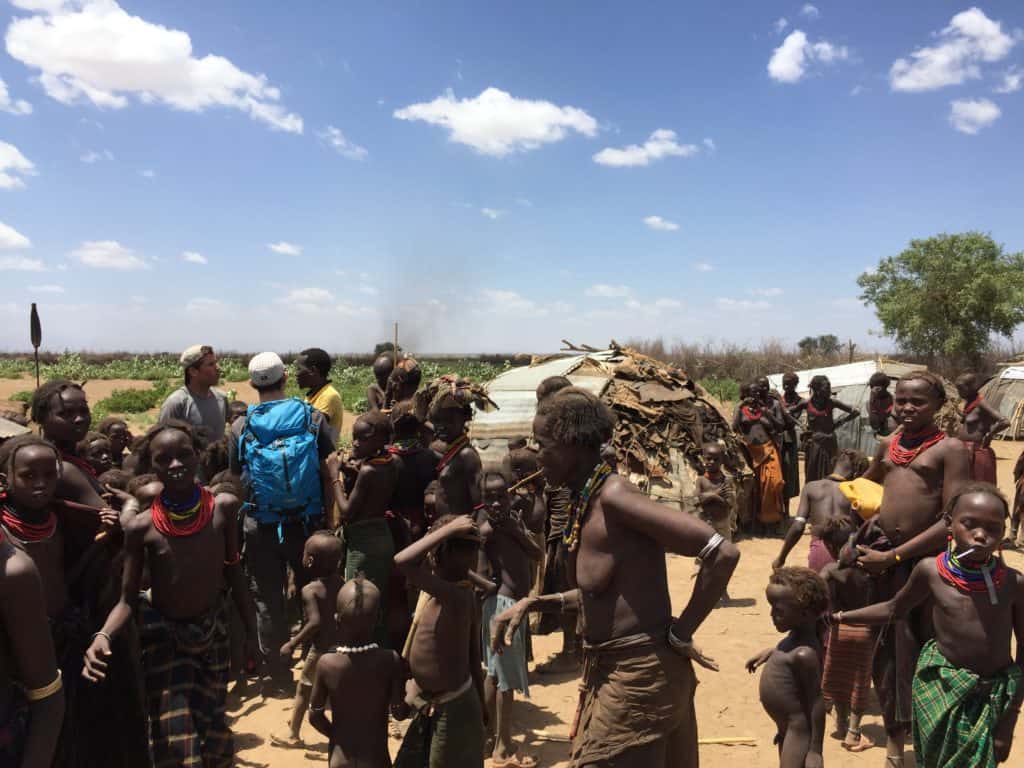
We didn’t last too long here and were asked if we wanted to continue further along a longer route. After walking around randomly filming with my GoPro and trying hard to avoid the “photo…photo!” yelling, it was just too hot to handle it there without any shade.
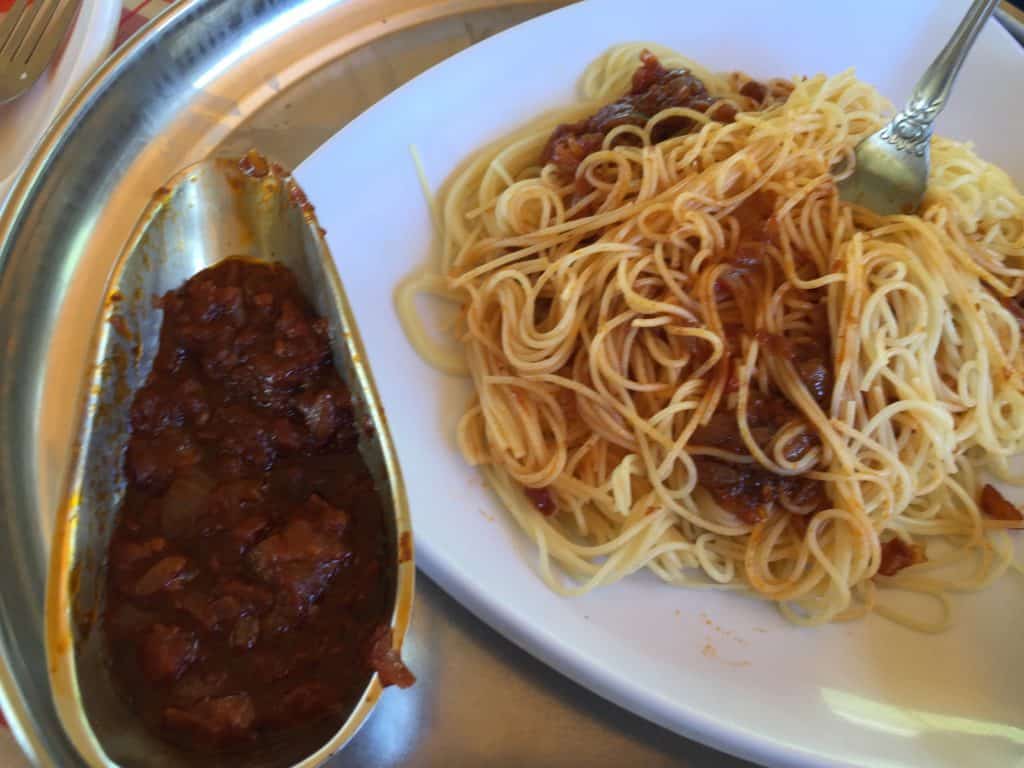
We arrived back to Turmi at around 3PM for a late lunch. At this point I could barely stomach anything and the “pasta” they served at the Tourist Hotel wasn’t doing me any favors. Rural foods were taking their toll on my digestion!
This was also the turning point of the trip. Steve, my travel partner, approached me around 4PM about this crazy idea to ditch the rest of our Ethiopia itinerary plans and go to Egypt. We discussed it long and hard and I was inclined to agree with the rationale behind the change. Ultimately we felt that the romanticized view of what we had of Omo Valley tribes had been achieved and that if we were to continue onwards with more tribes, it would be more or less the same experience of going there, walking around, meeting a few tribe members and being bugged for photos. As lovely as it had been, we were fairly exhausted.
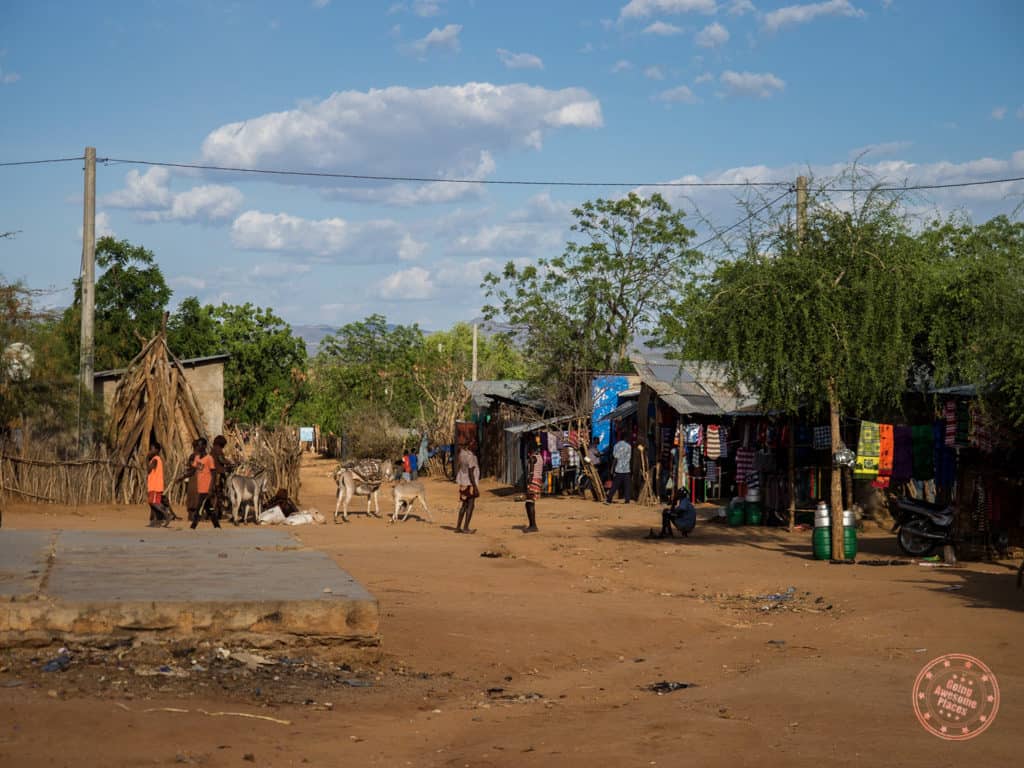
Before telling our guides we walked around the local Turmi market. Contrasted to the Dimeka market a few days earlier, this one was quite a bit smaller, although that may have been due to the fact that all of the Hamar were gone and the locals were getting ready to pack up shop.
We broke the news to our guides at 5:40PM. They of course were caught by surprise but with my quickly deteriorating stomach issues coupled with our last-minute change in itinerary, they were obliged to follow considering we were still going to pay the promised amount.
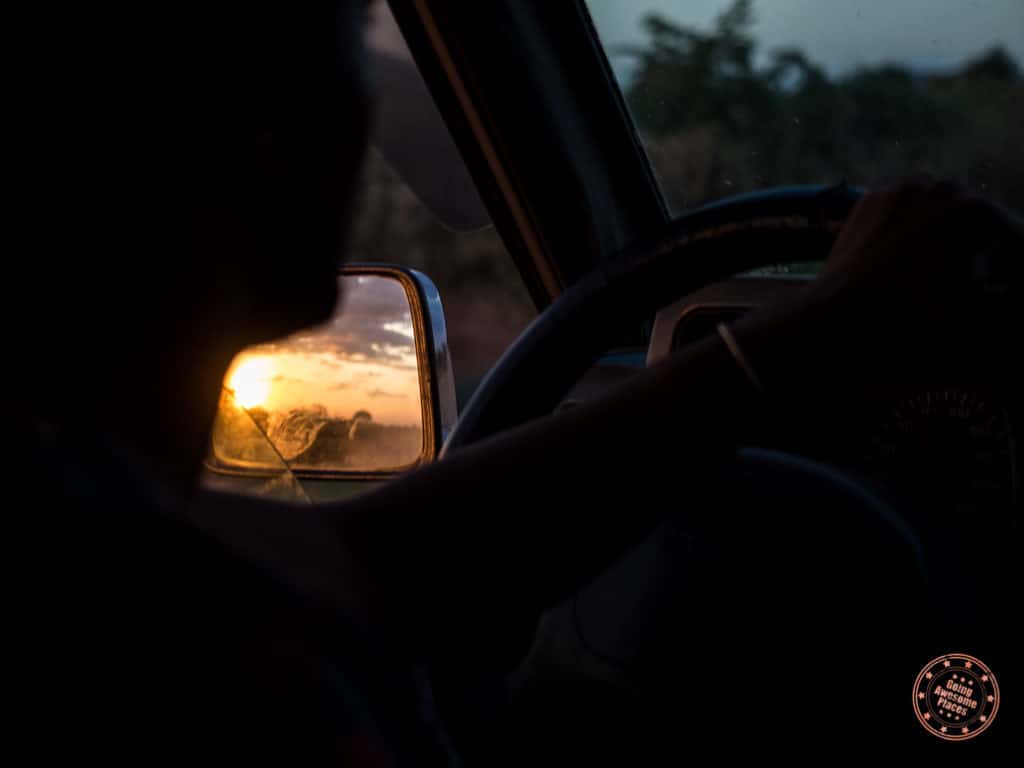
Our driver started flying down the dirt roads out of Turmi towards Arba Minch but we knew we weren’t going to make it because both headlights weren’t working. With the sun going down at this point we stopped at Key Afer at 7PM.
That evening was a bit of a nightmare because it was a scramble to try to get all of our gear in order (hand-washing clothes in a place with no running water), and get things charged, and I still couldn’t stomach anything and felt quite ill.
TIP:
None of my existing medication was working at this point which included Pepto Bismol and Gravol. Luckily Steve had Cipro on hand and so I switched to this antibiotic over the over-the-counter medication I brought from Canada. It’s hard to say if that’s what helped me heal in the long run but I was willing to do whatever it took to get better. There certainly wasn’t any medicine to buy there so I’m glad Steve had packed the Cipro from the US.
Day 9 – Rushing back to Arba Minch
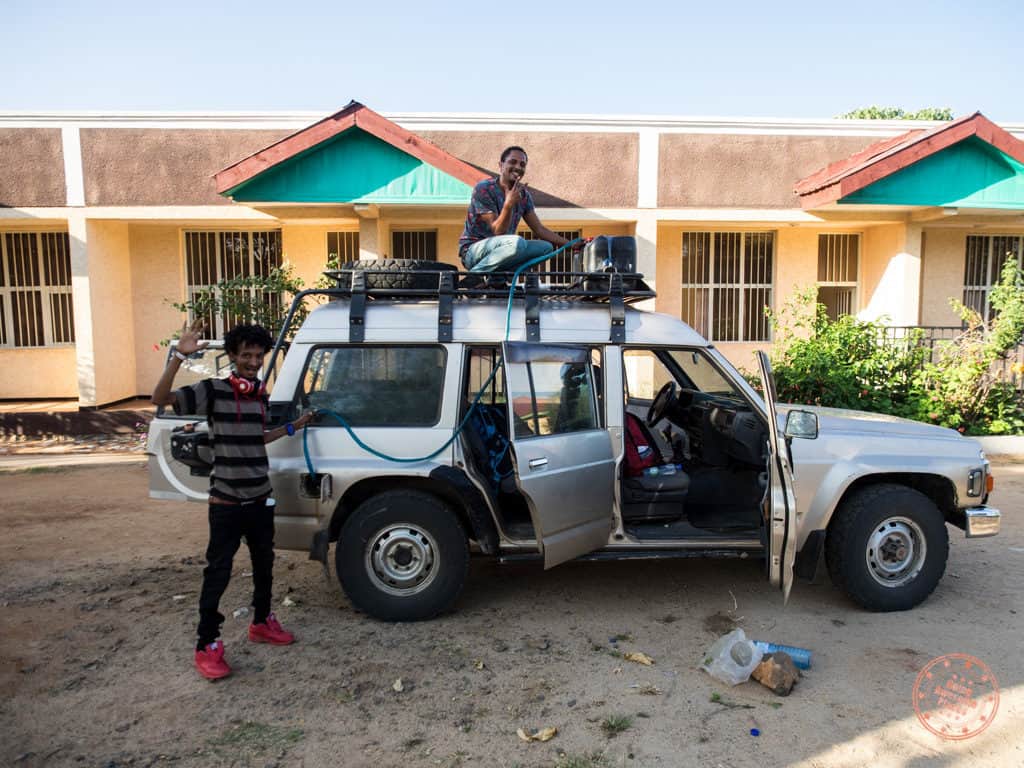
The next morning the race was on to get back to Arba Minch. The good news was that our flight was departing at 3PM, so it wasn’t a ridiculous rush, but our driver drove as aggressively as ever.
We stopped in Konso to pick up some breakfast and that’s where Melak helped me buy a kilo of raw coffee beans to bring home.
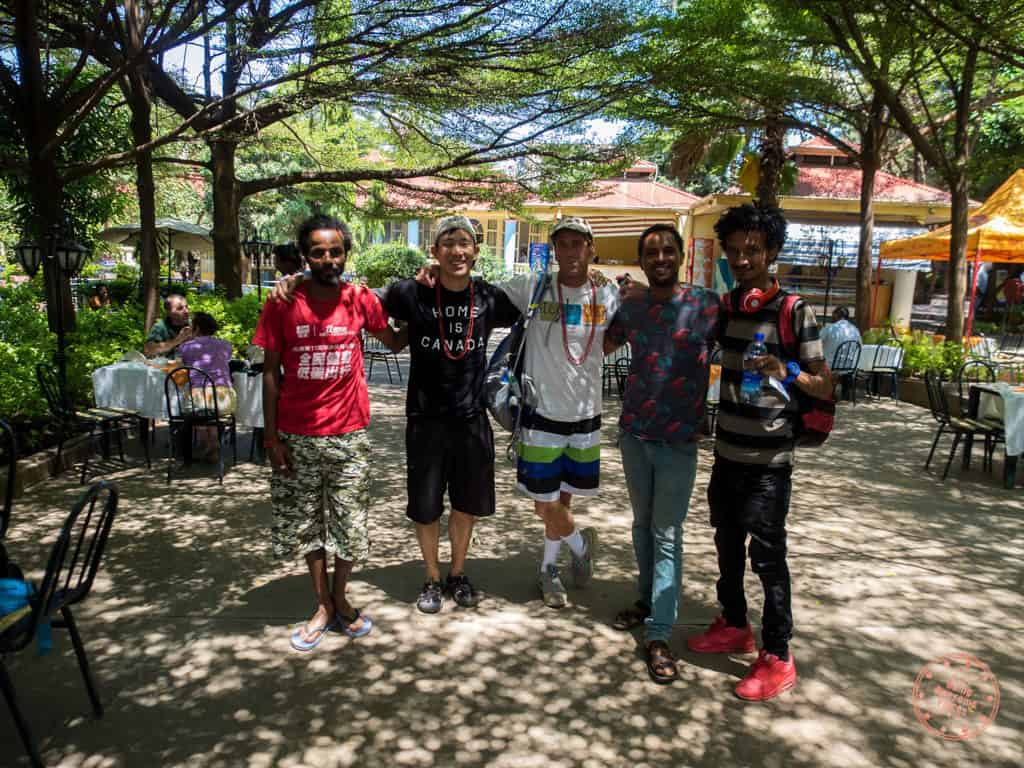
We got back to Arba Minch and hung out with our guides at the same restaurant we ate at when we first started the journey until we needed to be at the airport.
We landed in Addis Ababa around 4PM and, just like that, our Omo Valley adventures were over. It was definitely an odd feeling to be yanked out in such an unexpected fashion, but part of me was glad that things would get more comfortable on the second leg of the trip and that I’d be able to heal up.
Since our flight out to Cairo wasn’t until 10PM that night, we ended up going to the Hilton Addis Ababa to get organized and use their free wifi. We meet up with Melak and Solomon at Yod Abbisinya, a cultural restaurant mainly for tourists, but a great place to watch traditional Ethiopian singing and dancing. It was great to see our guides one last time and officially say goodbye.
Suggested Activities To Add To Your Ethiopia itinerary
While we hired private guides, there are several other tours available over a range of different times/days. Below are a few we found that would be worth looking into if hiring private guides isn’t for you:
- Addis Ababa: Guided City Tour – get picked up directly from the airport or your hotel and enjoy a day of sightseeing all the city’s top attractions, including the National Museum of Ethiopia, and seeing the 3.5 million year old skeleton Lucy, known as the grandmother of humanity. This tour is a great starting point to visit Ethiopia.
- Taste of Ethiopia – a guided tour through local’s favorite places to eat and a great learning experience of the unique culinary culture here.
- 3 days, Arba Minch and Dorze – a guided tour through Dorze, Arba Minch, Nechisar National Park, a boat tour on Lake Chamo and a coffee ceremony!
- From Jinka: Omo Valley Tribe 3-Day Tour – 3 days meeting indigenous Omo Valley tribes of Ethiopia with a guided tour.
- Omo Valley Tour: Discover unique 0 century tribes culture – camp out and experience living like the Mursi and other tribes from Mago National Park.
- Four Days Omo Valley Tribal Tour From Jinka – visit 6 different tribes and explore tribal markets over 4 days, this can be done as the main focus of your Ethiopia itinerary.
More On Ethiopia
The Omo Valley is just a small part of Ethiopia, we just touched the start of what there is to explore. You could spend some time in Bahir Dar, and visit millennia old Axum and Gondar, visit Lake Tana and the Blue Nile Falls , climb the Ethiopian Highlands in the Simien Mountains National Park, and there are even monasteries and the rock-hewn churches of Lalibela to discover.
If you’re looking for a more traditional guide, make sure to pick up a Lonely Planet guide here:
So there you have our entire itinerary in Ethiopia from start to end. I know there’s a lot to take in so if you have any questions for me about planning your own trip to the Omo Valley, don’t hesitate to drop a comment below.
Frequently Asked Questions
This is the safest region of Ethiopia to travel to. Be cautious of pickpocketing and always aware of your surroundings, but if you are traveling with a good guide, Omo valley is generally safe.
Best time of year to travel to Ethiopia is between the months of October to May. This is when the weather is usually warm and dry.
There are 8 different tribes in the Omo Valley. The Mursi tribe is the one most tours will focus on, but if you’d like to visit the tribes and villages lesser known it is recommended to hire private guides.
Spend a couple of days either at the start or the end of your itinerary to adjust to Ethiopian life. There are some great historical things to see, such as Lucy, the millennia old skeleton.
June, July and August is the rainy season. If you plan to travel during this time expect heavy rains and inaccessible roads.
What you should read next
Travel Resources For Your Next Trip
If you’re in the process of planning your trip and putting together your itinerary, these are genuinely the best resources that the Going Awesome Places team stands by 100%.
Credit cards: Don’t get burned by hidden fees on top of terrible exchange rates. When we travel now, we use the Wise Card. Simply load it with the currency you need before you go and use it as a regular VISA or their digital wallet card. Use their free app to track how much you have and top up when you need to.
Flights: Of all the booking search engines, Skyscanner is the most helpful and easy to use thanks to their Everywhere feature. Kayak is also another that’s we will often check as well.
Car Rental: If you’re looking to save money, these car rental coupon codes will be a true game-changer. Otherwise, DiscoverCars and RentalCars are great places to start.
Airport Parking: You’ll need a spot to leave your car at the airport so why not book a spot at a discount. Use code AWESOME7 to get at least $5 off at Airport Parking Reservations or Park Sleep Fly packages.
Data: We’ve been a huge fan of wifi hotspot devices like PokeFi because their rates are so good and you can use it globally but recently, we’ve really loved using eSIMs. The best one is Airalo. Save money by getting region-specific eSIMs and use referral code WILLIA9500 to get $3 USD credit on your first purchase. Ubigi is another one that we’ve had success with where they uniquely offer 5G coverage. Use code AWESOME10 to save 10% on your first order.
Hotels: Our go-to is Booking.com because they have the best inventory of properties including hotels and B&Bs plus they have their Genius tier discounts. The exception is Asia where Agoda always has the best prices. TripAdvisor is also useful for reviews and bookings.
Vacation Rentals: Your first instinct will be to check Airbnb but we always recommend checking VRBO as well if you’re looking for a vacation rental.
Tours: When planning our trips, we always check both Viator and GetYourGuide to at least see what’s out there in the destination that we’re going to. They often have different offerings and prices so check both.
Travel Insurance: Learn how to buy the best travel insurance for you. This isn’t something you want to travel without.
- Insured Nomads – Popular insurance provider for frequent travelers and comes with great coverage and special perks.
- RATESDOTCA – Search engine Canadians looking for the cheapest insurance including multi-trip annual policies.
- SafetyWing – A perfect fit for long-term nomads.
- Medjet – Global air medical transportation.
- InsureMyTrip – Best for seniors, families, and those with pre-existing conditions.
If you need more help planning your trip, make sure to check out our Travel Toolbox where we highlight all of the gear, resources, and tools we use when traveling.
Discover more from reviewer4you.com
Subscribe to get the latest posts to your email.
